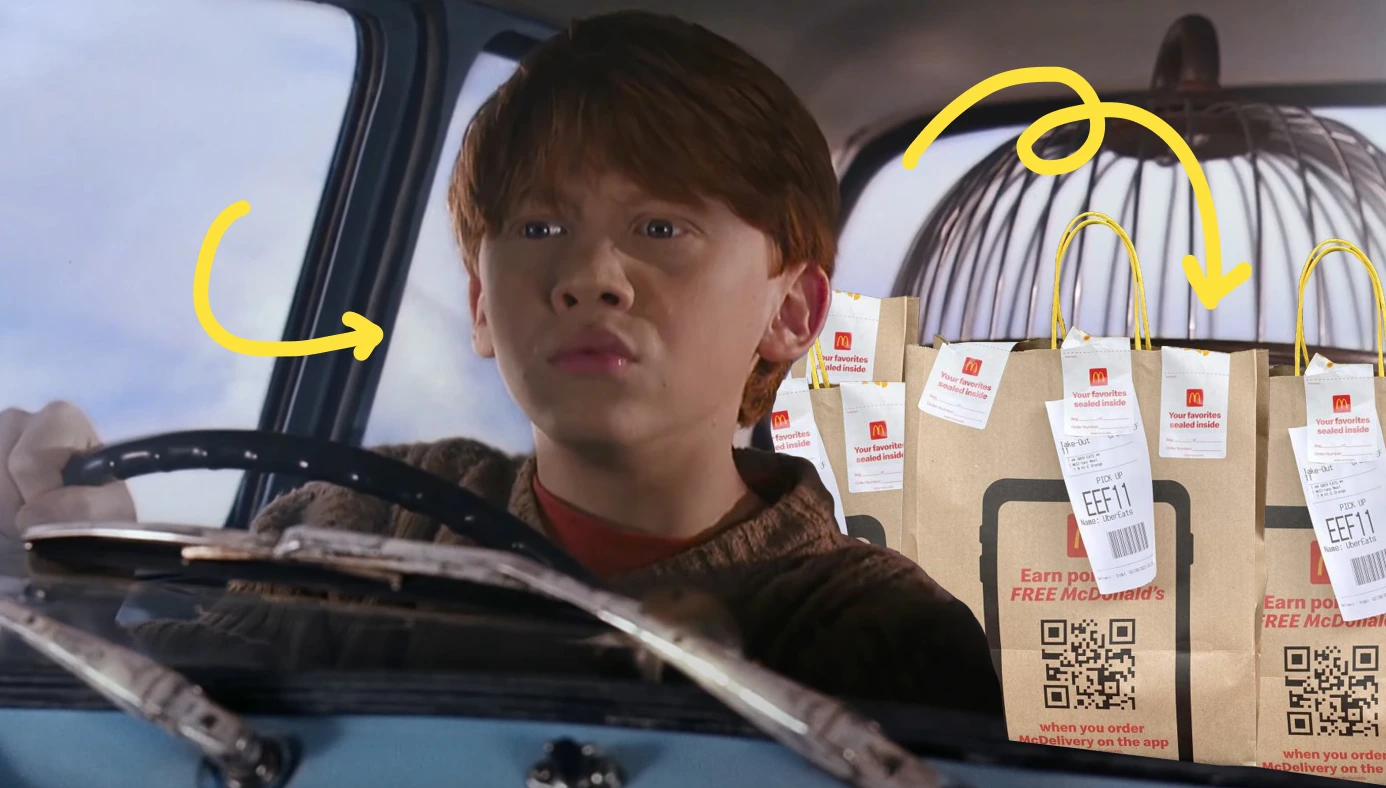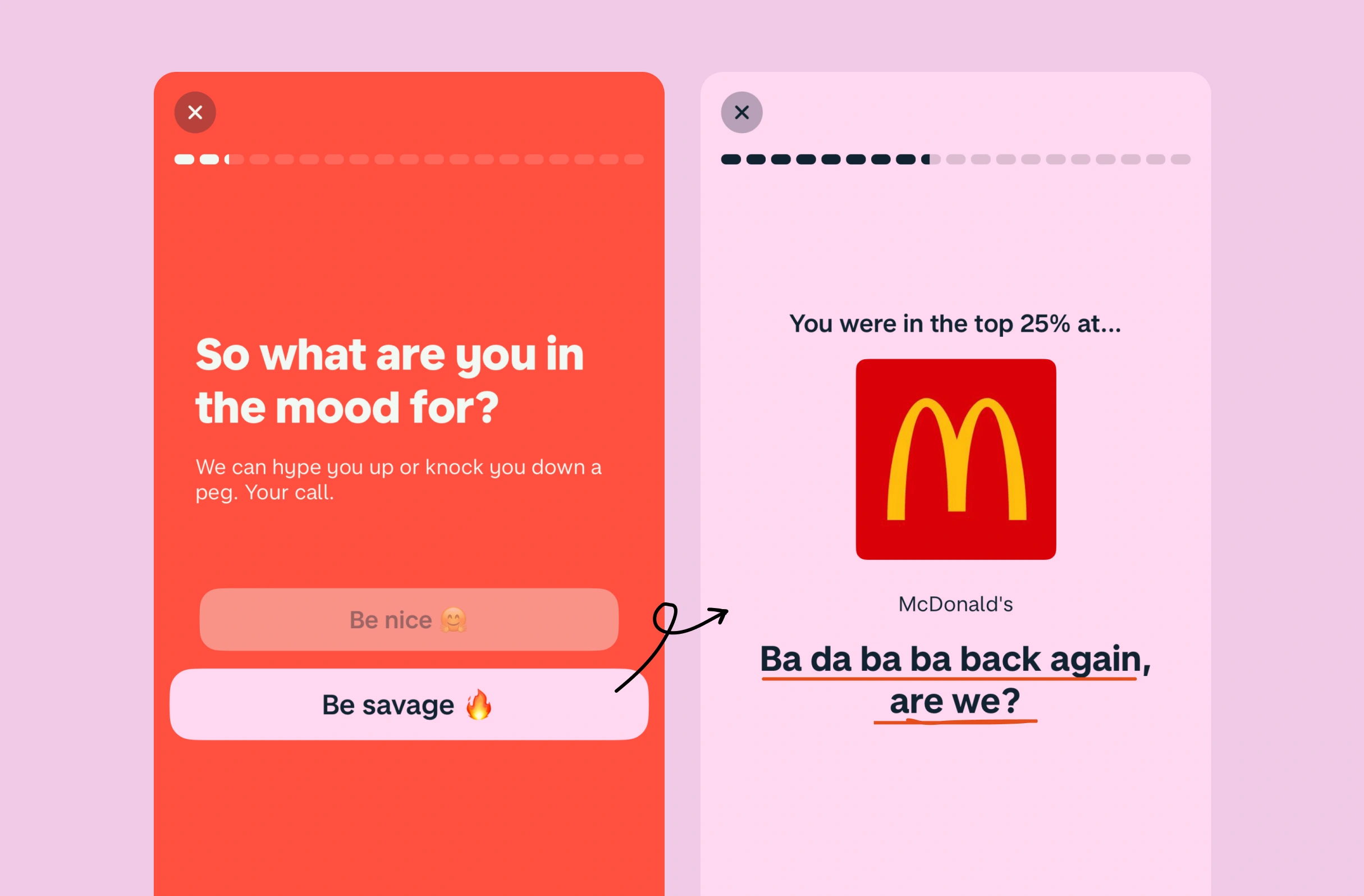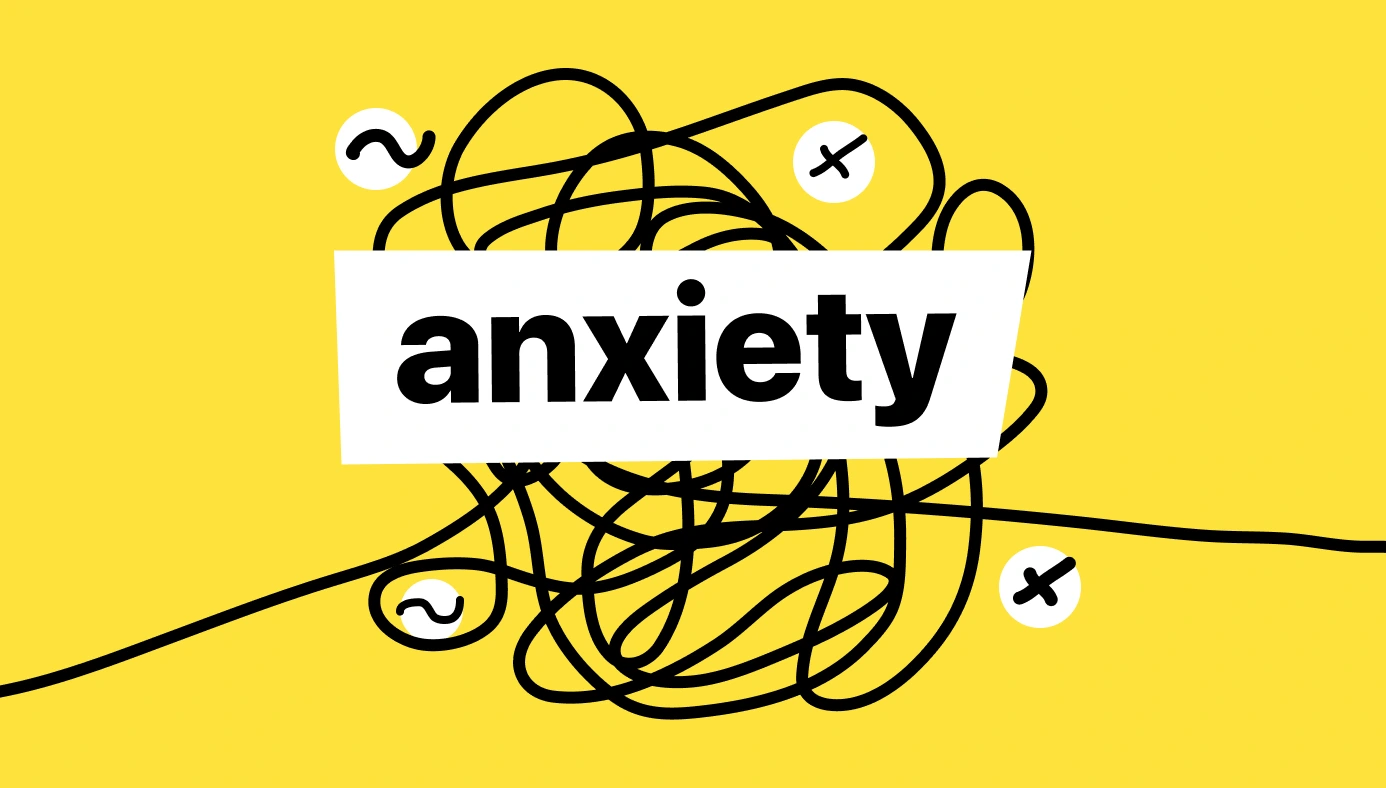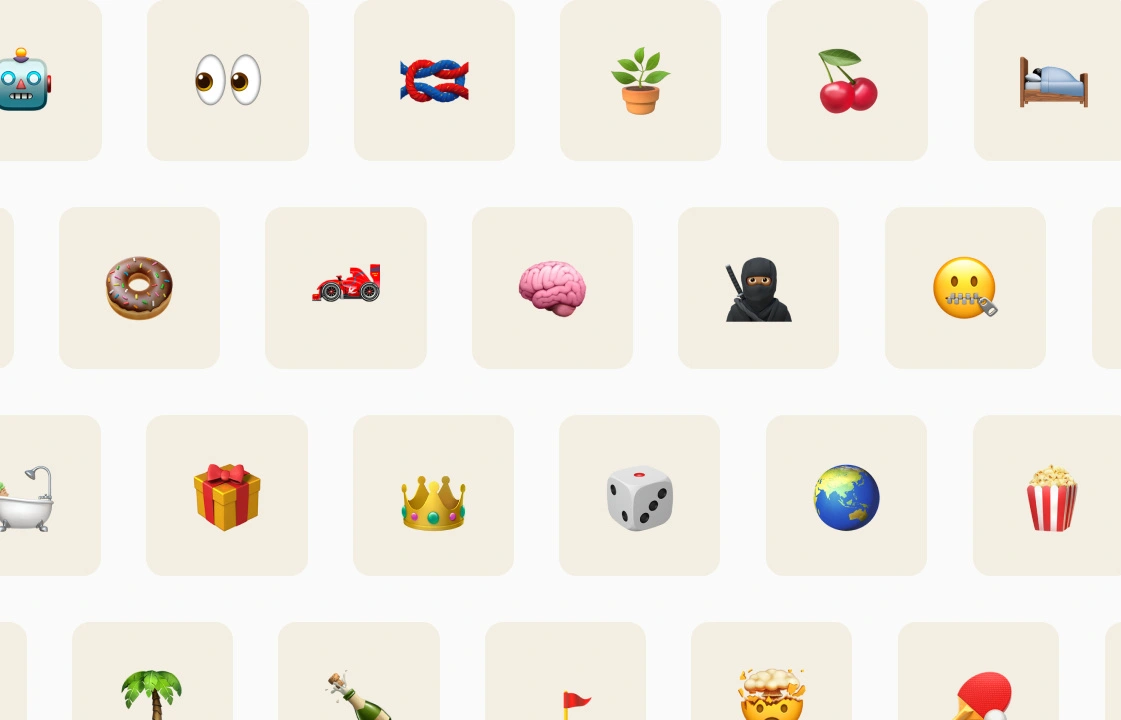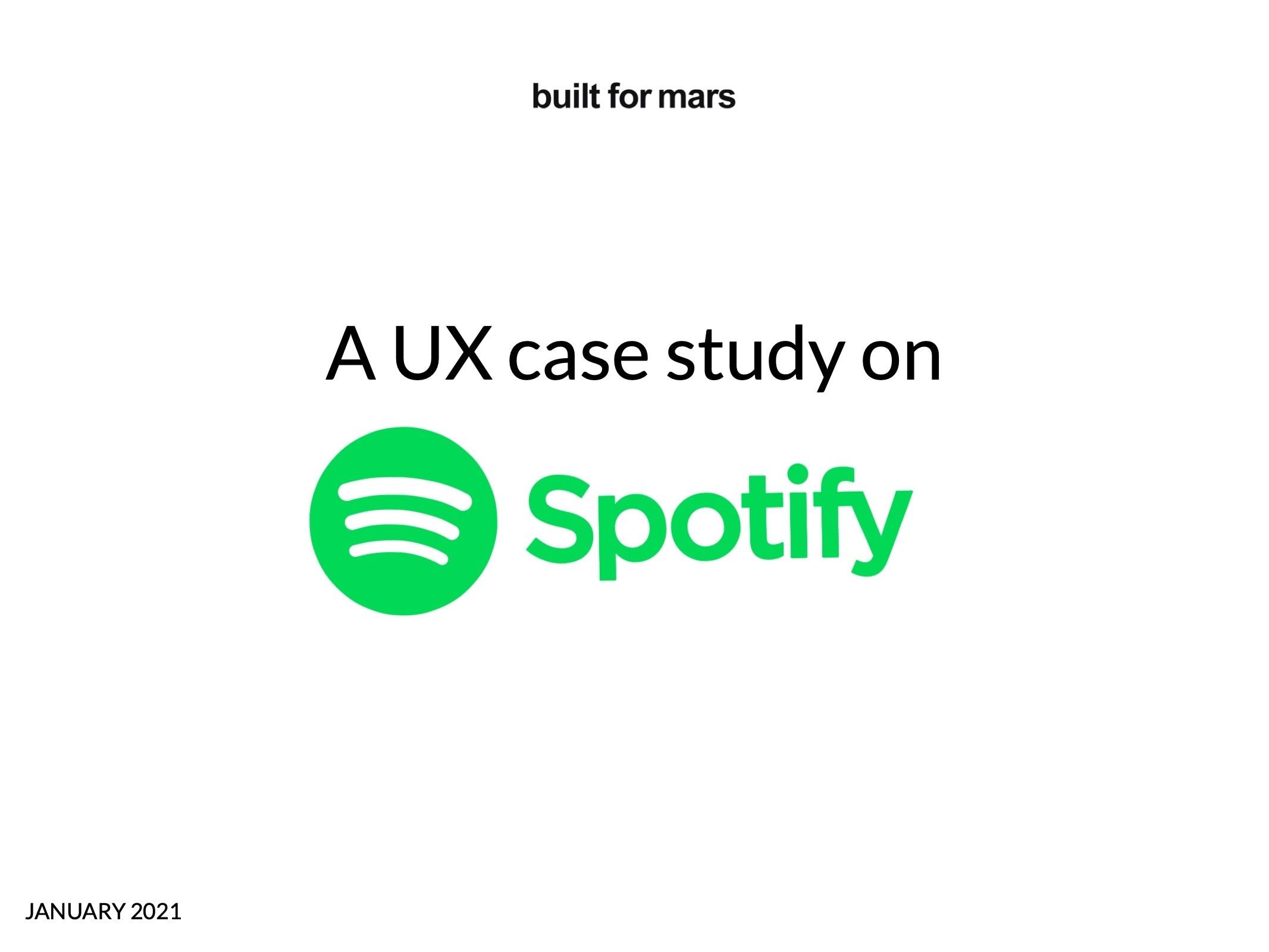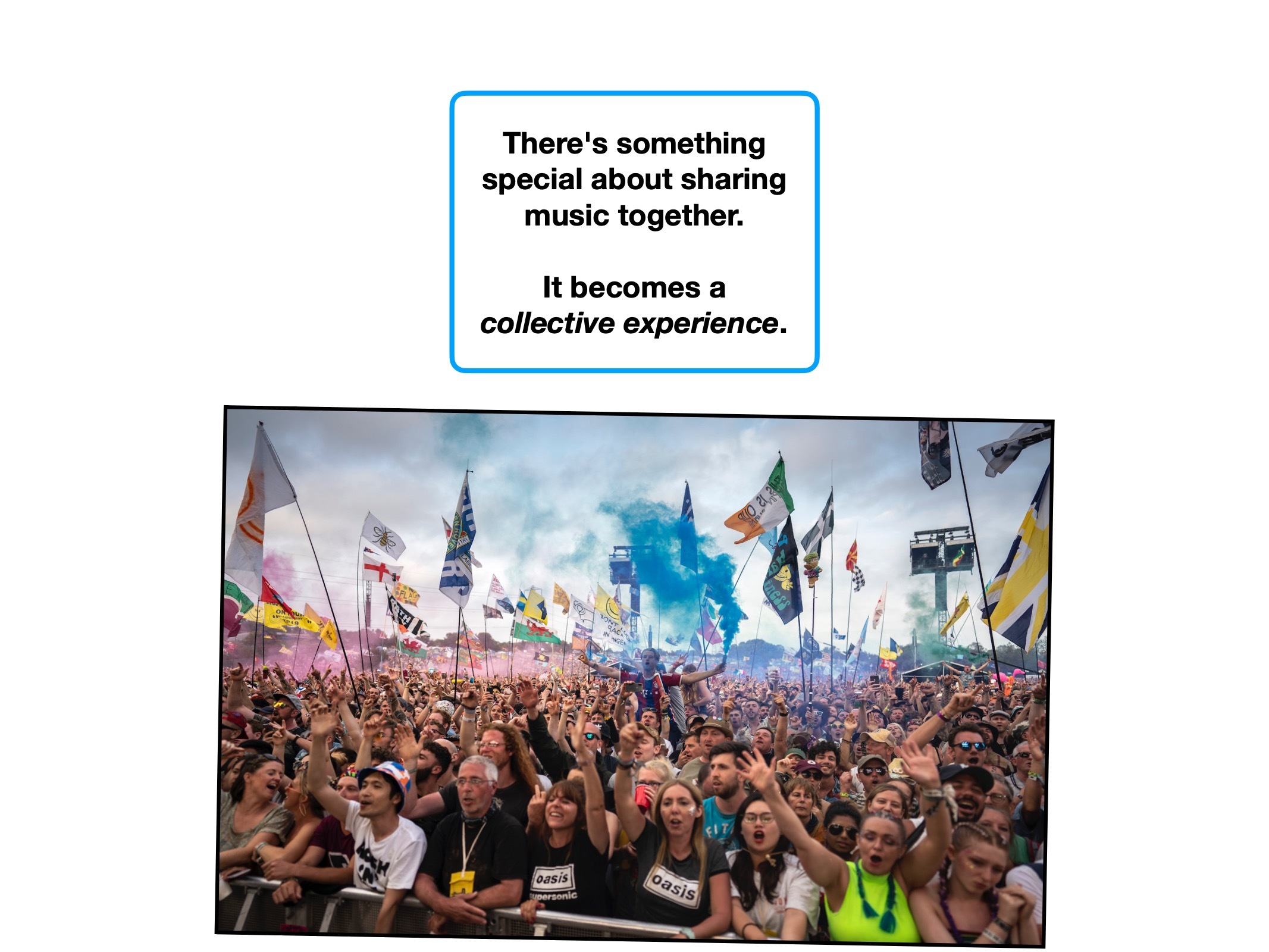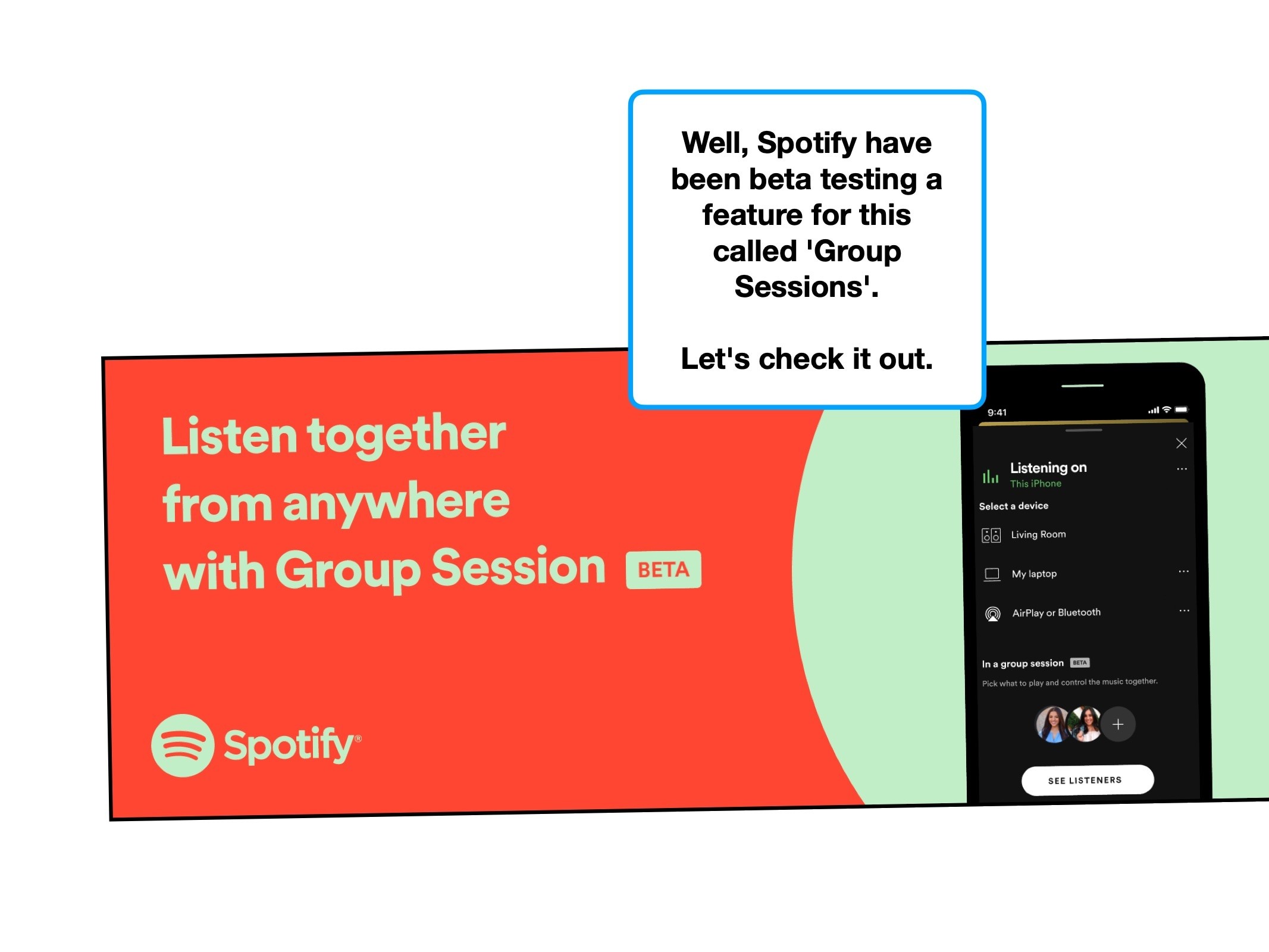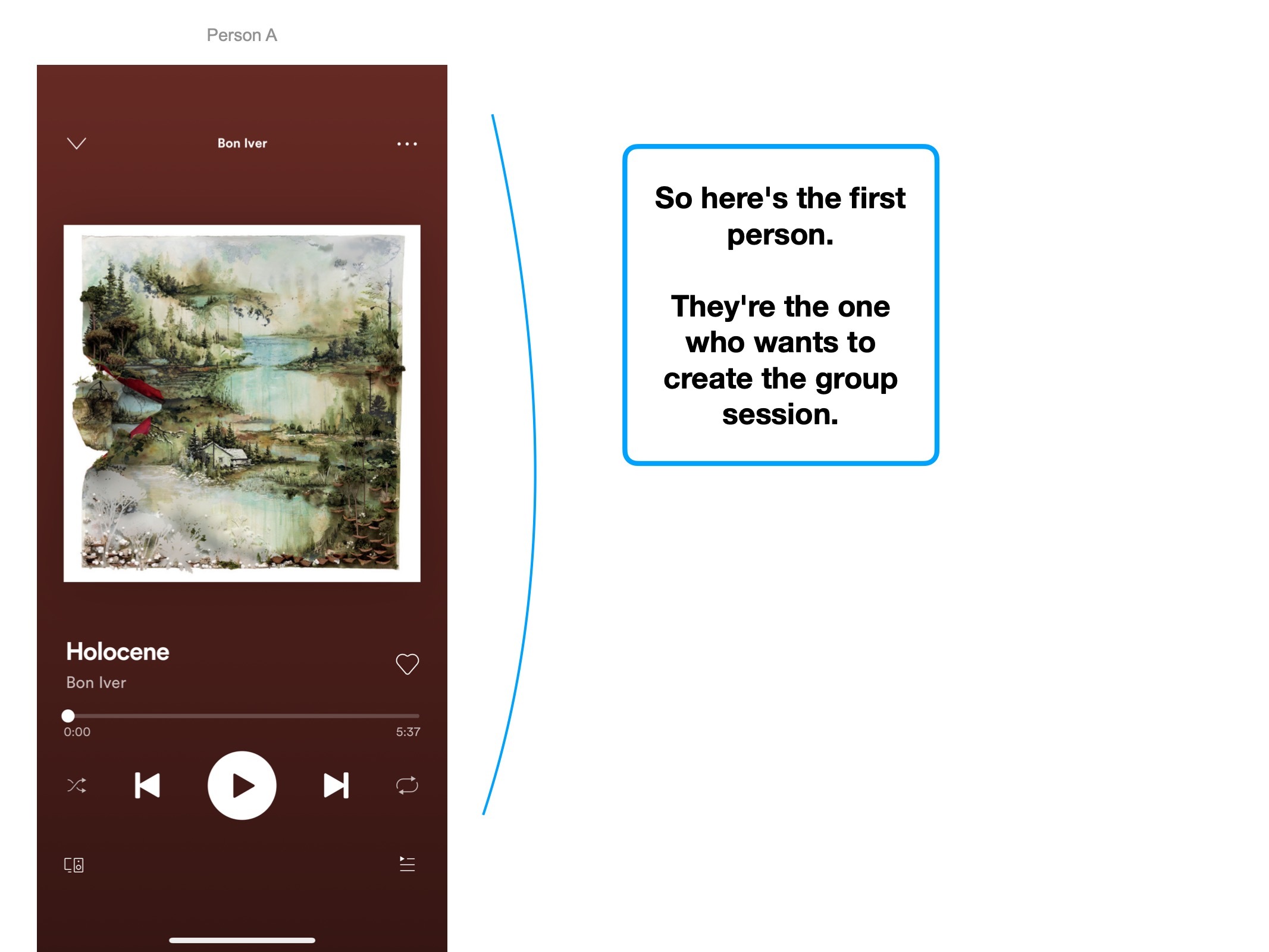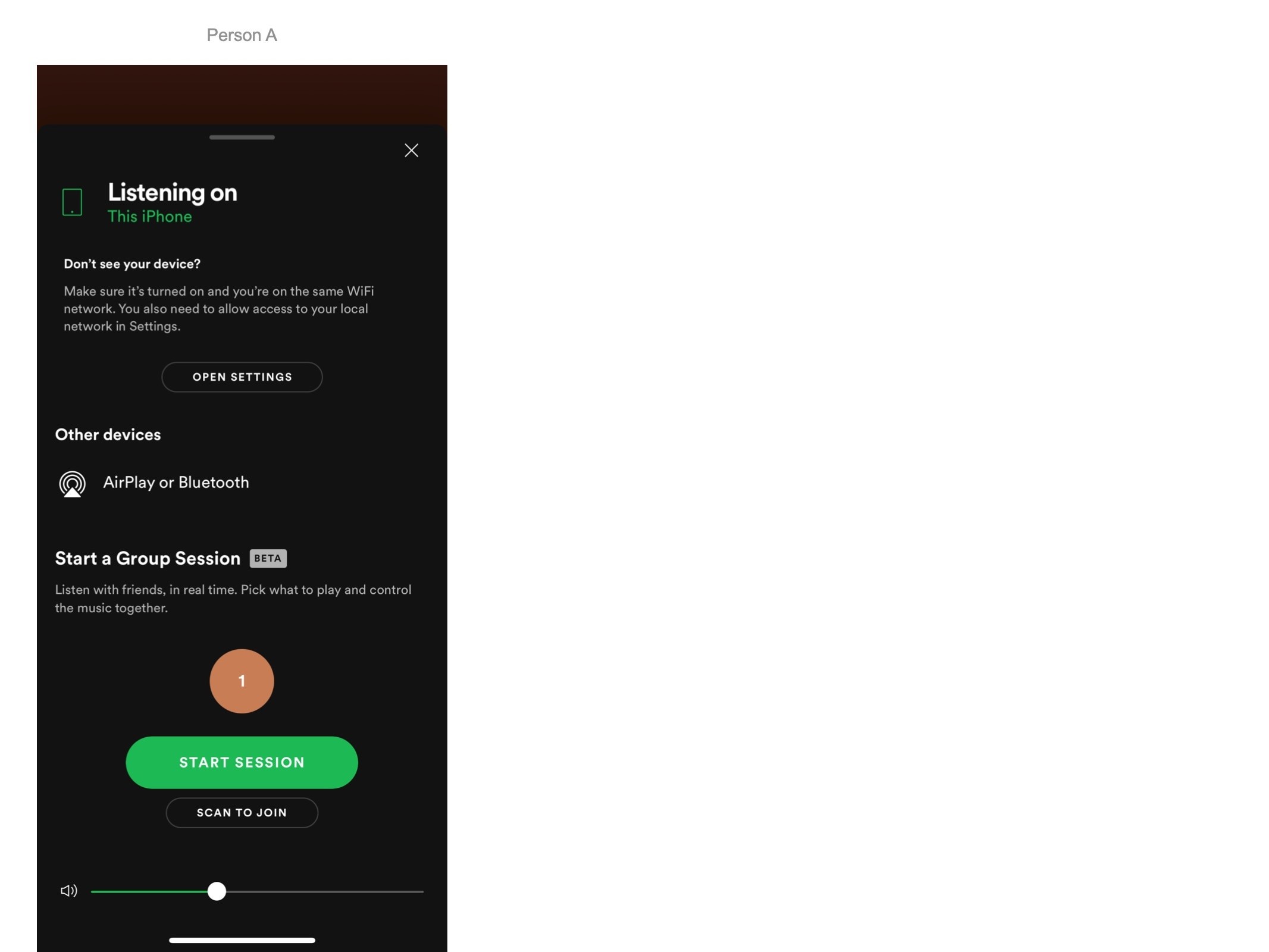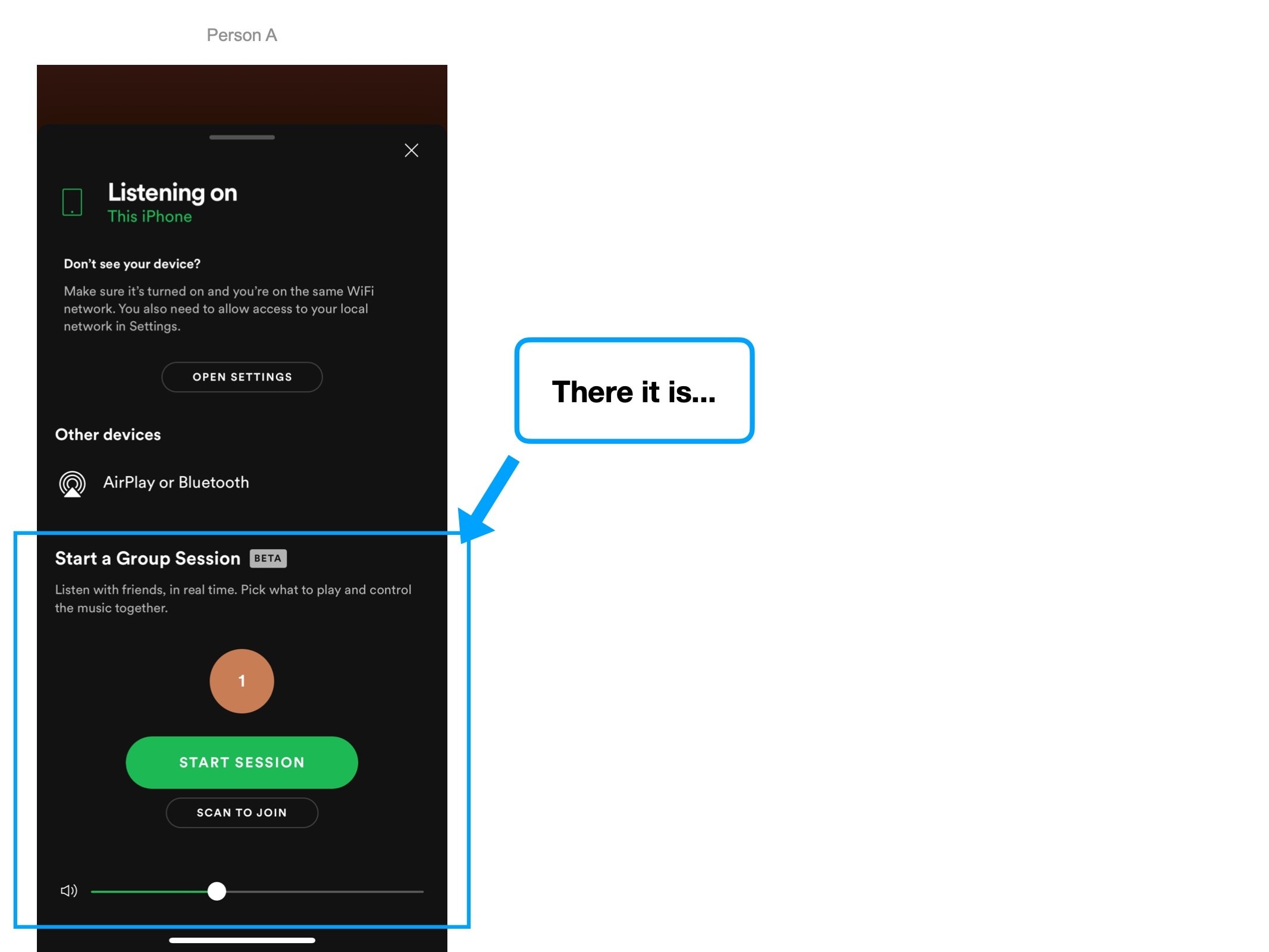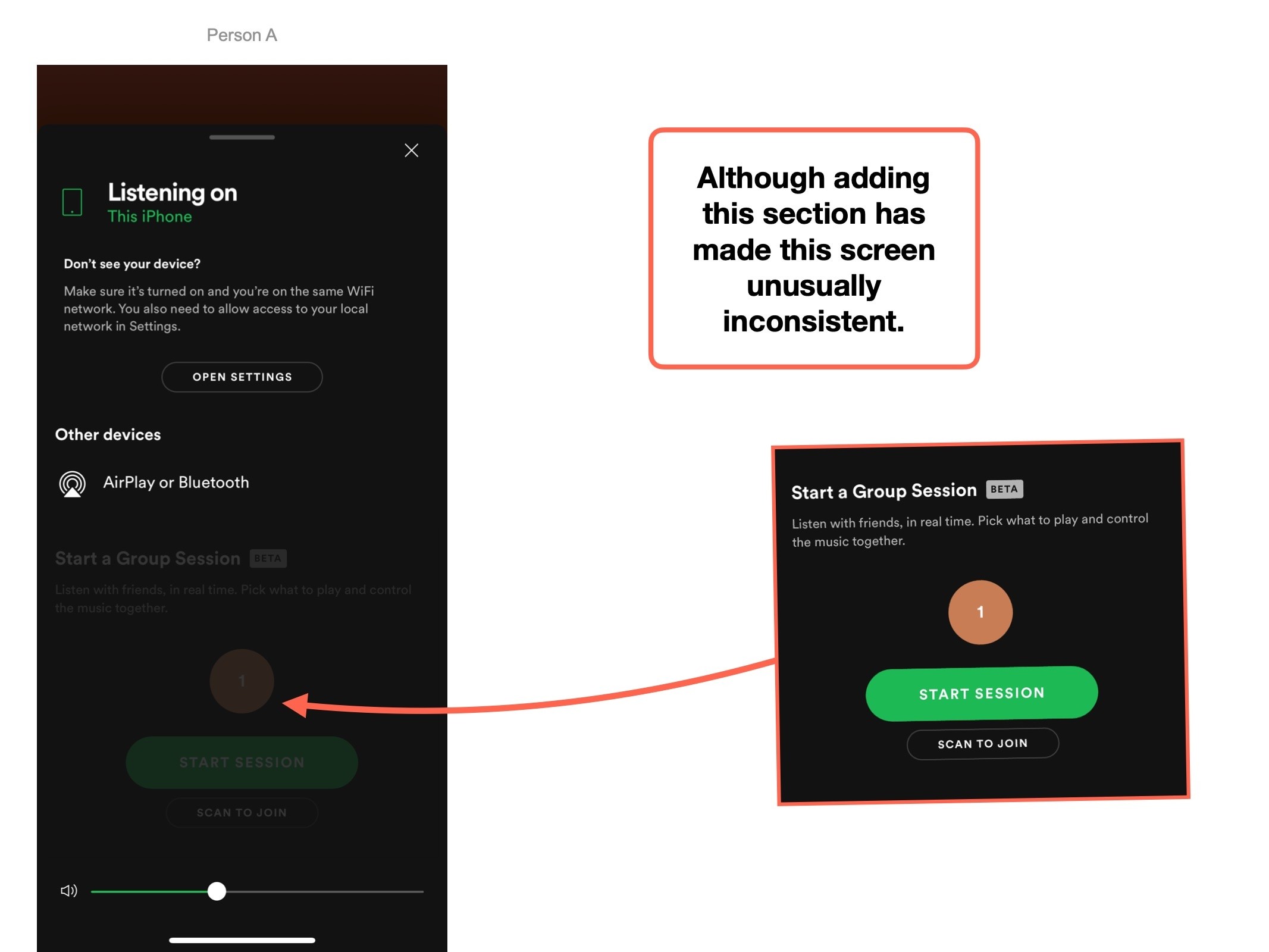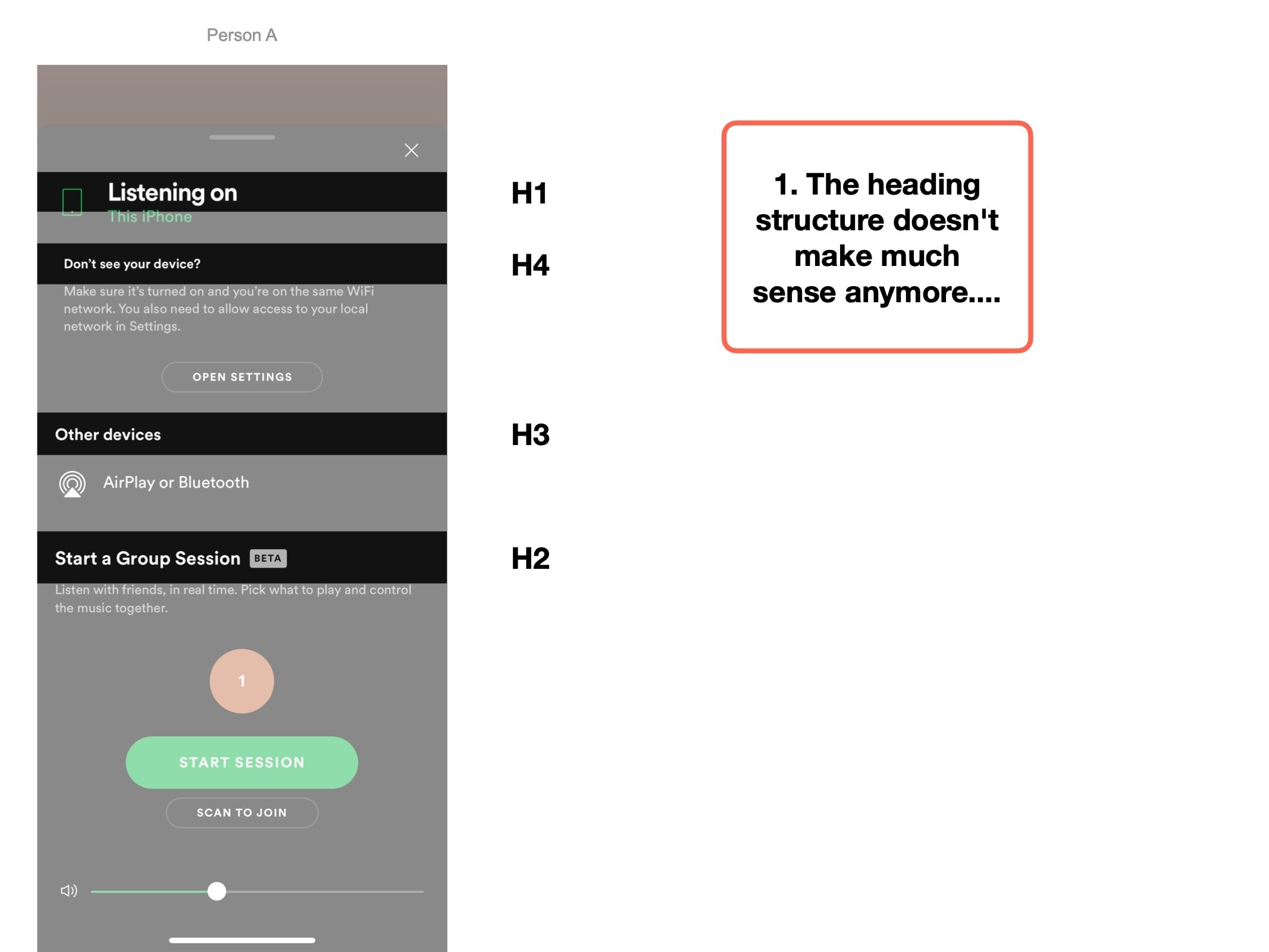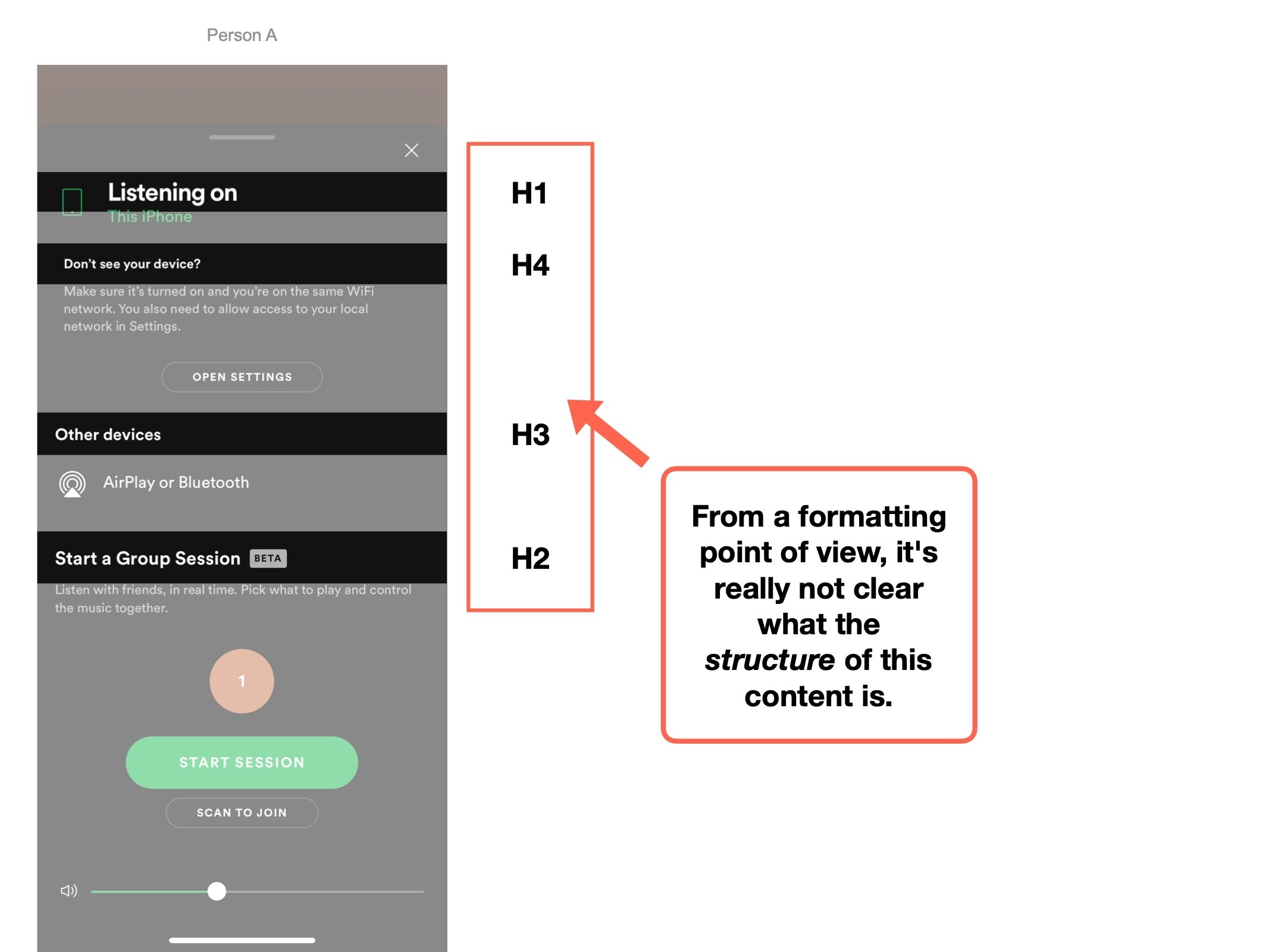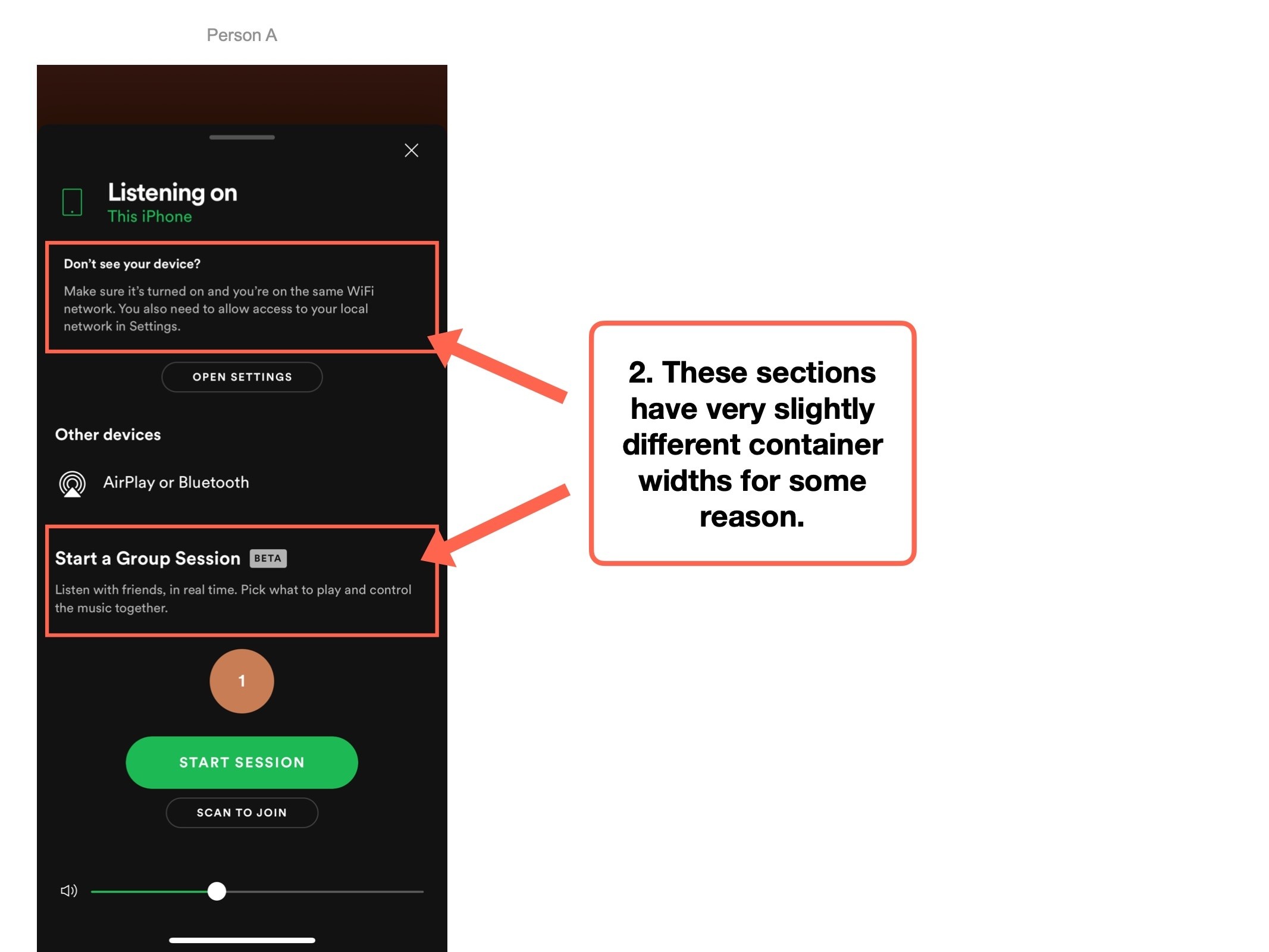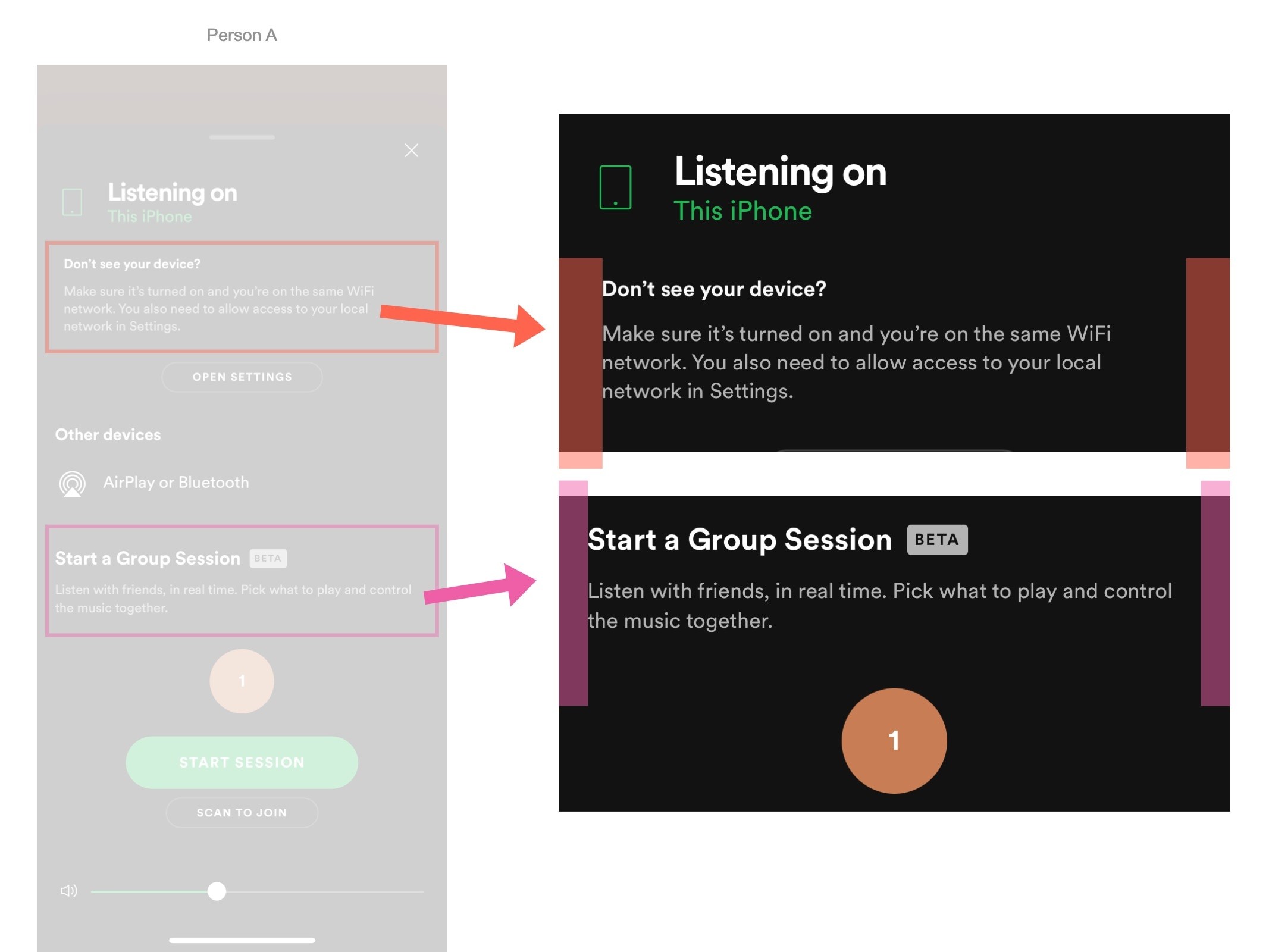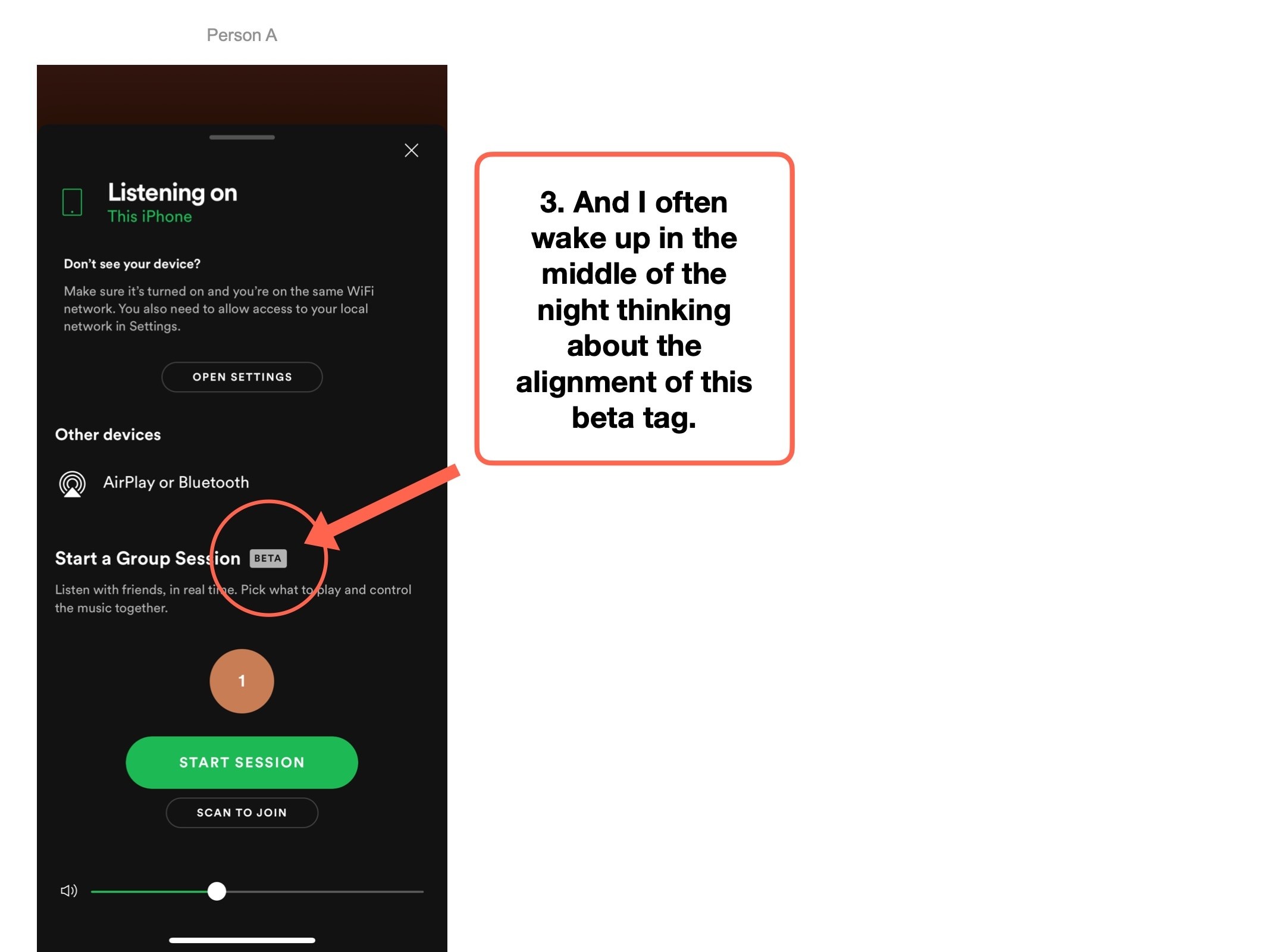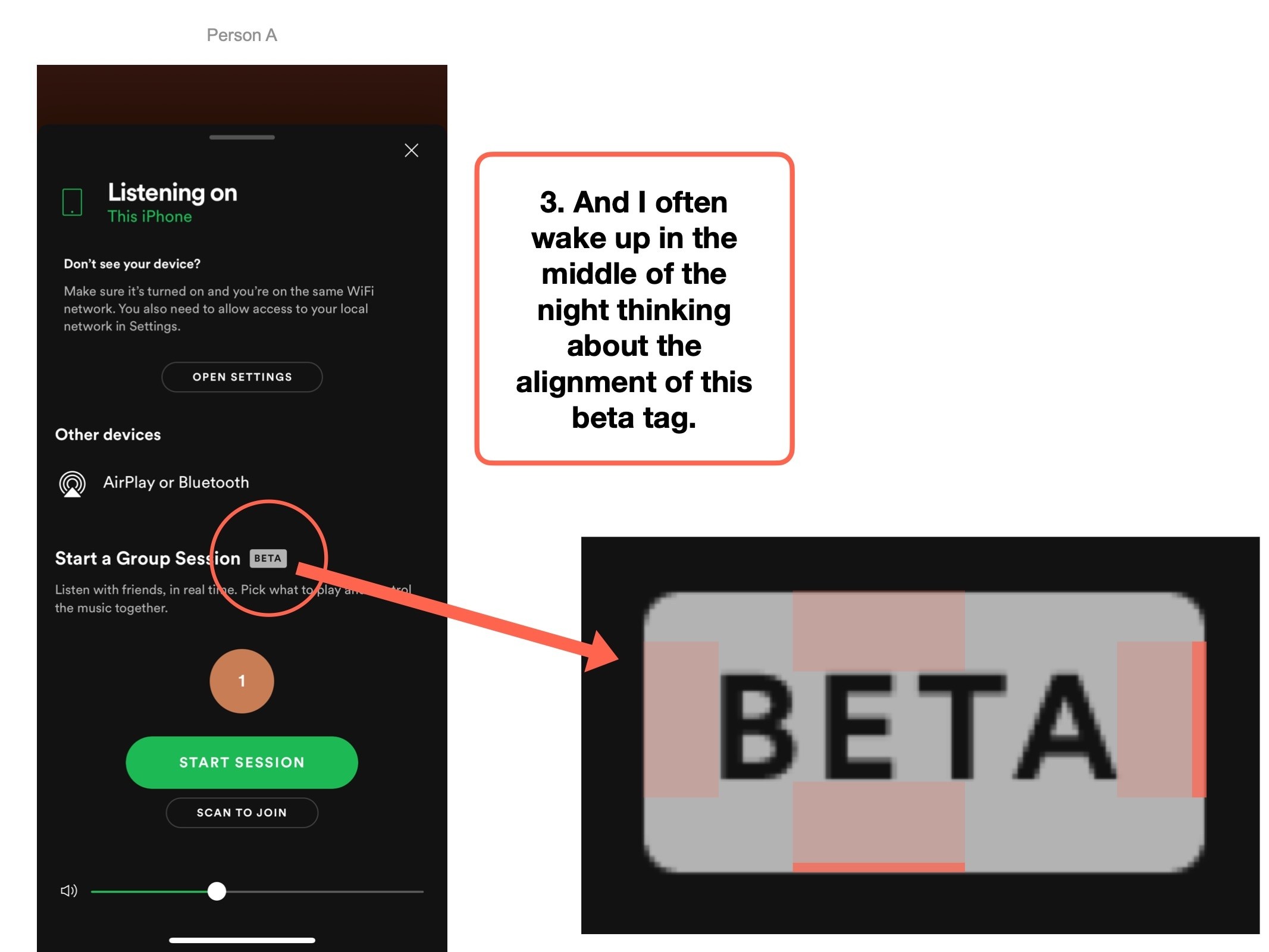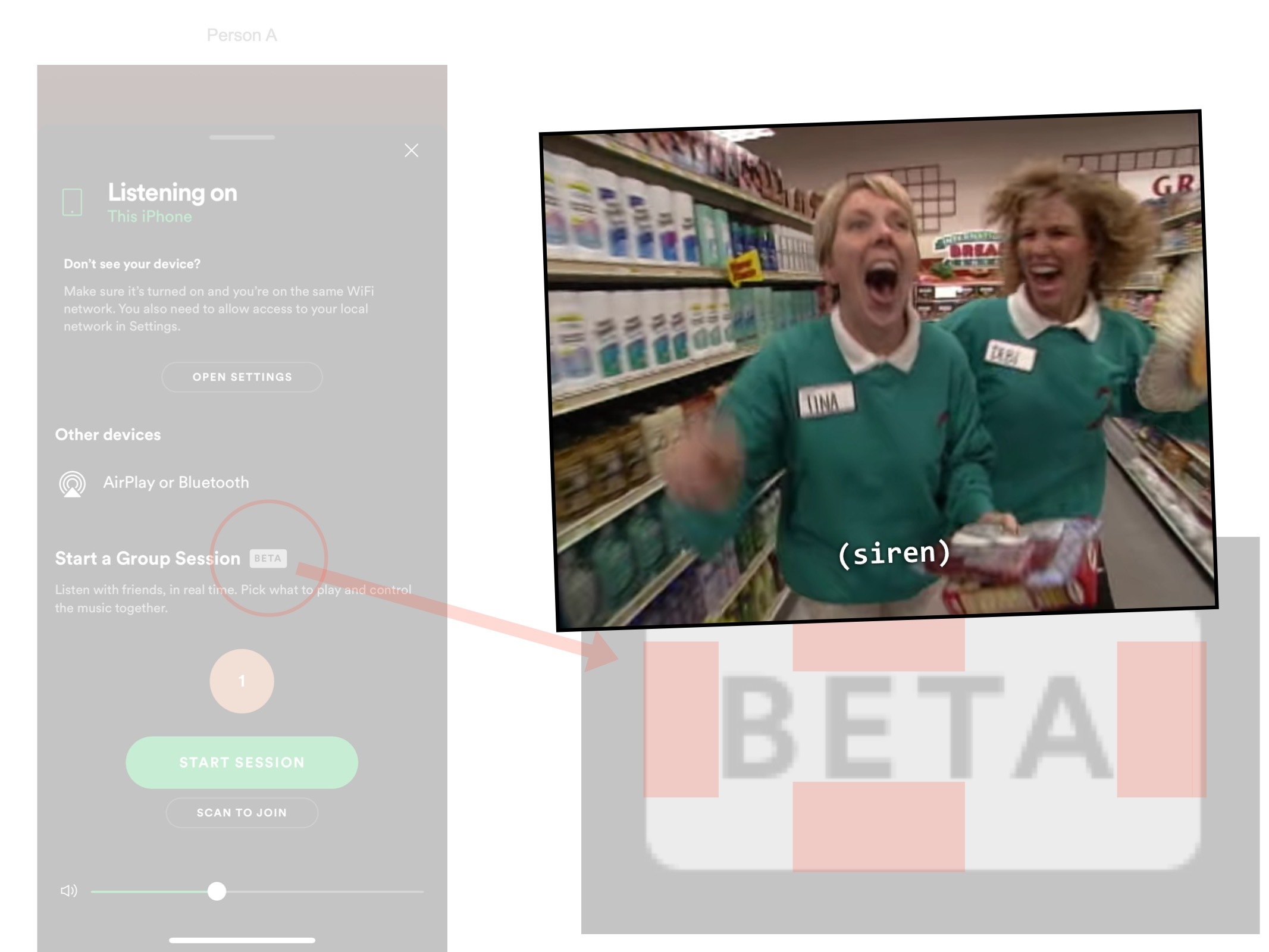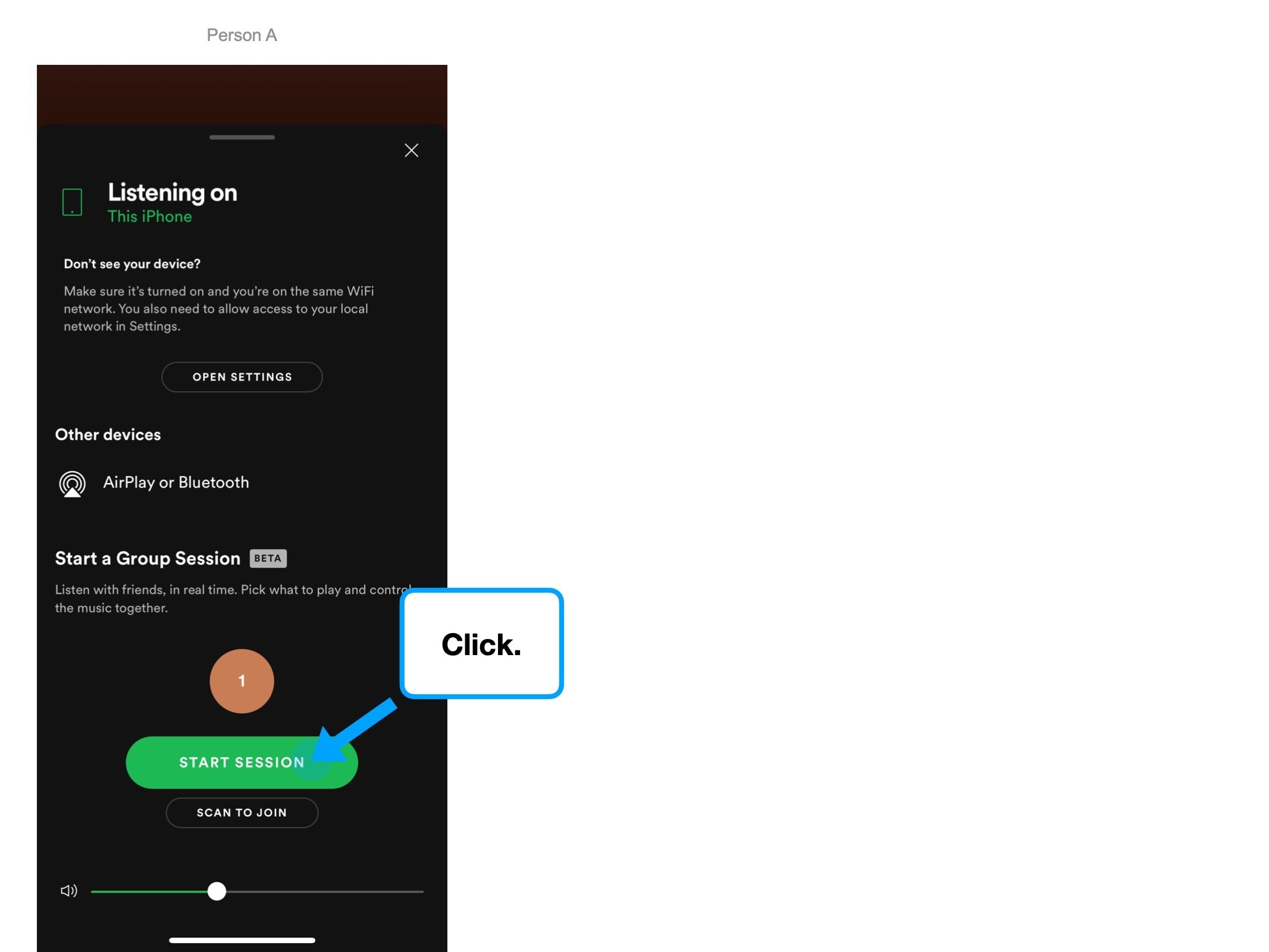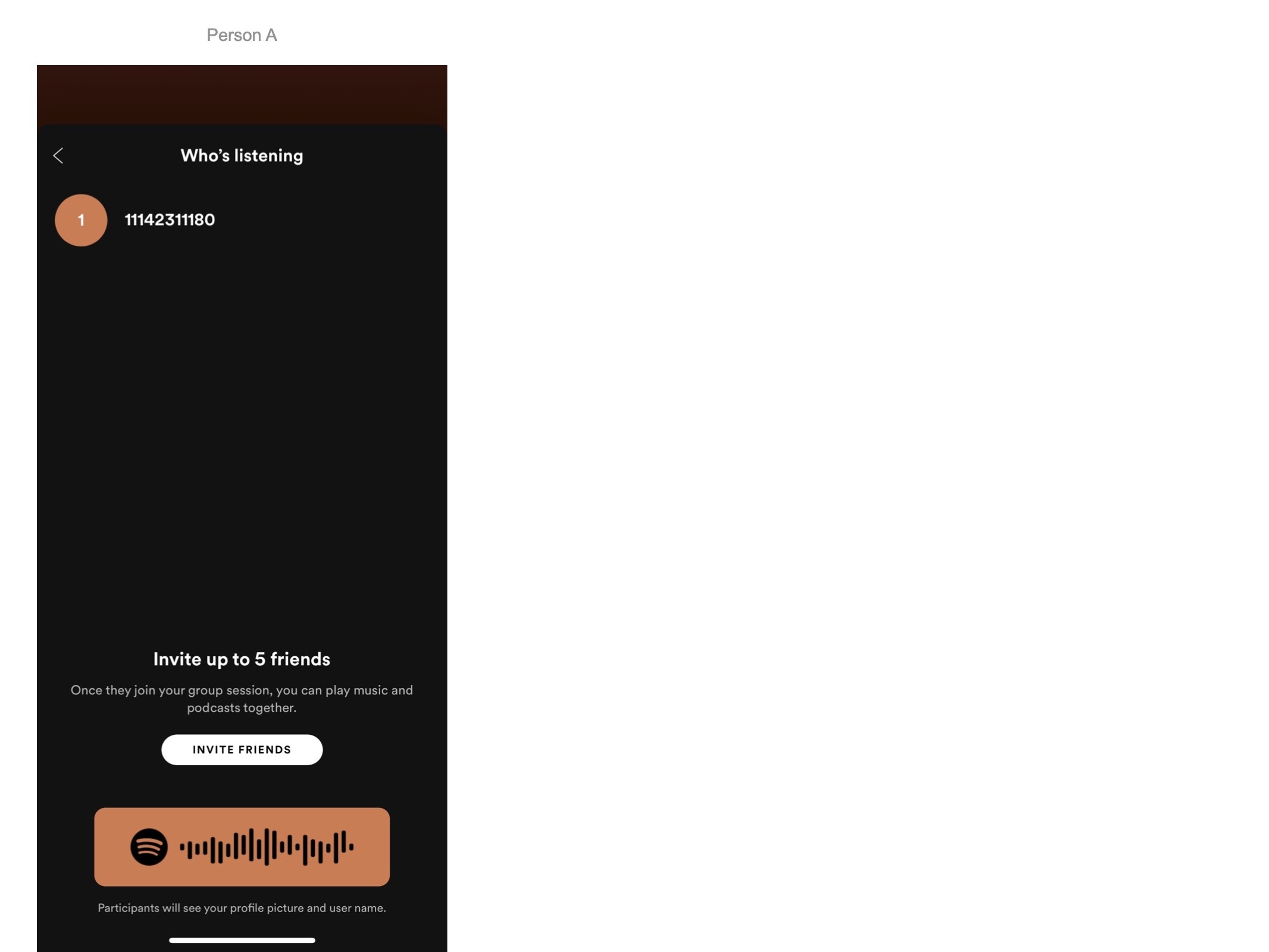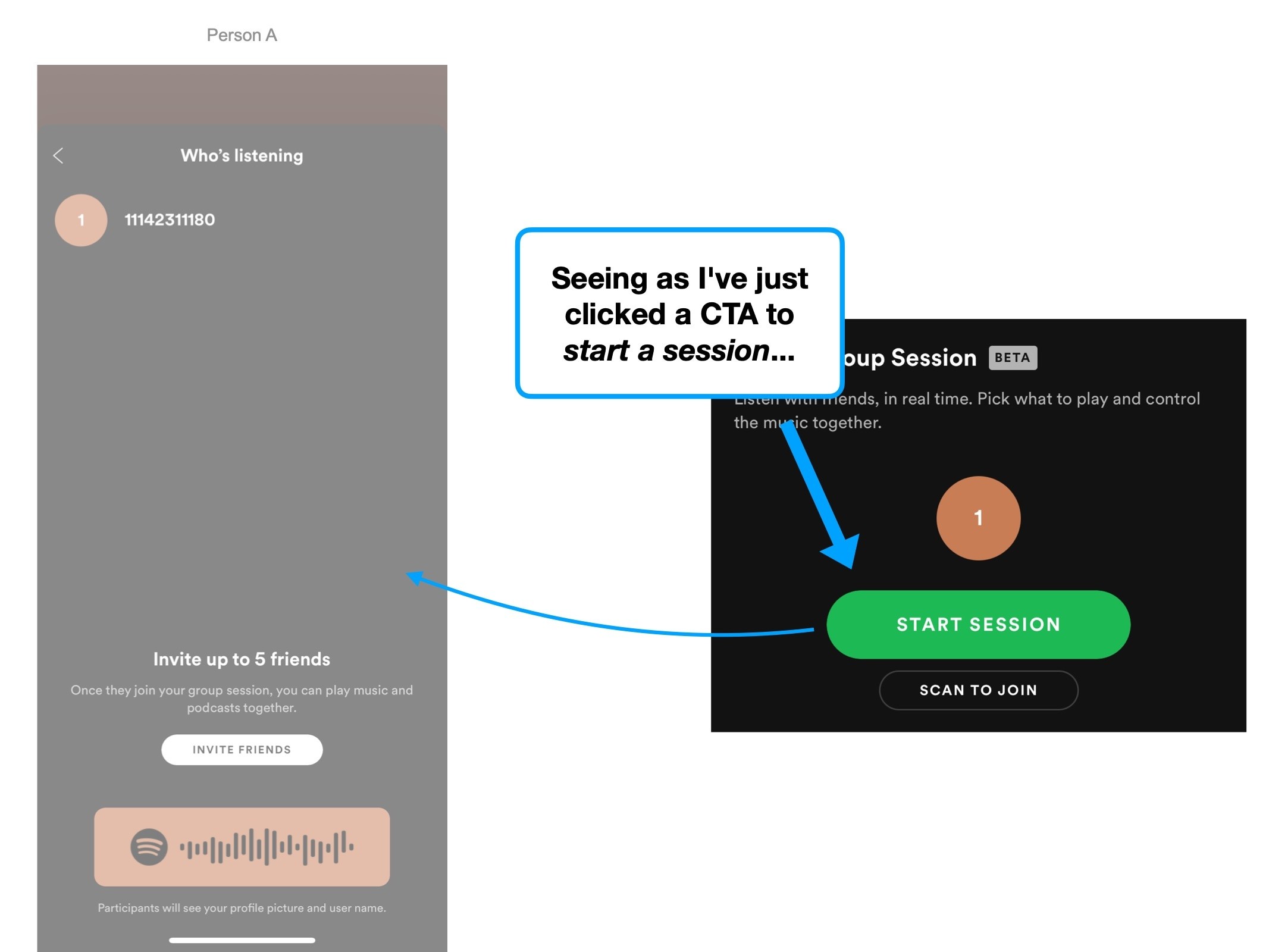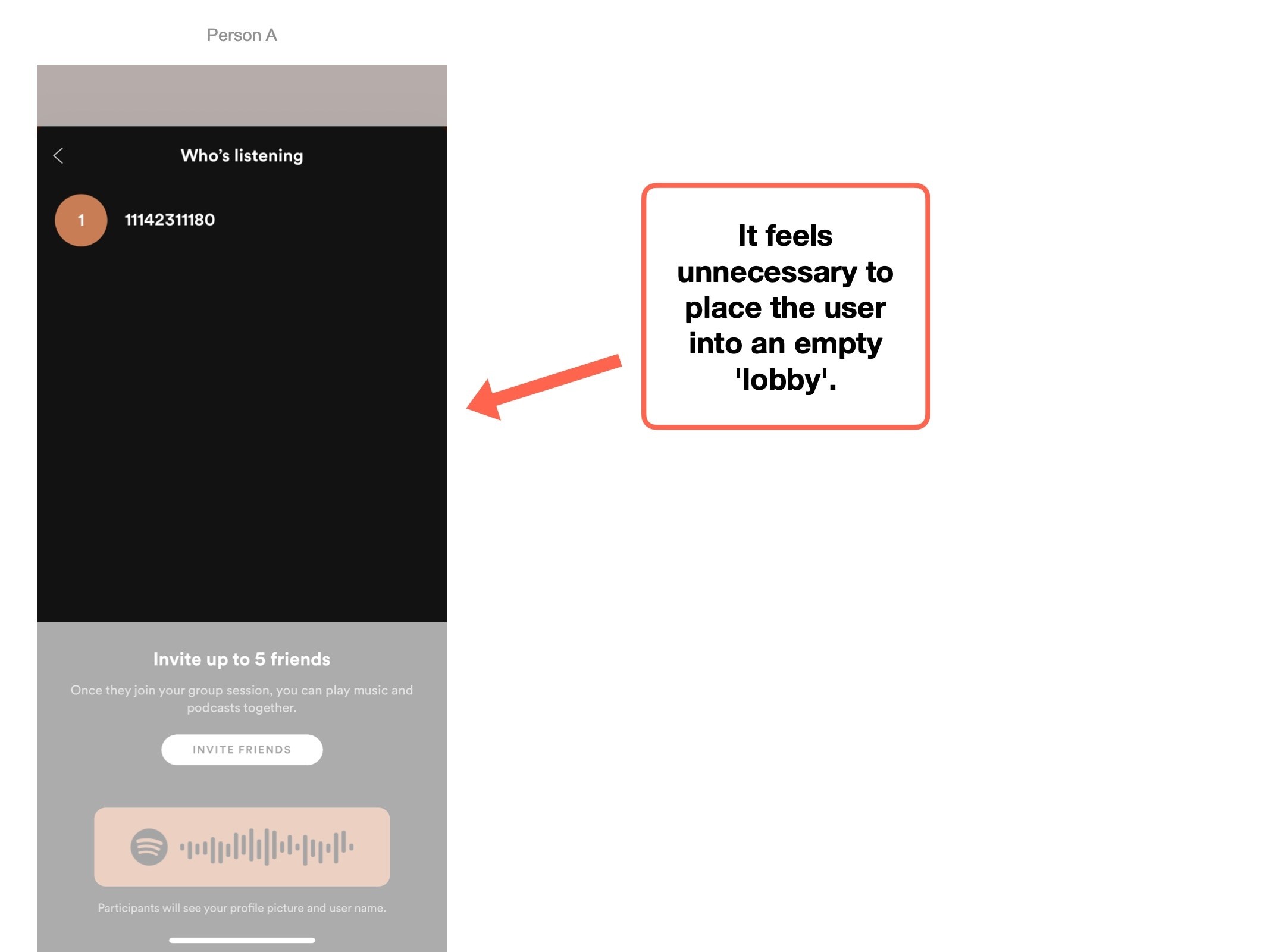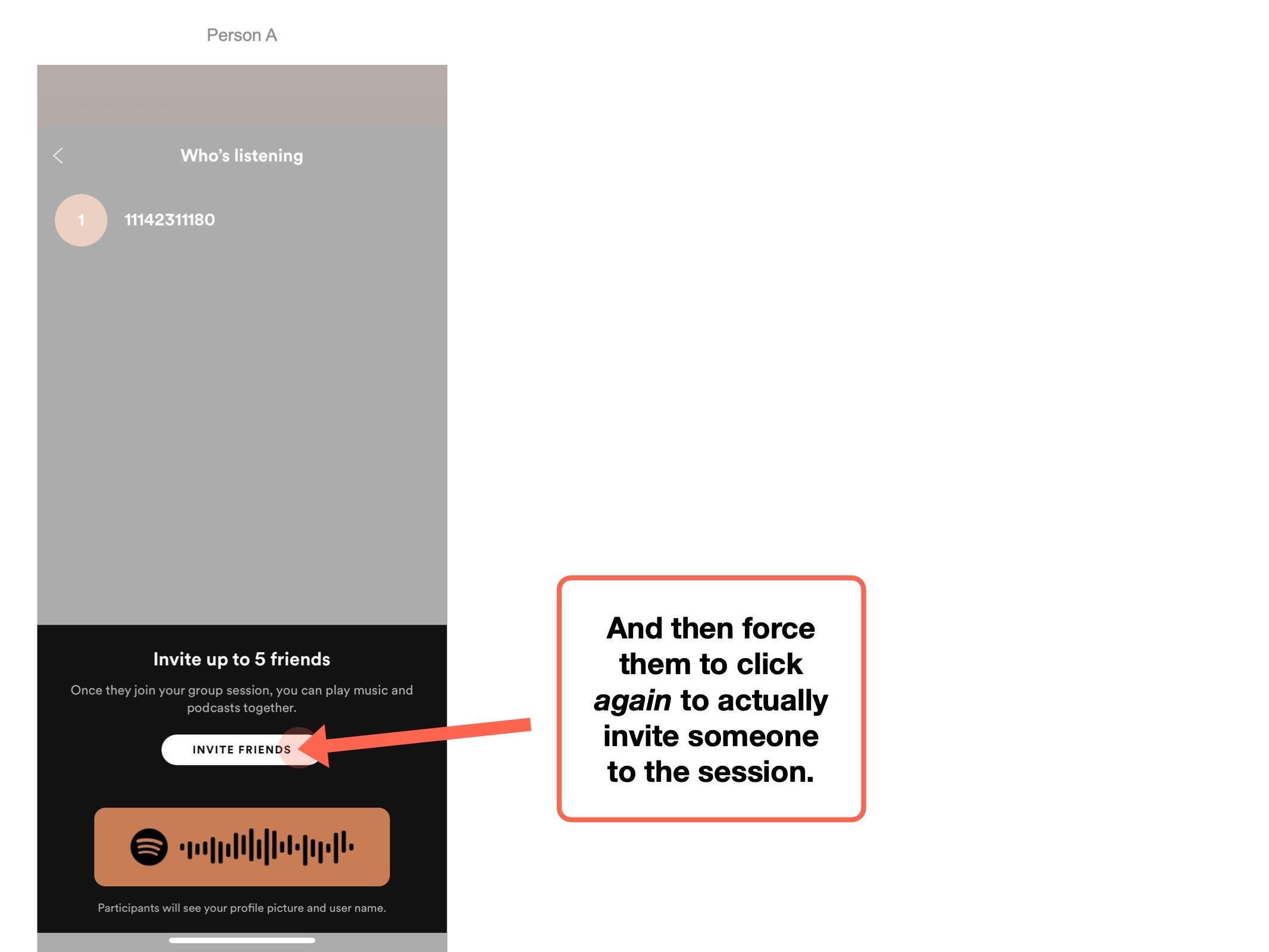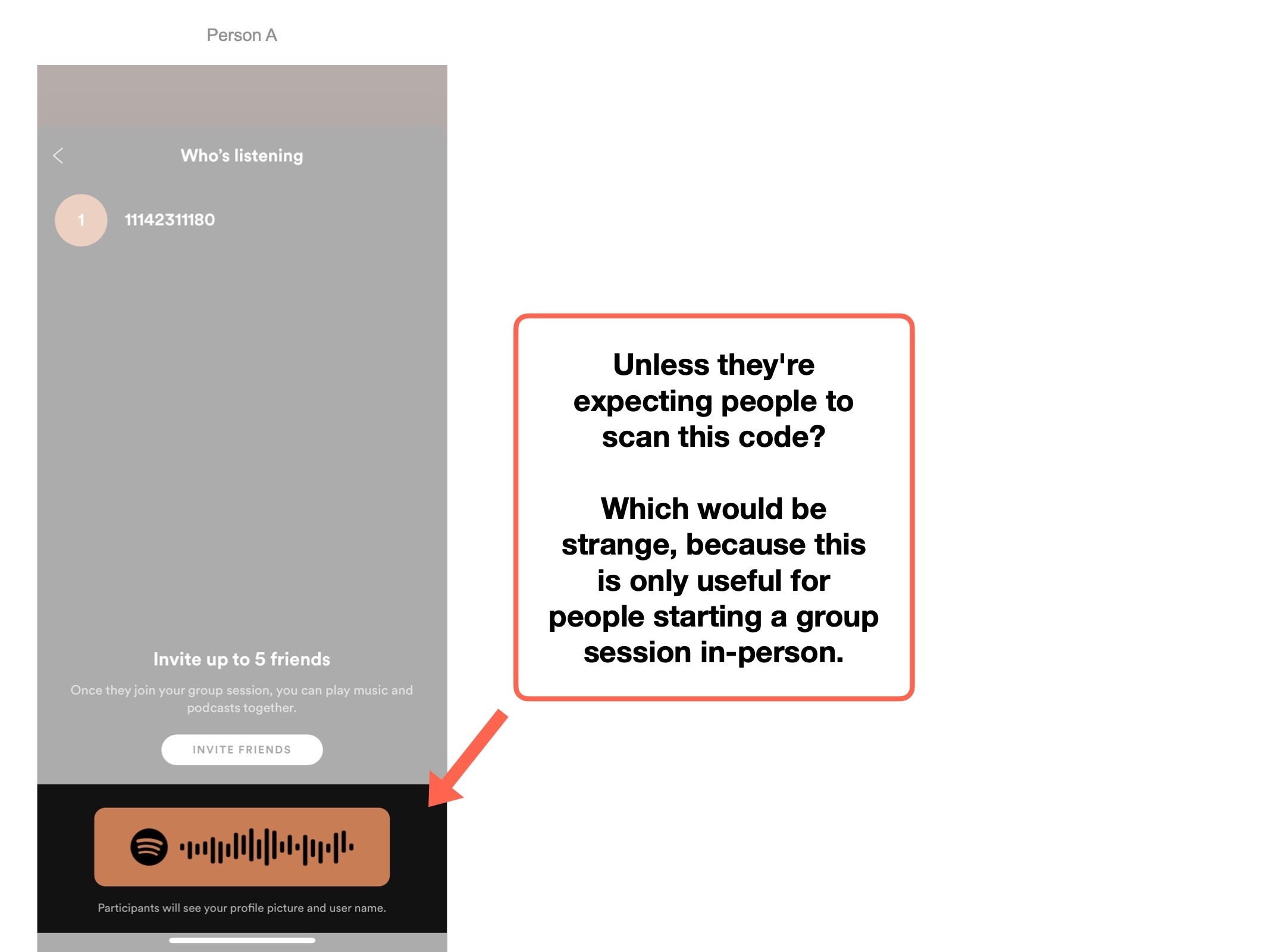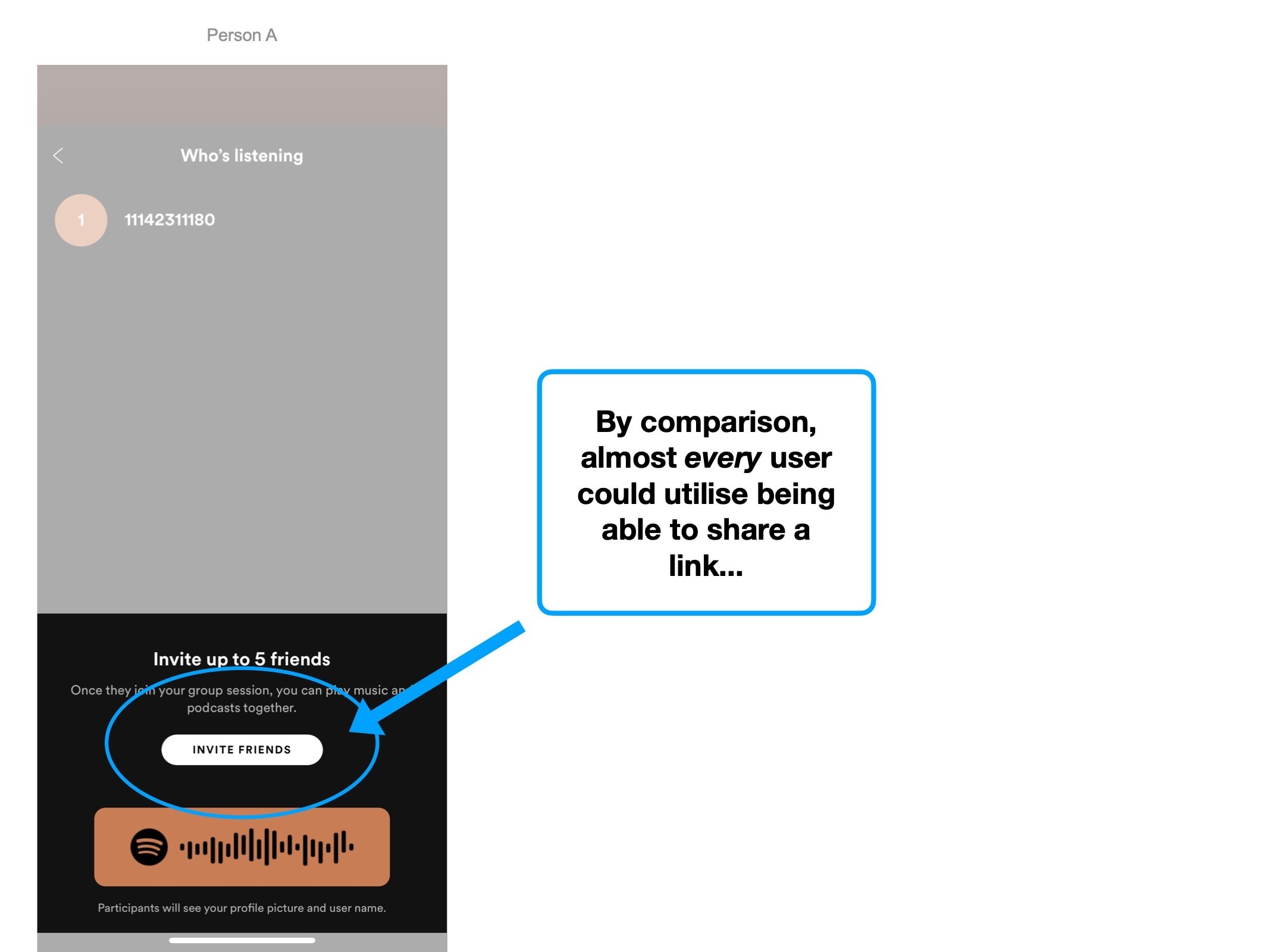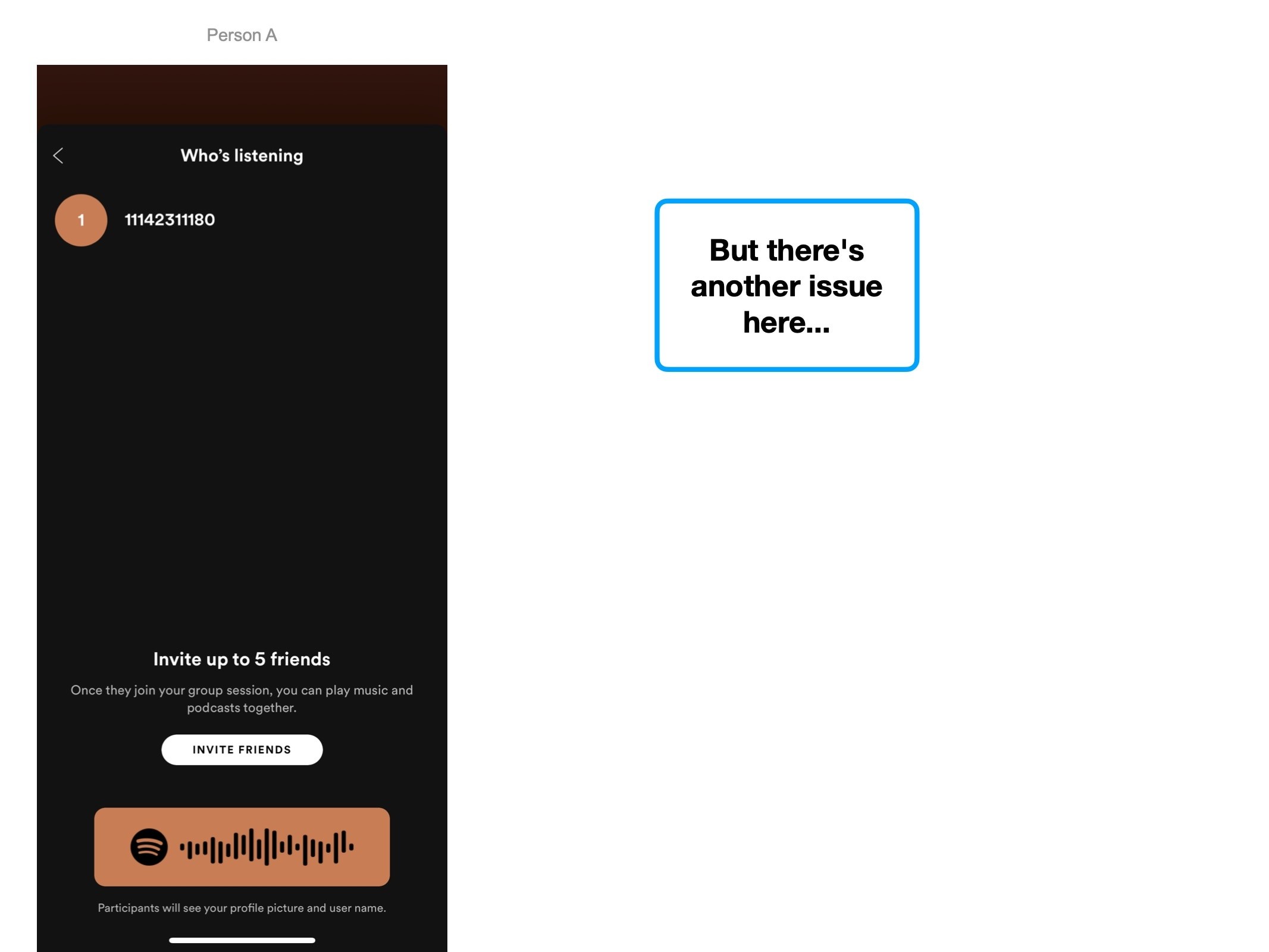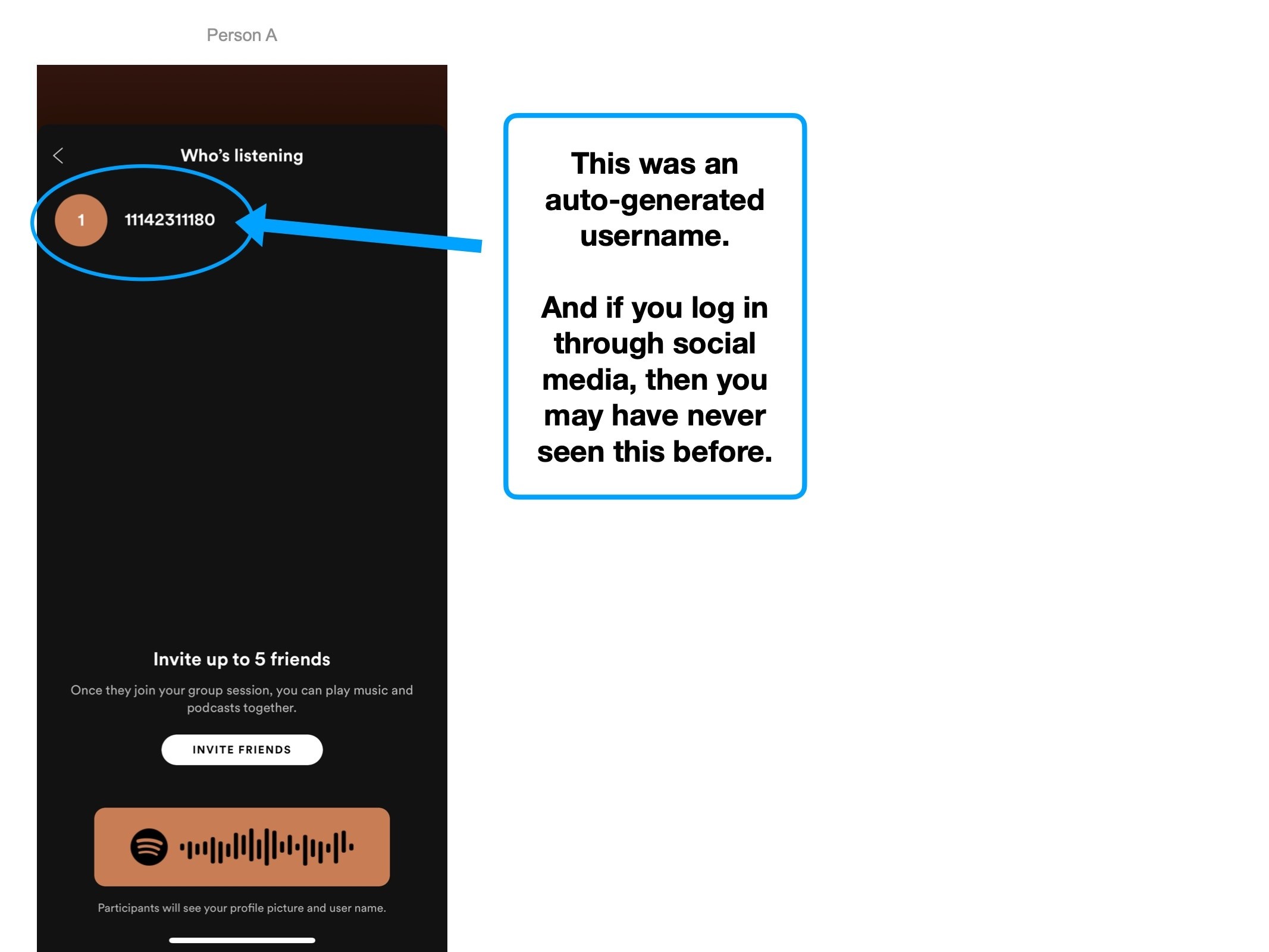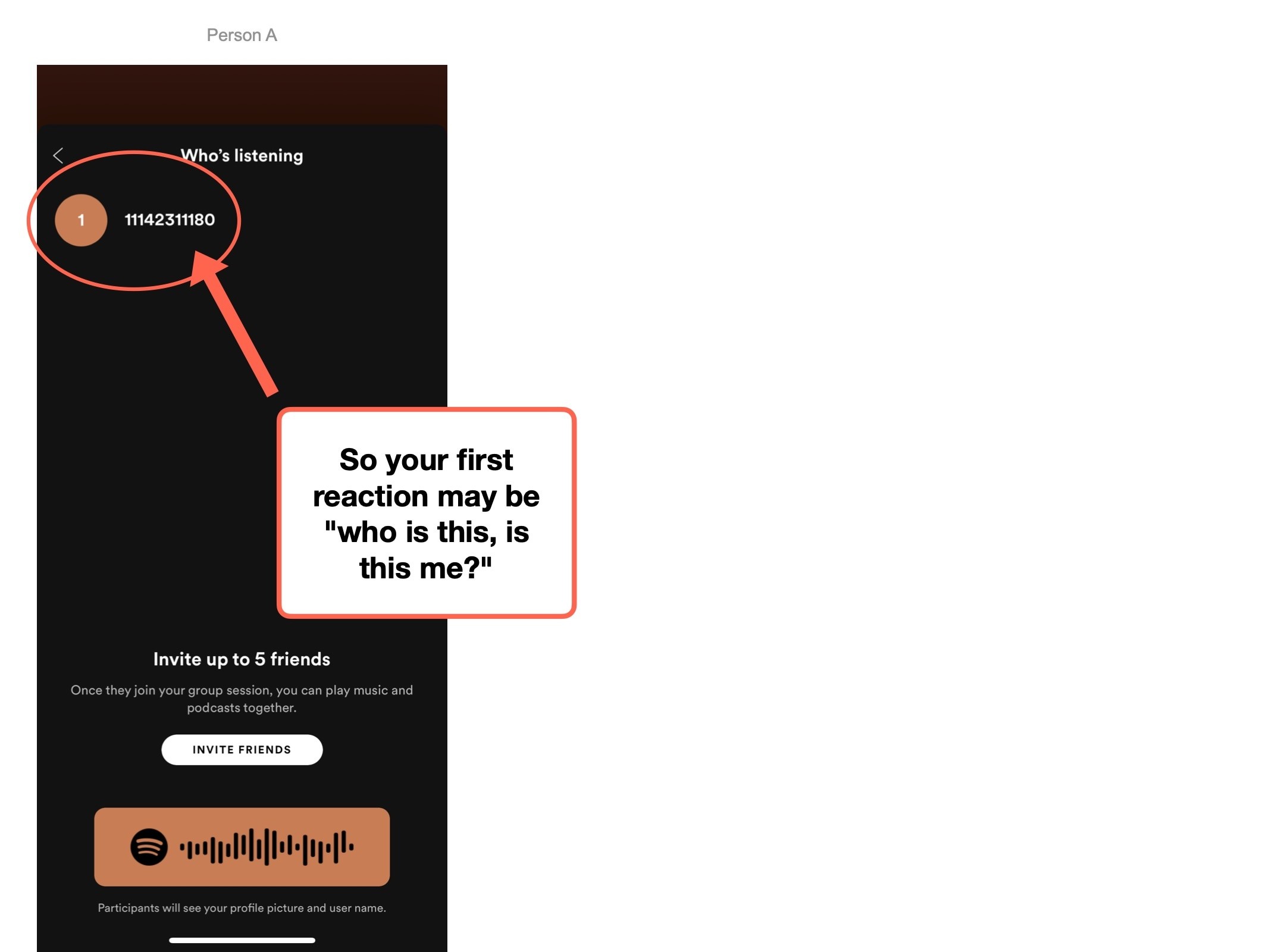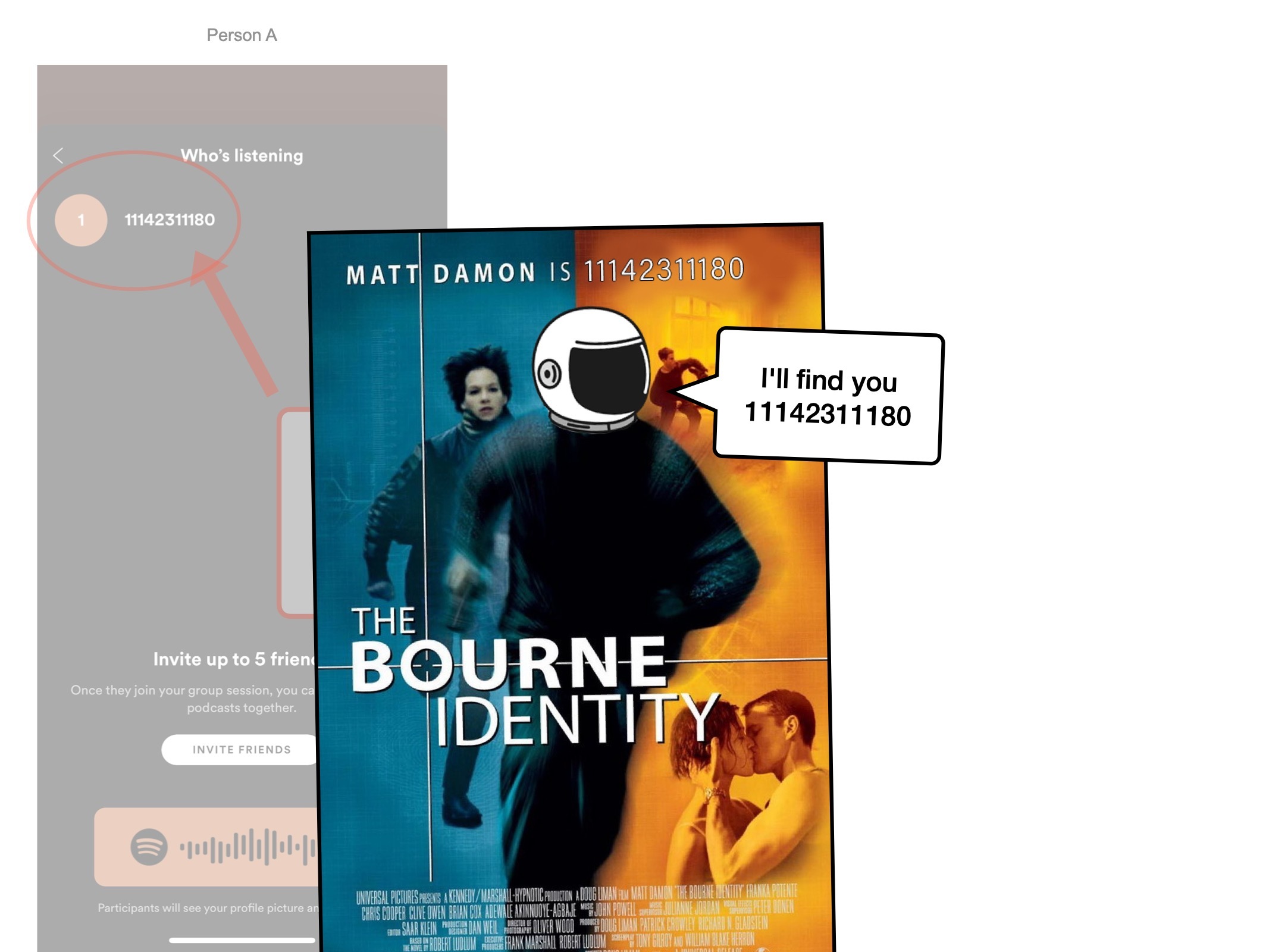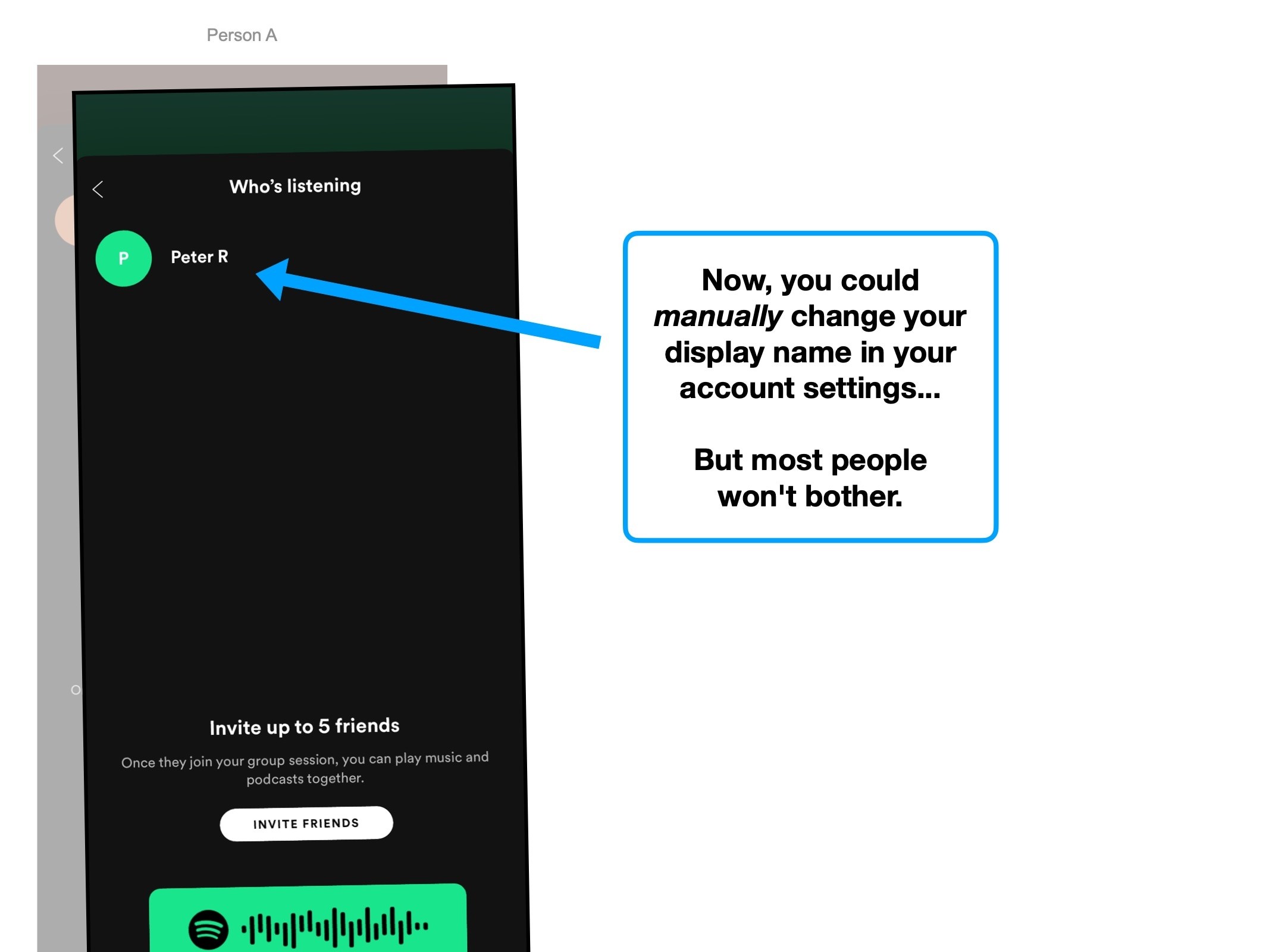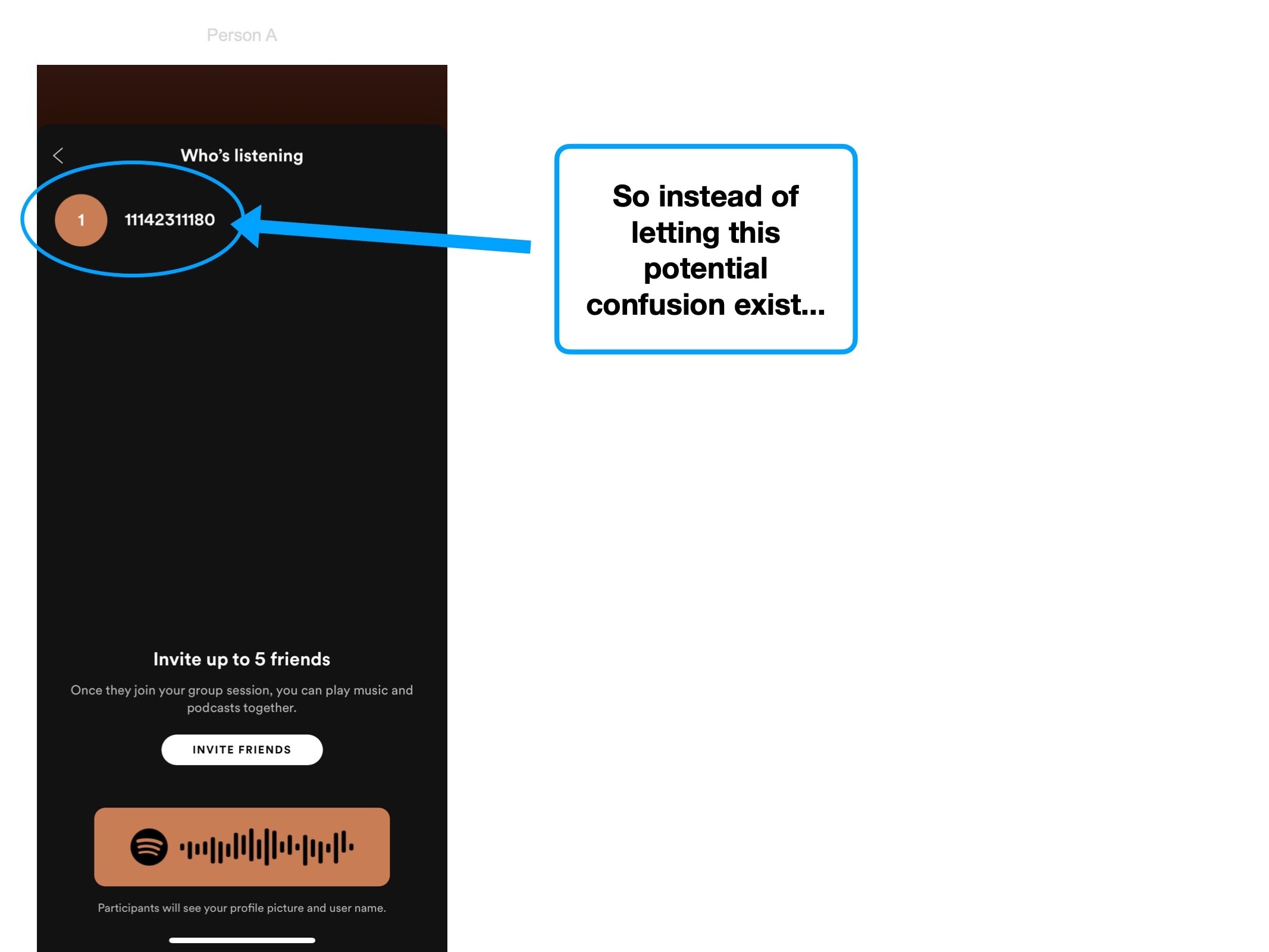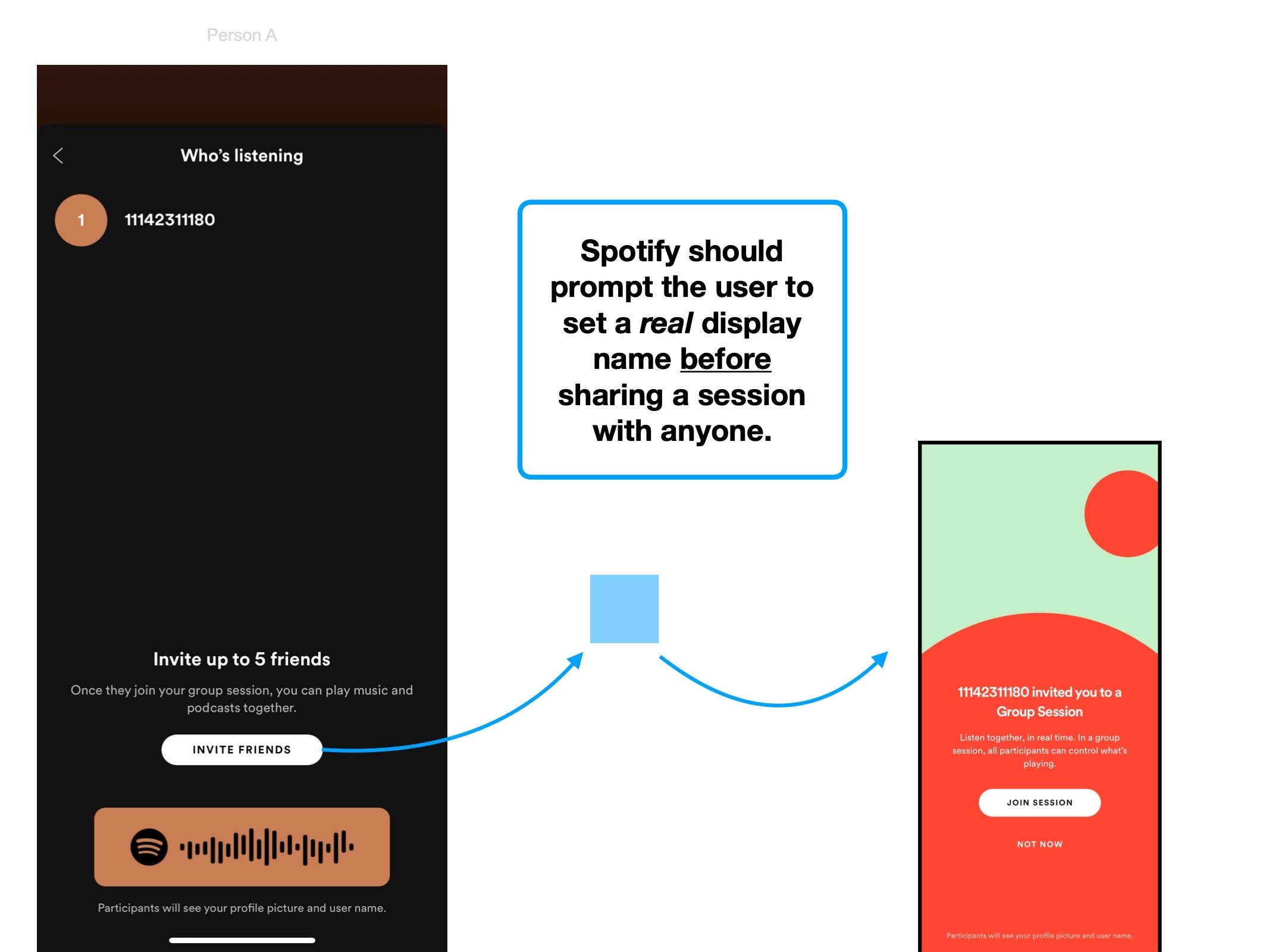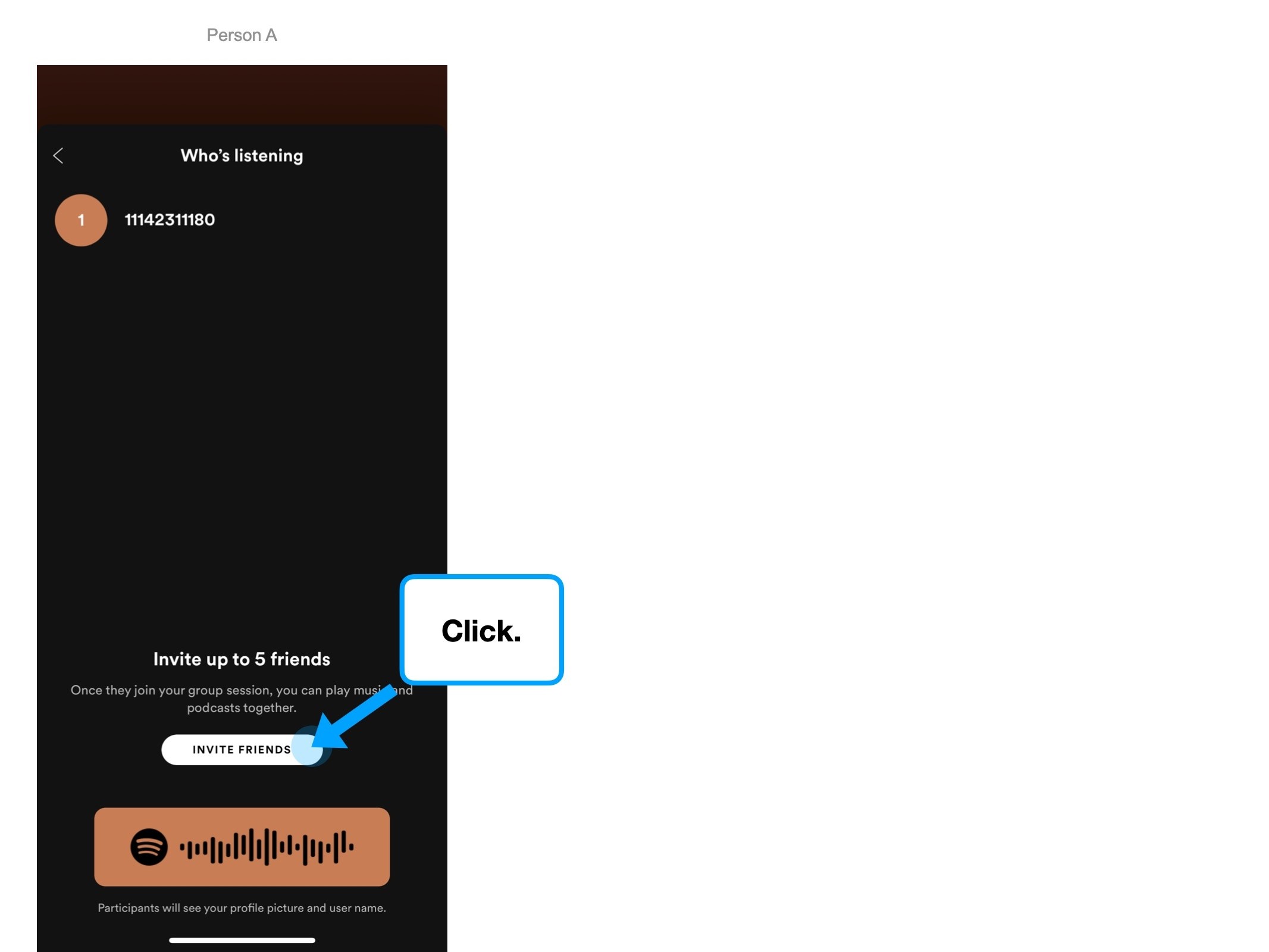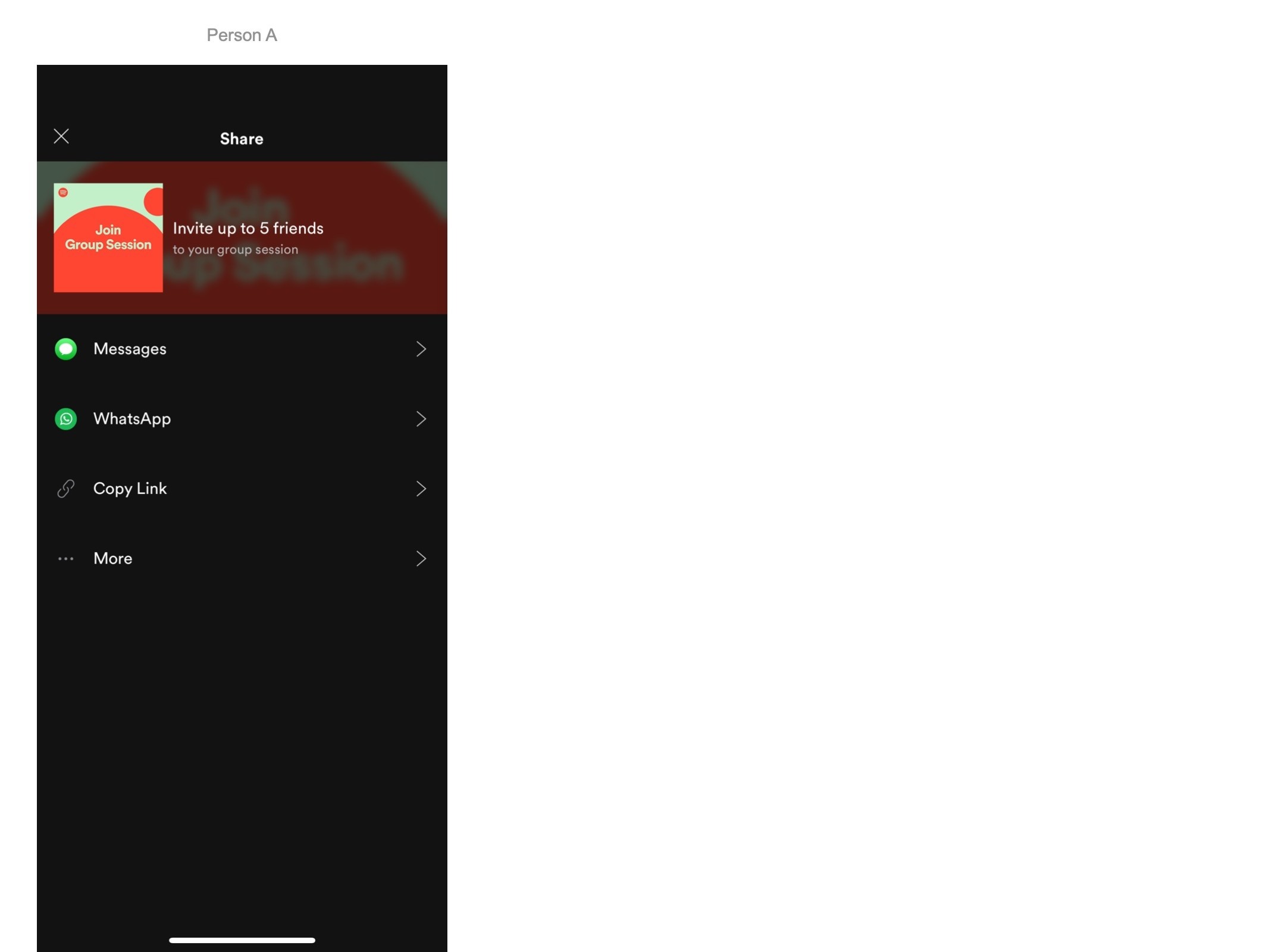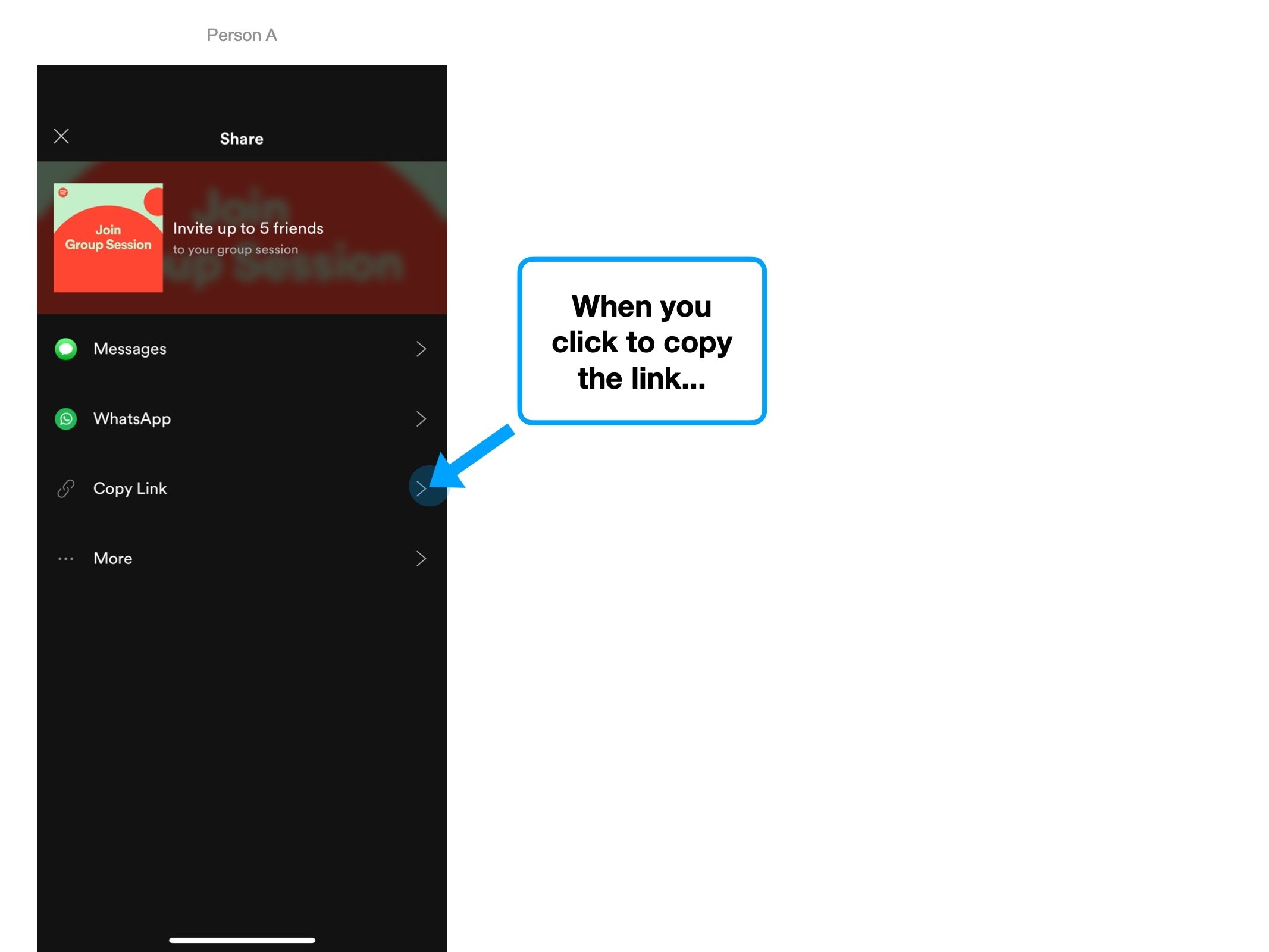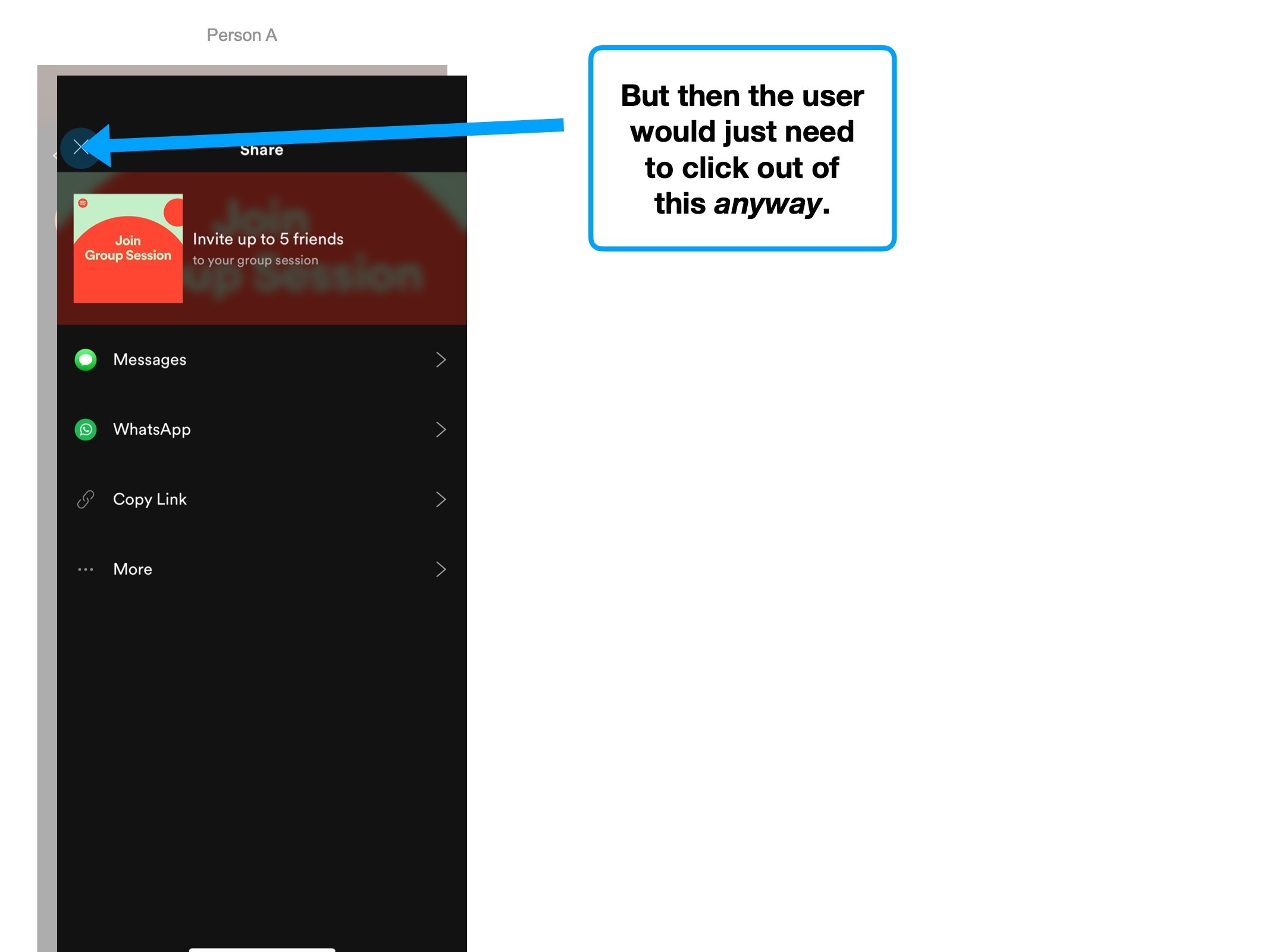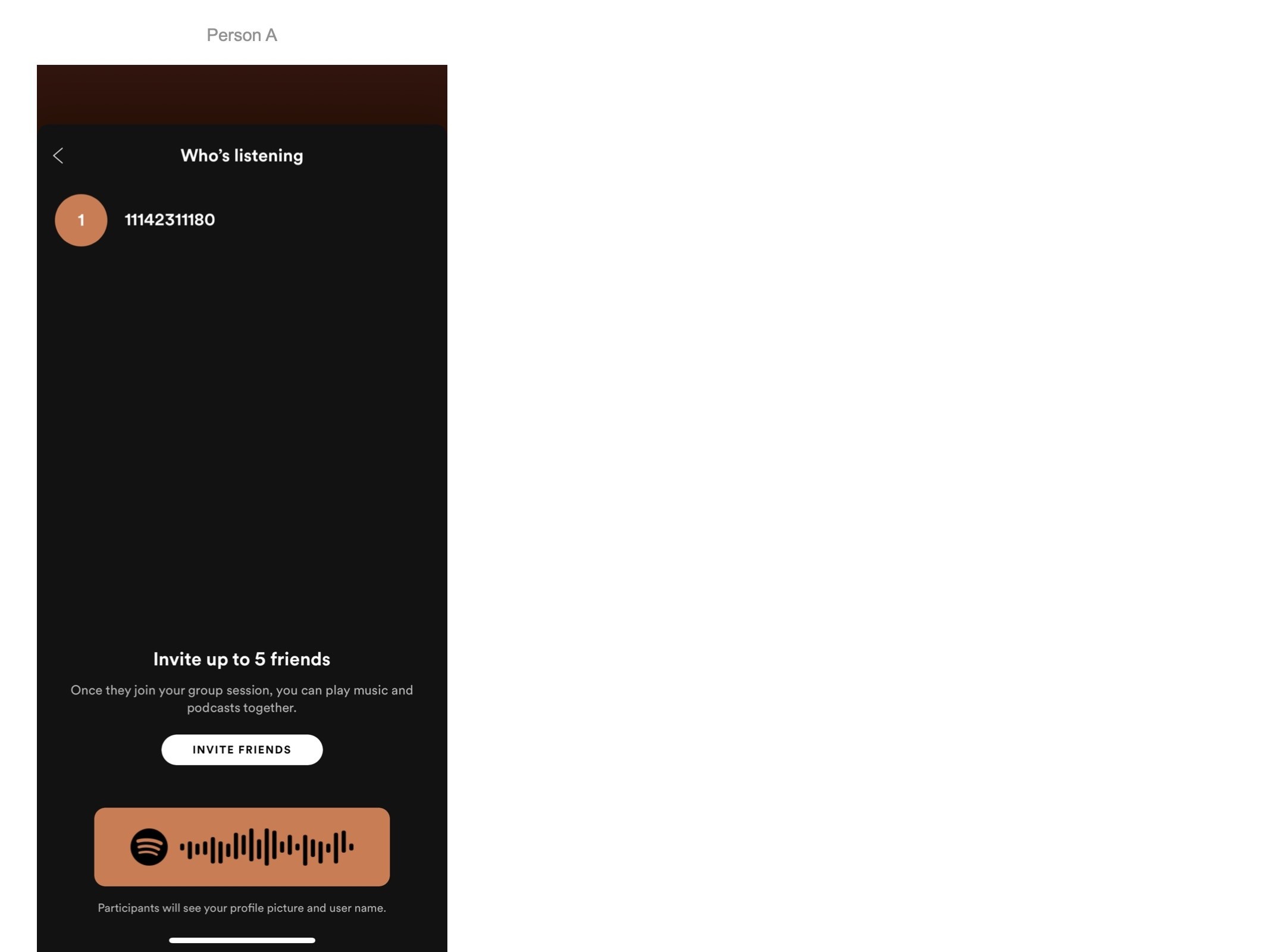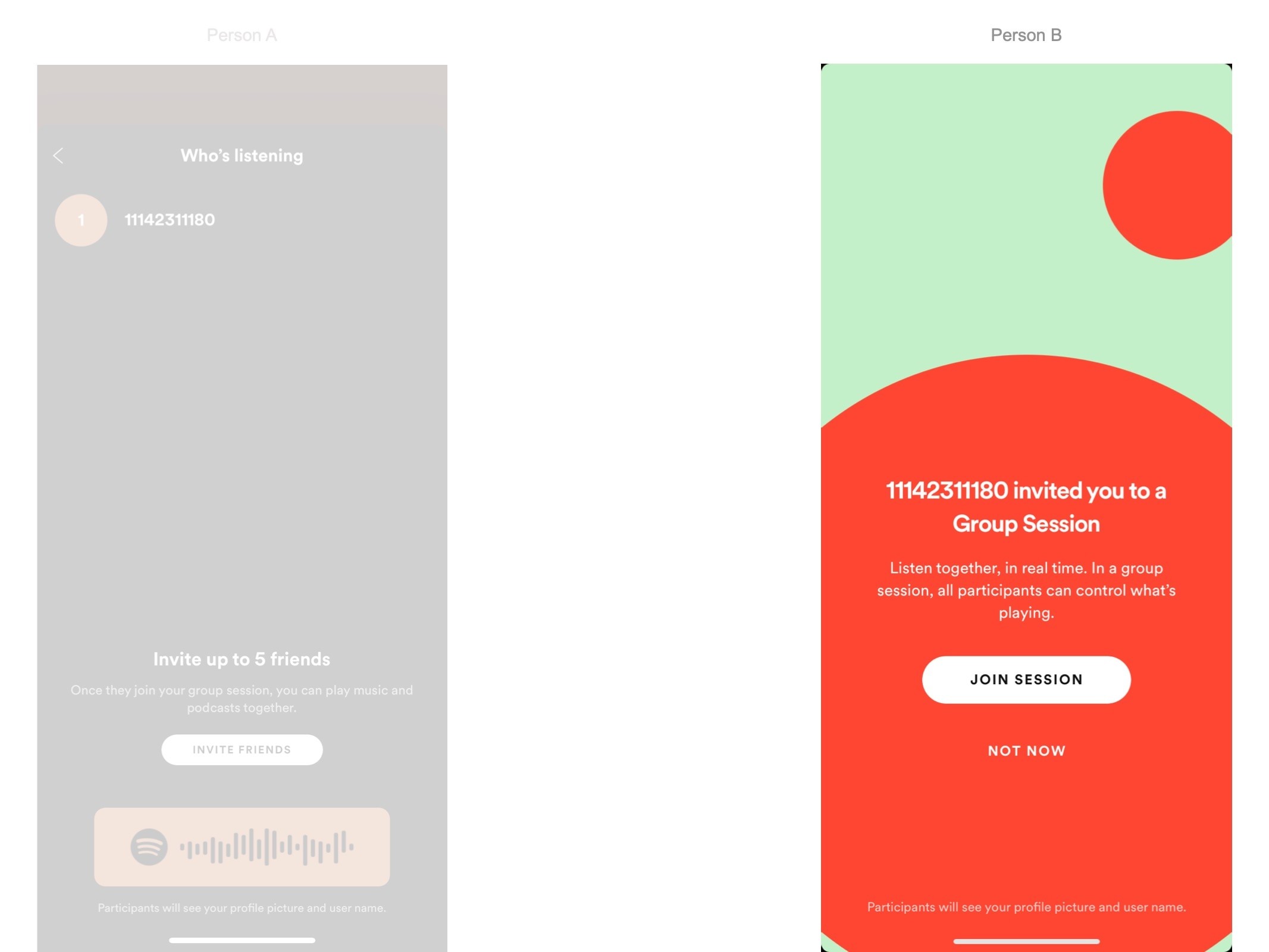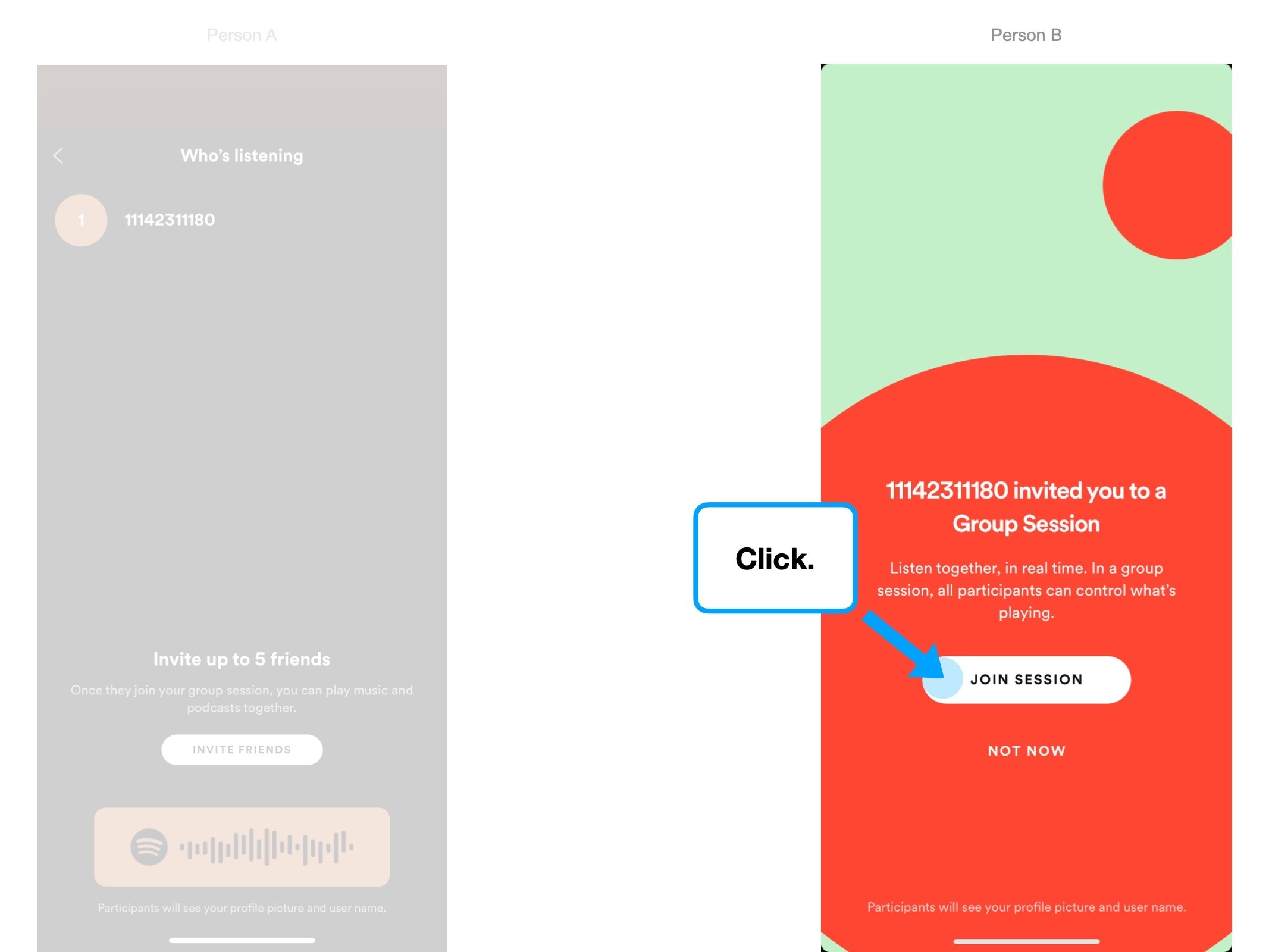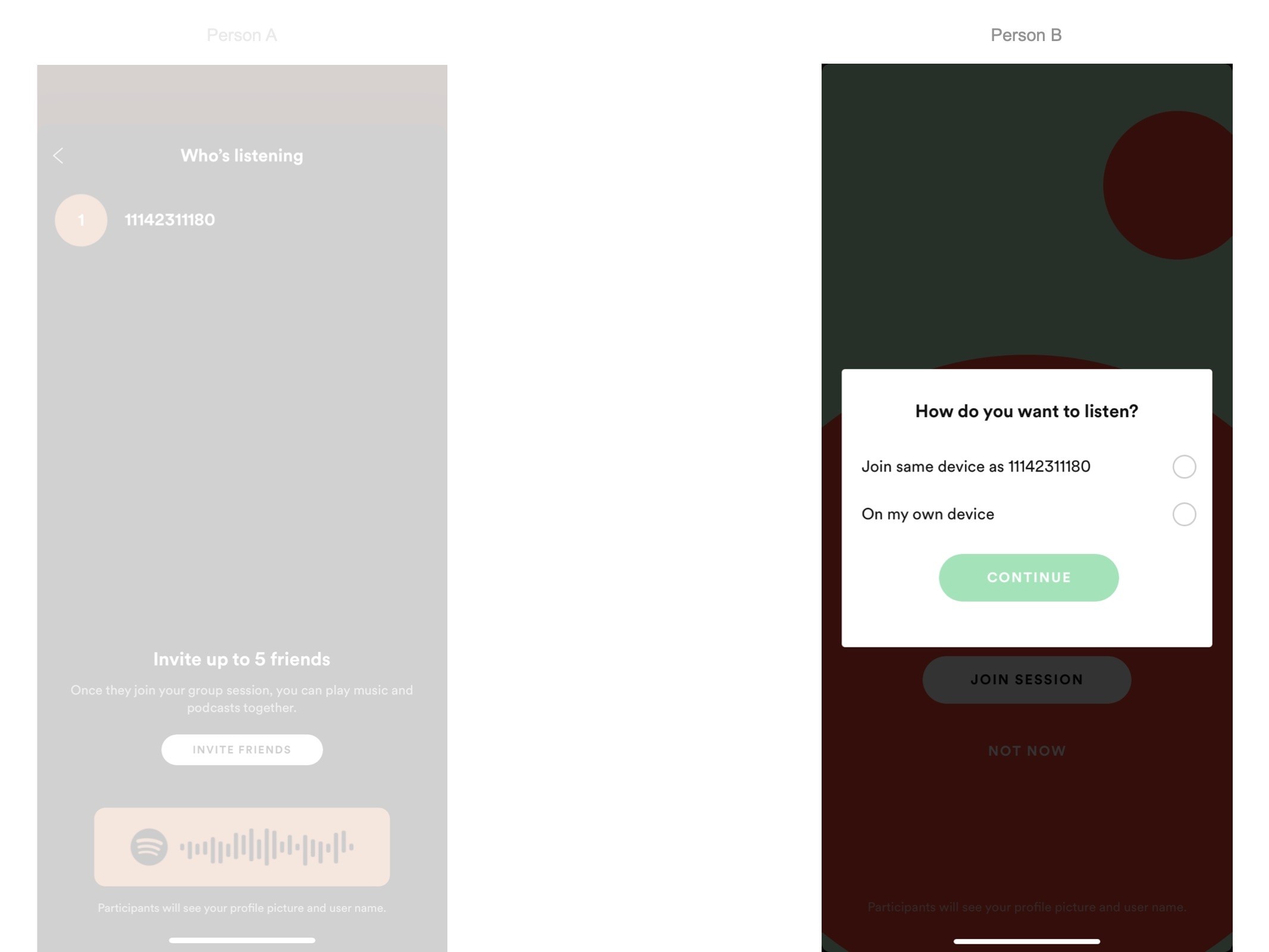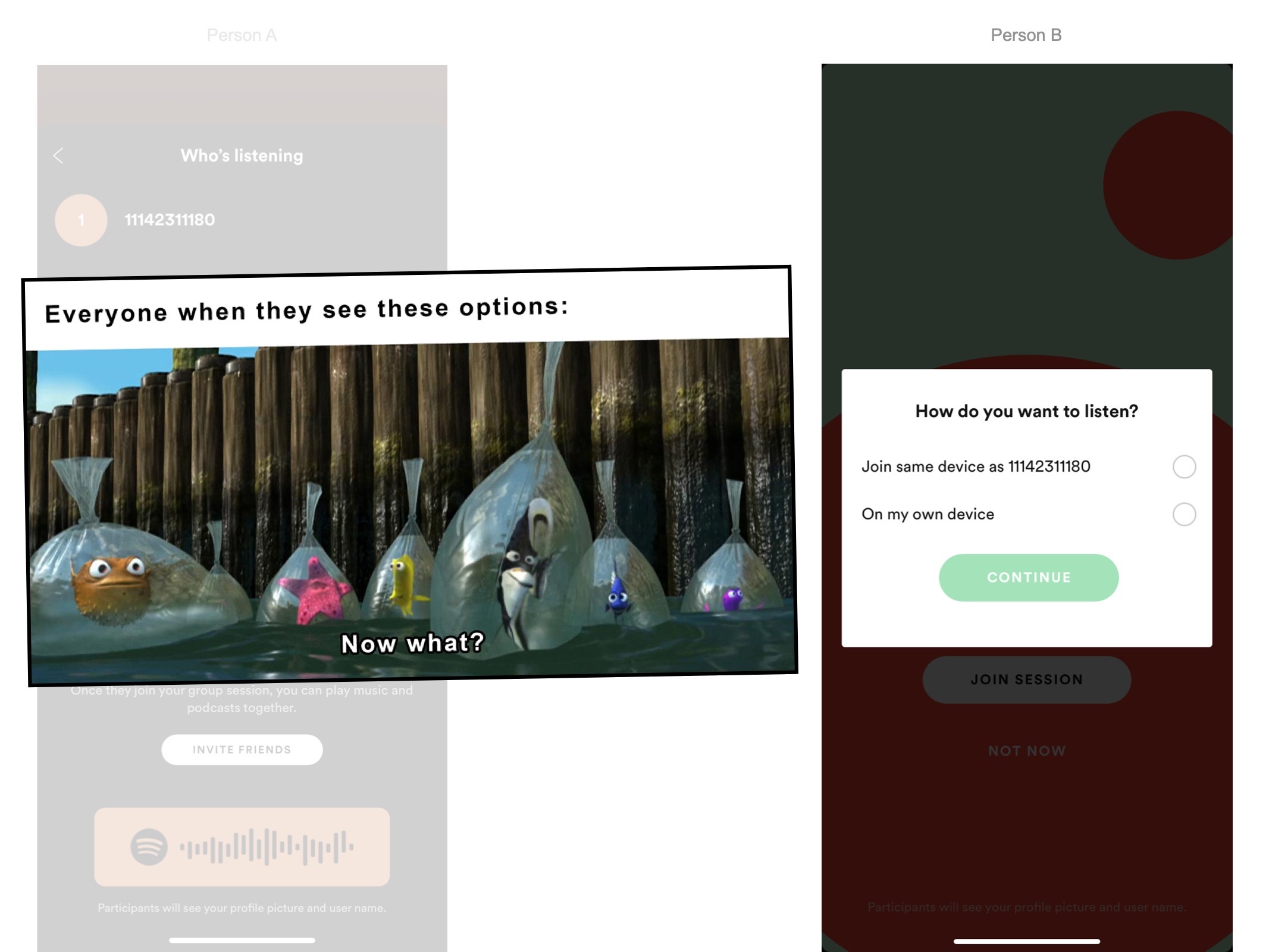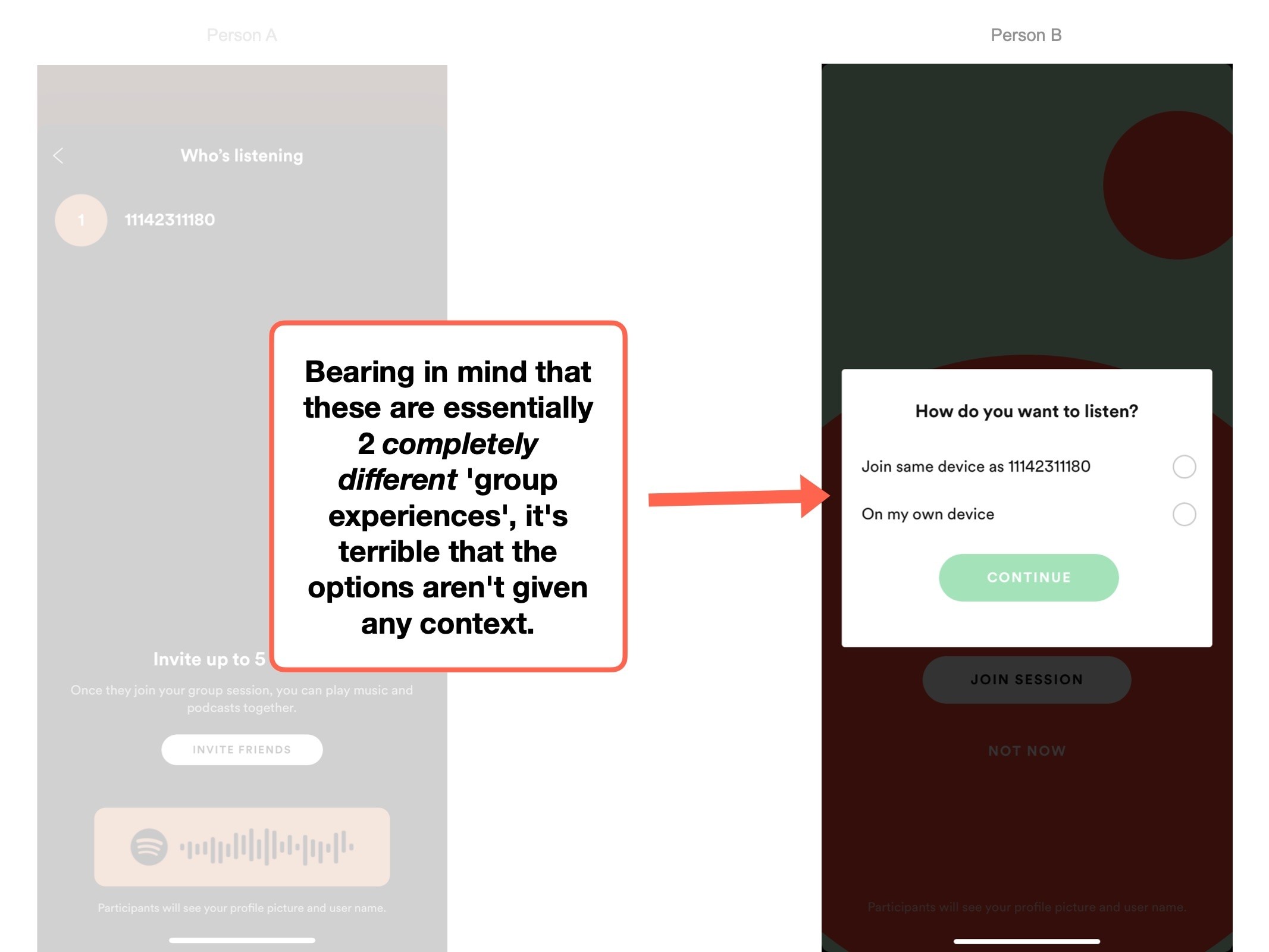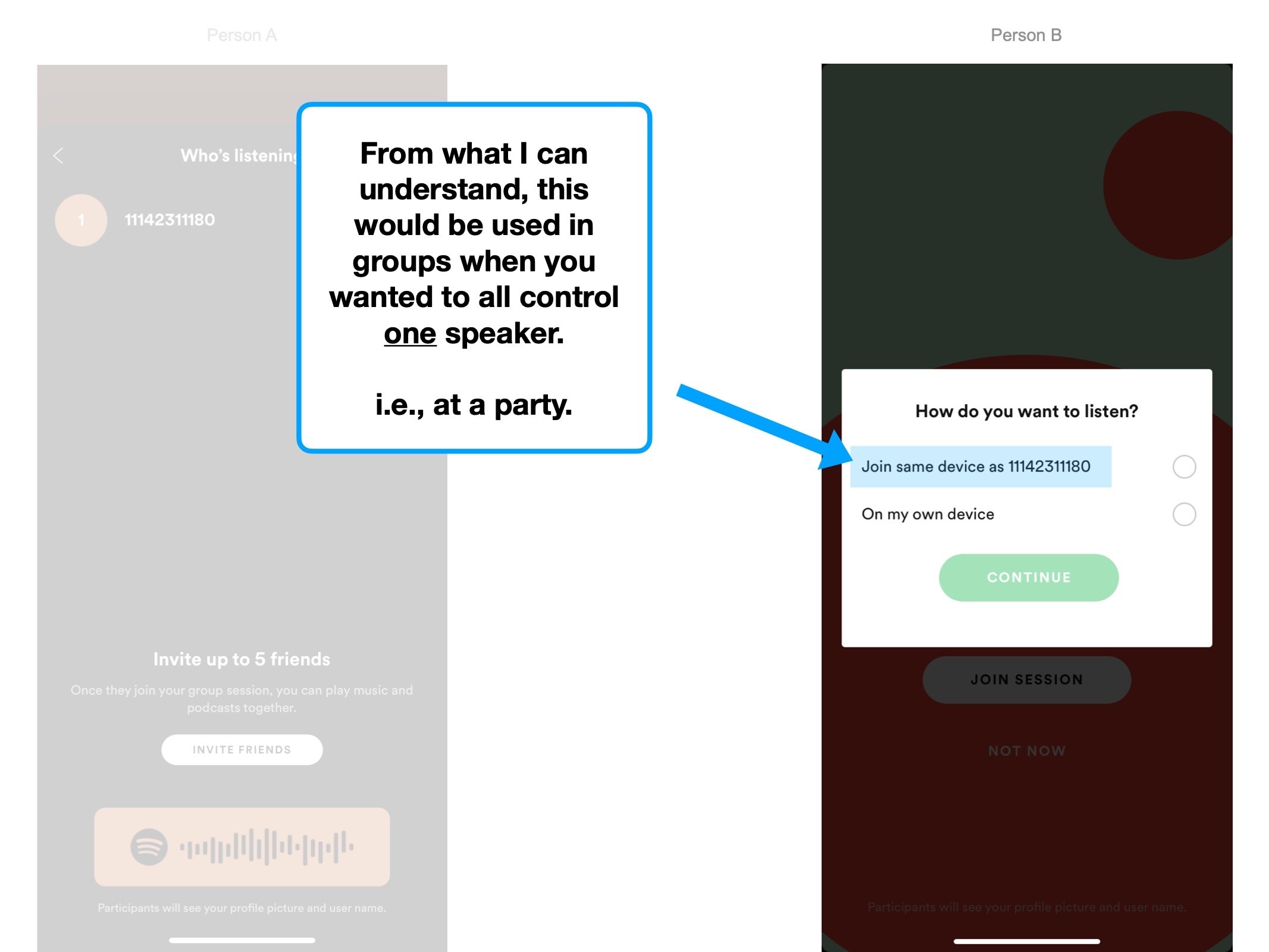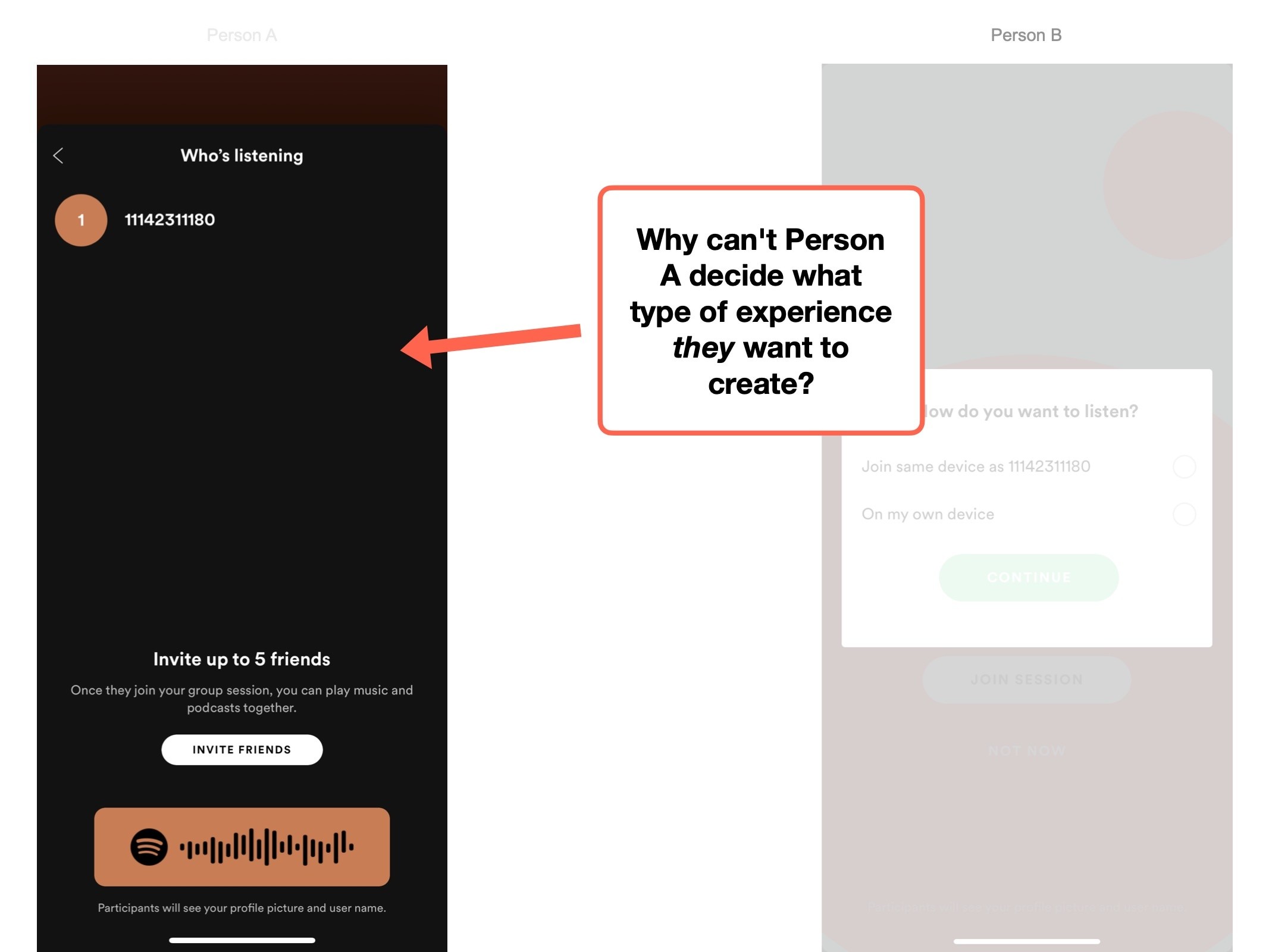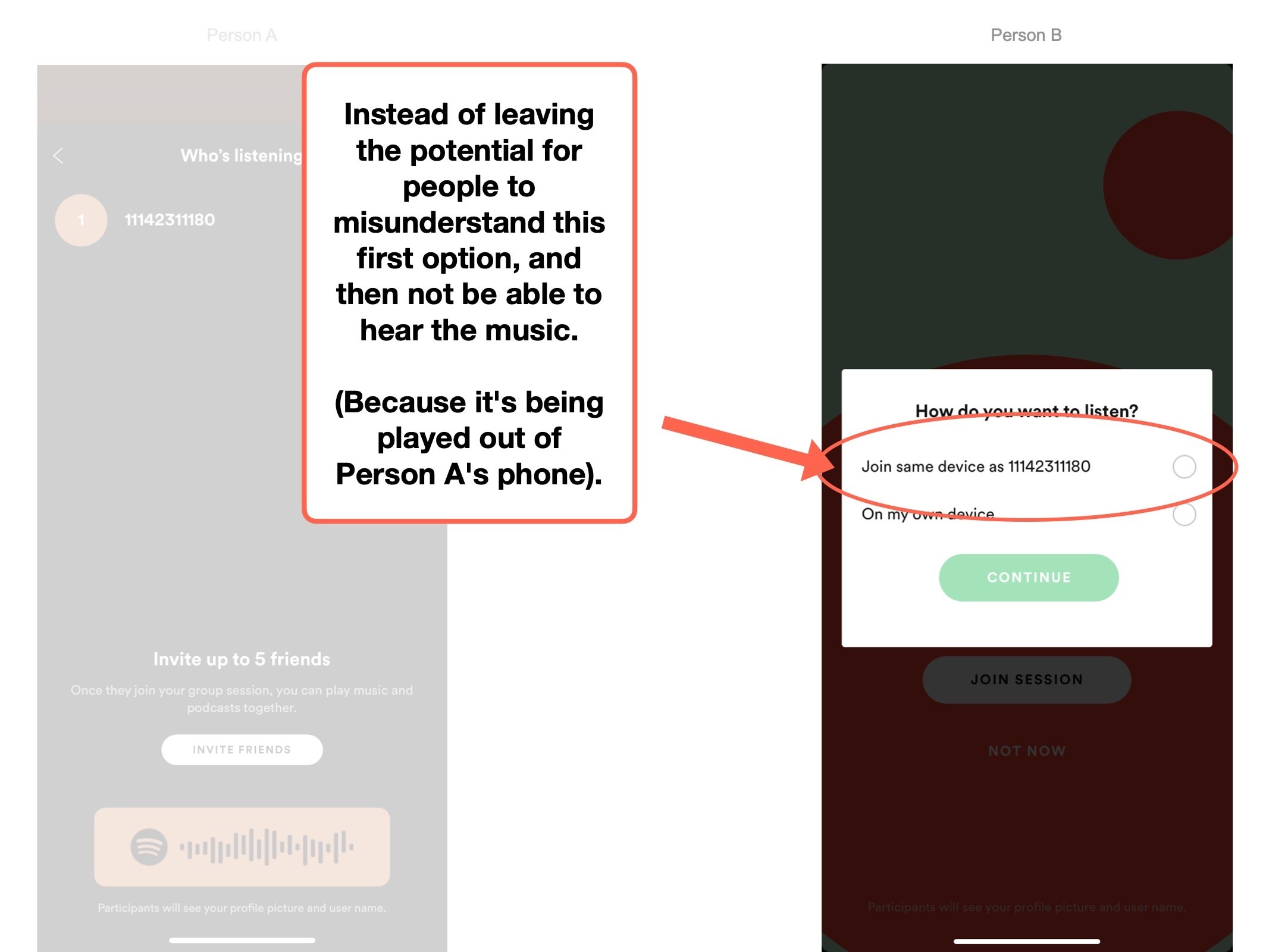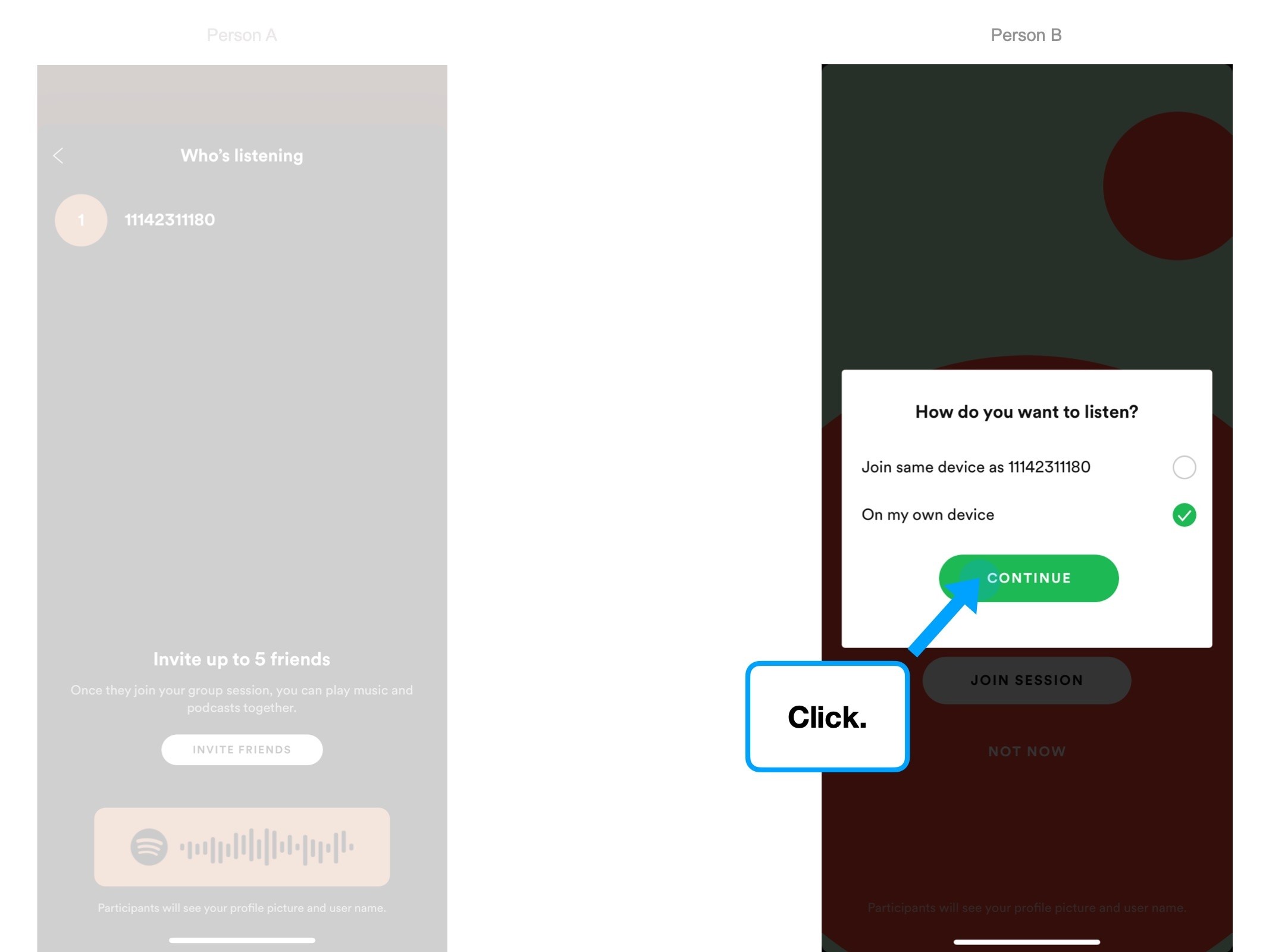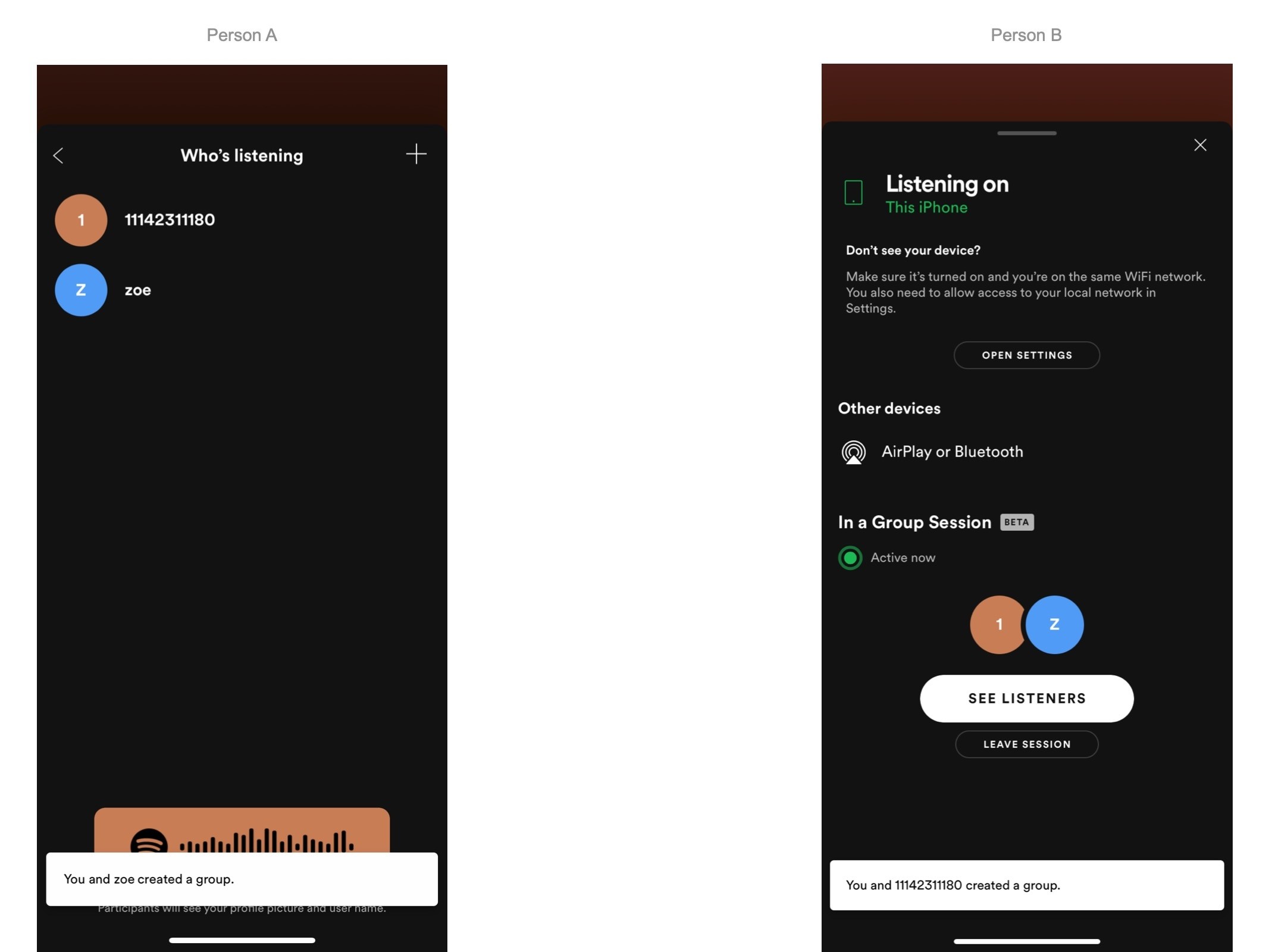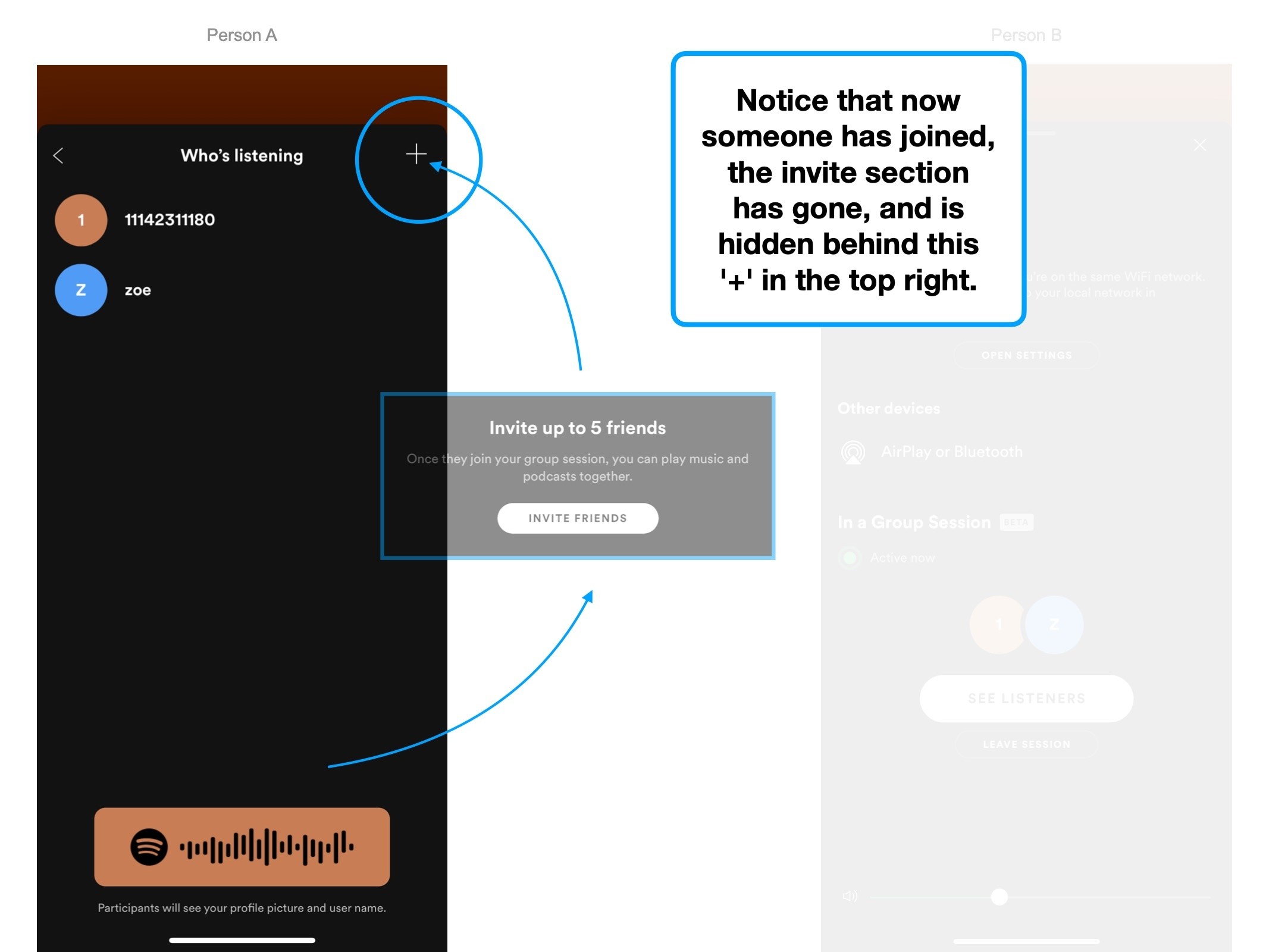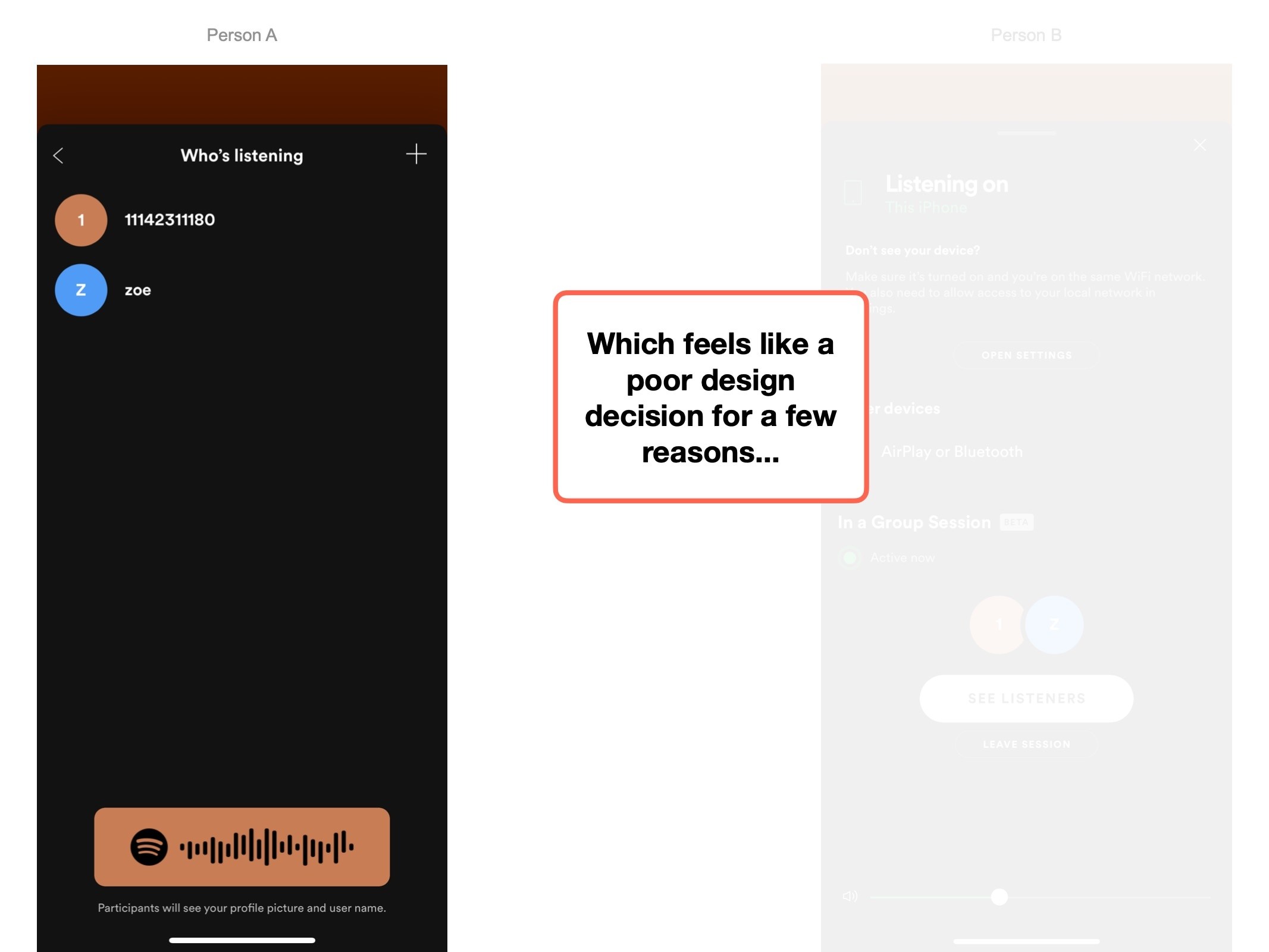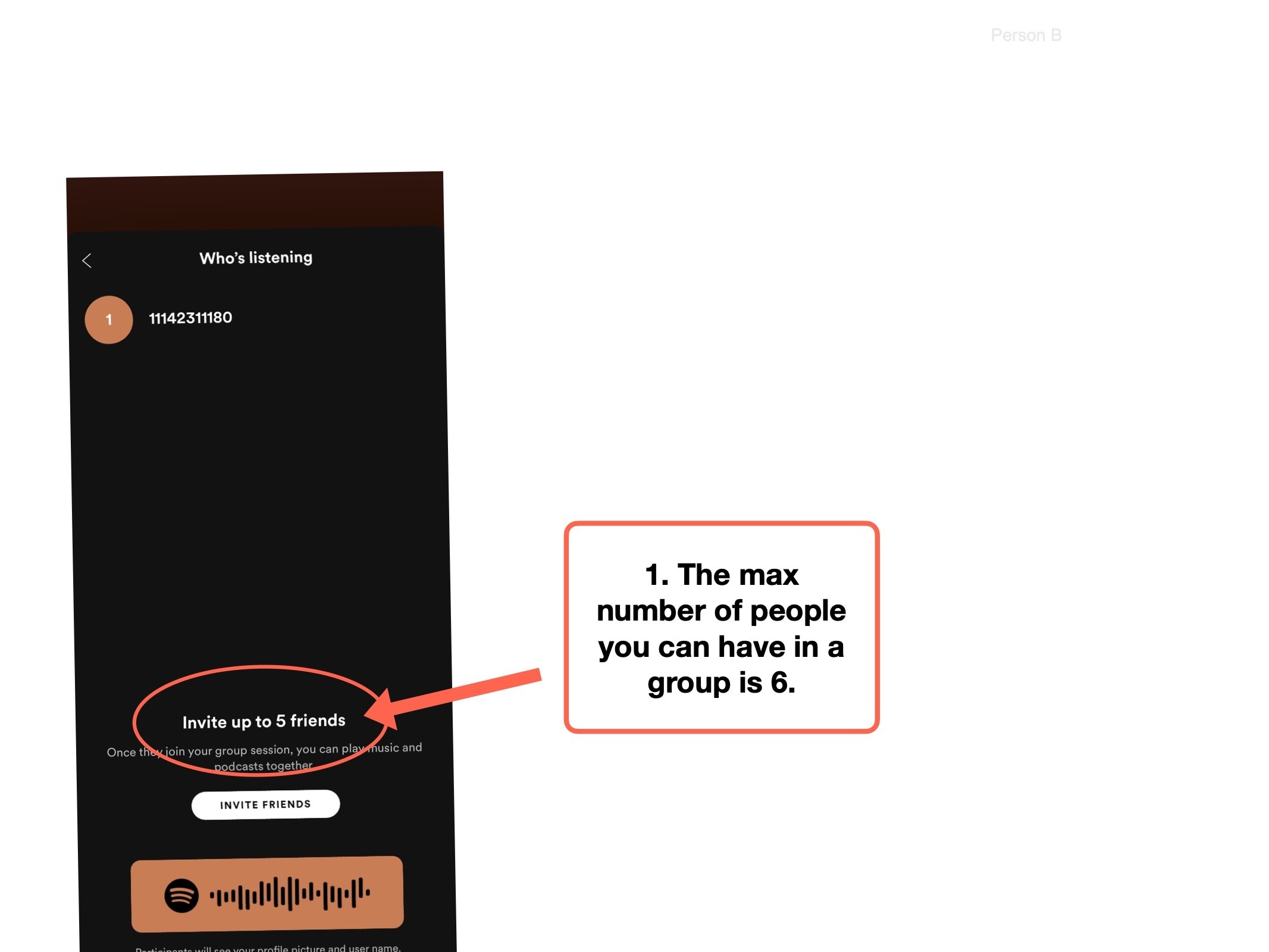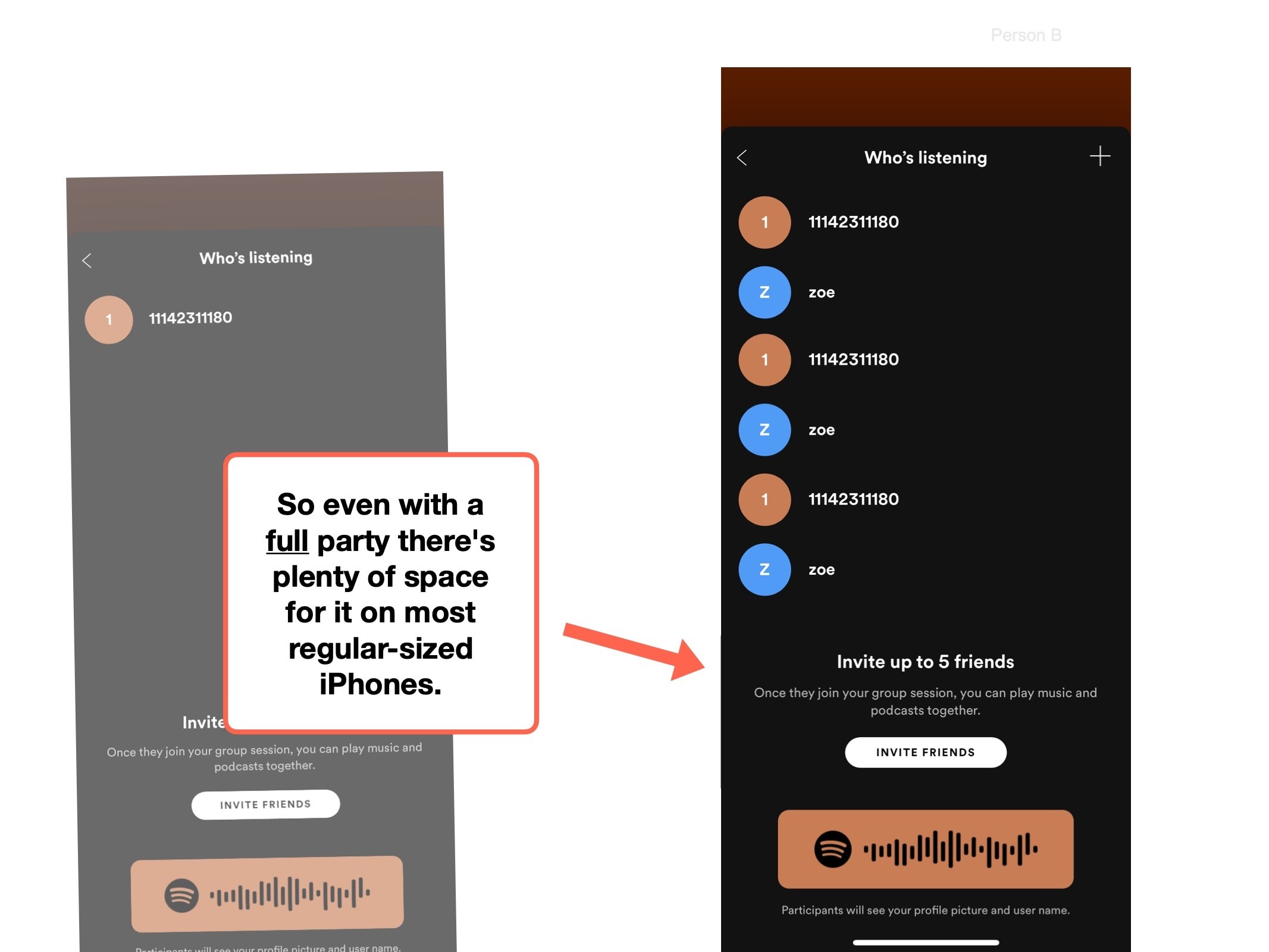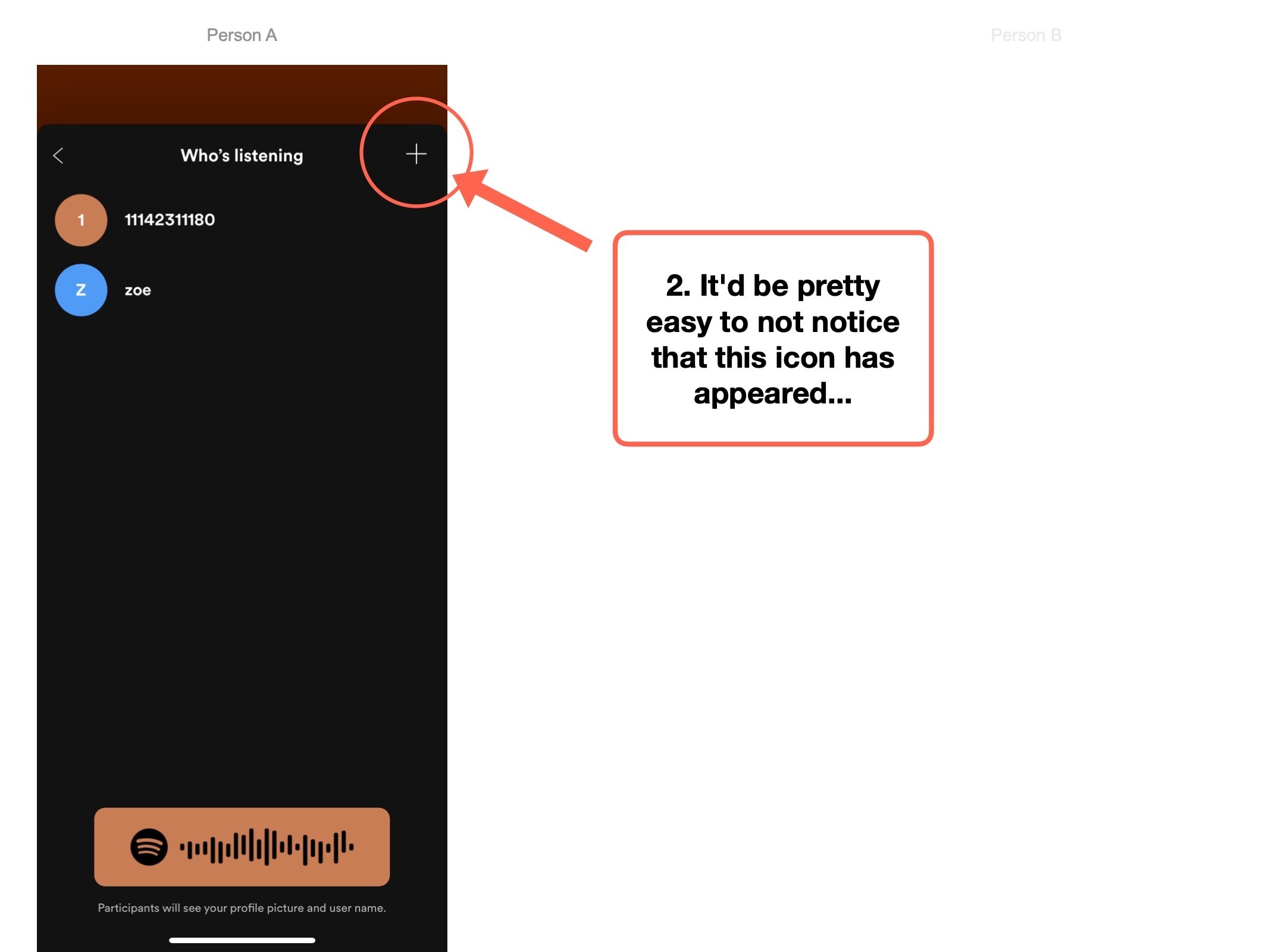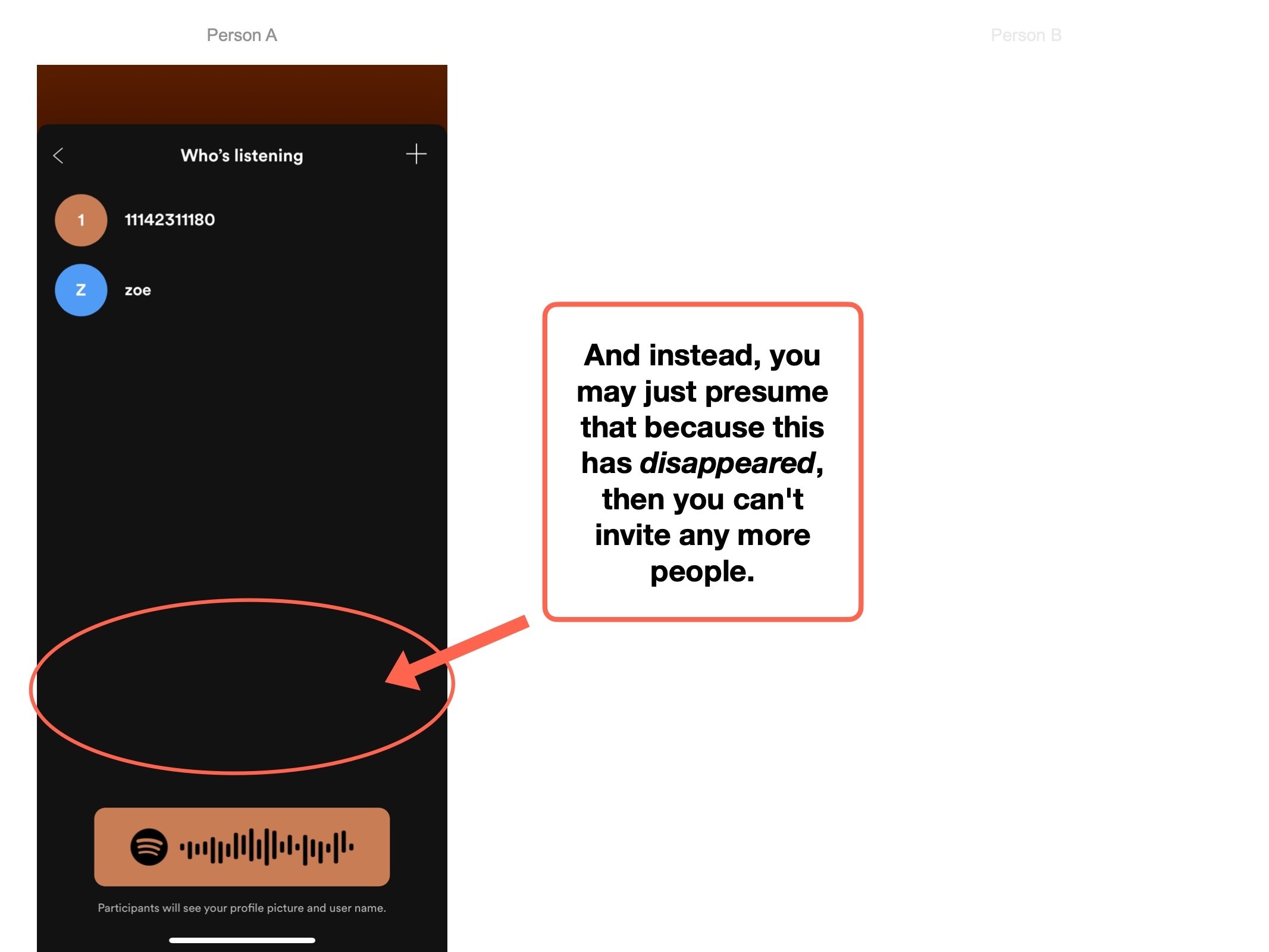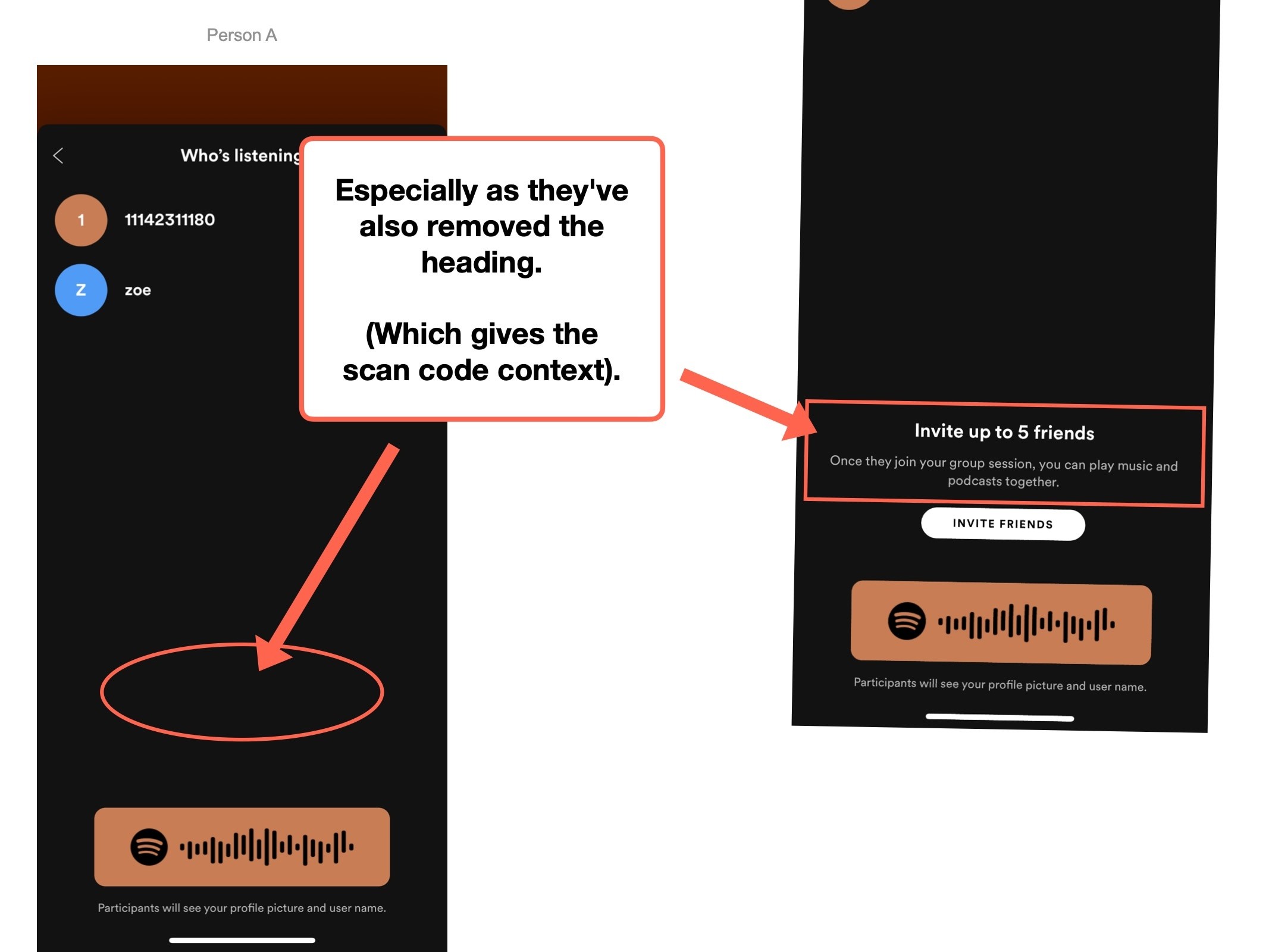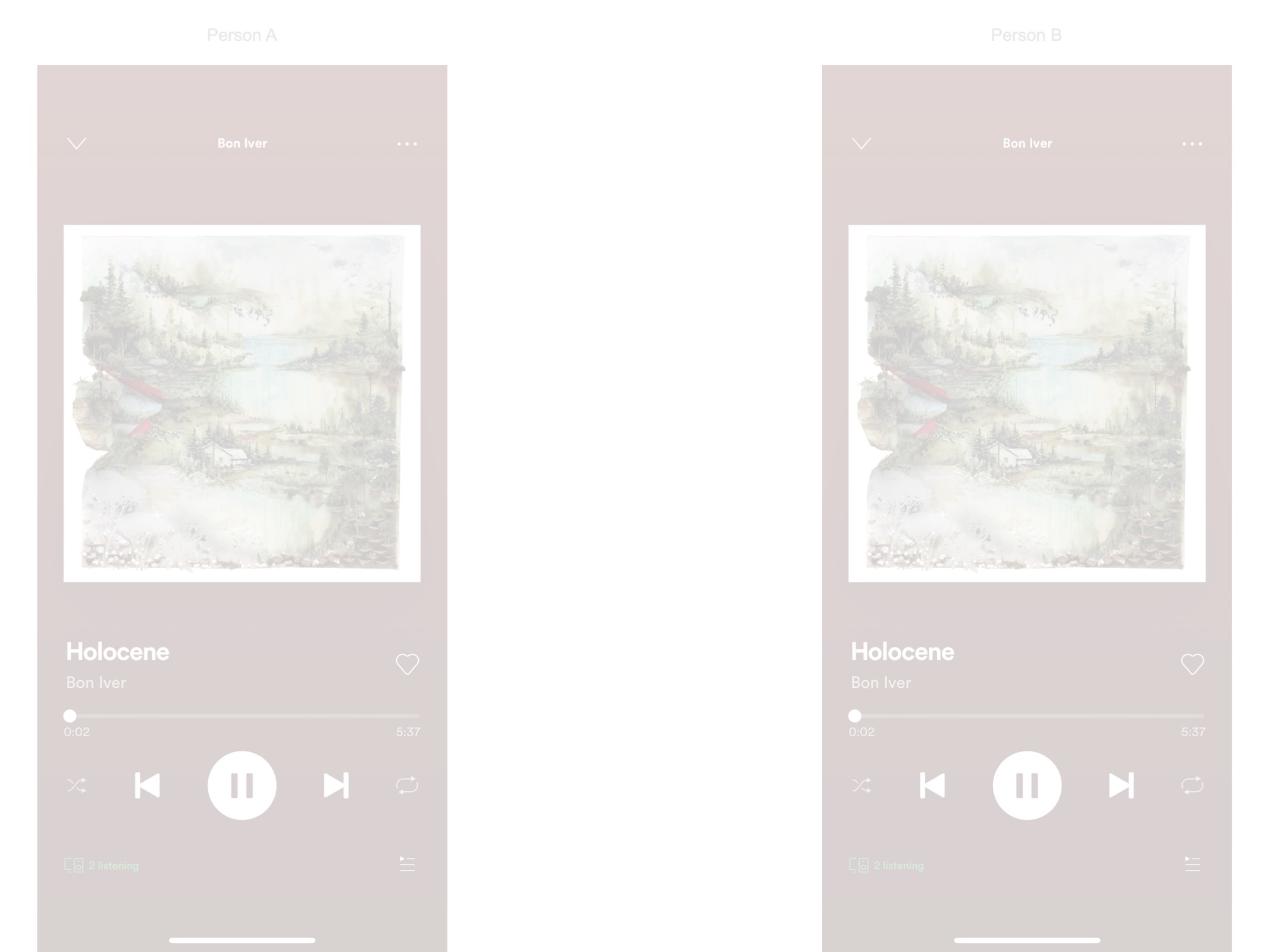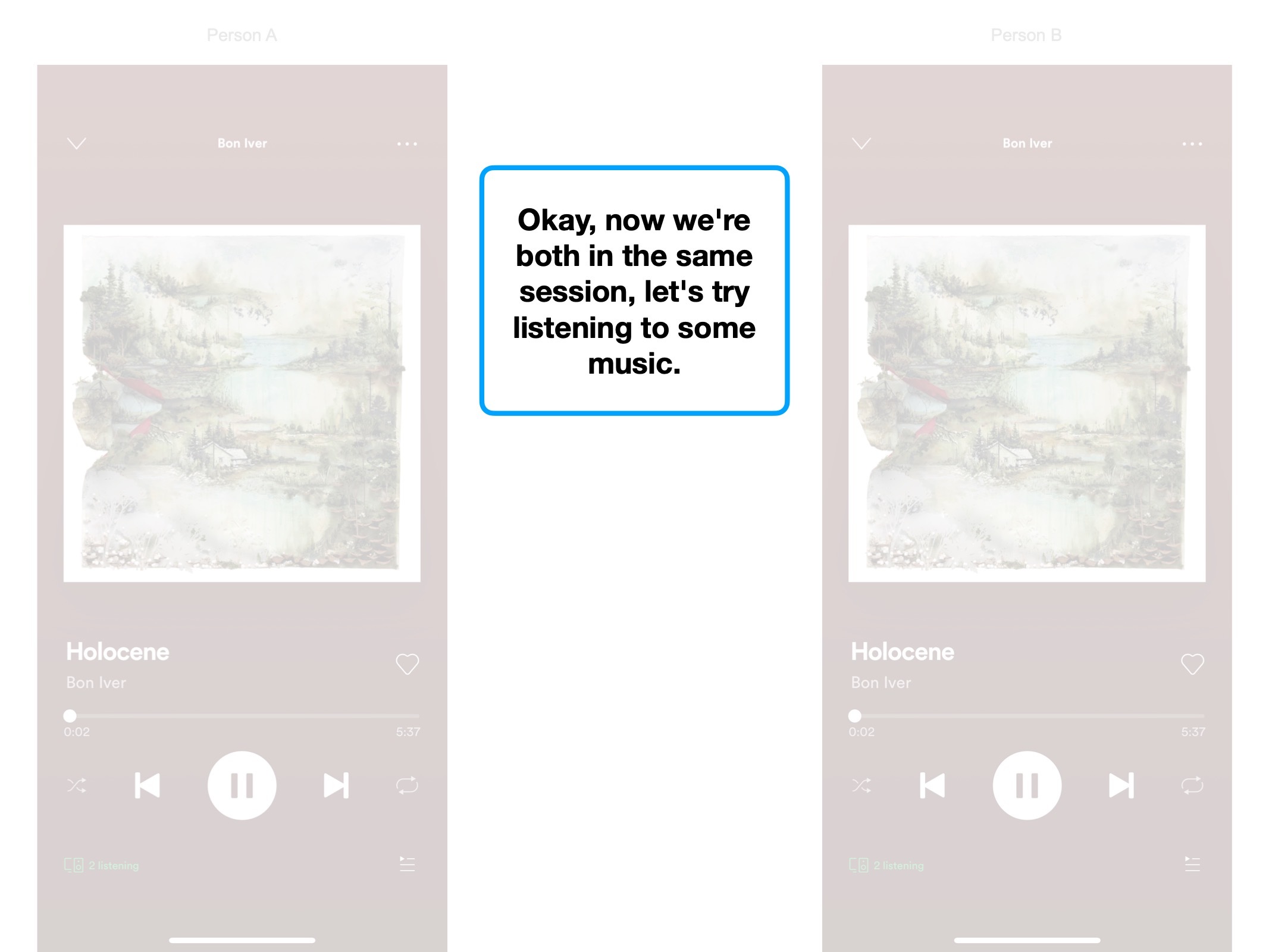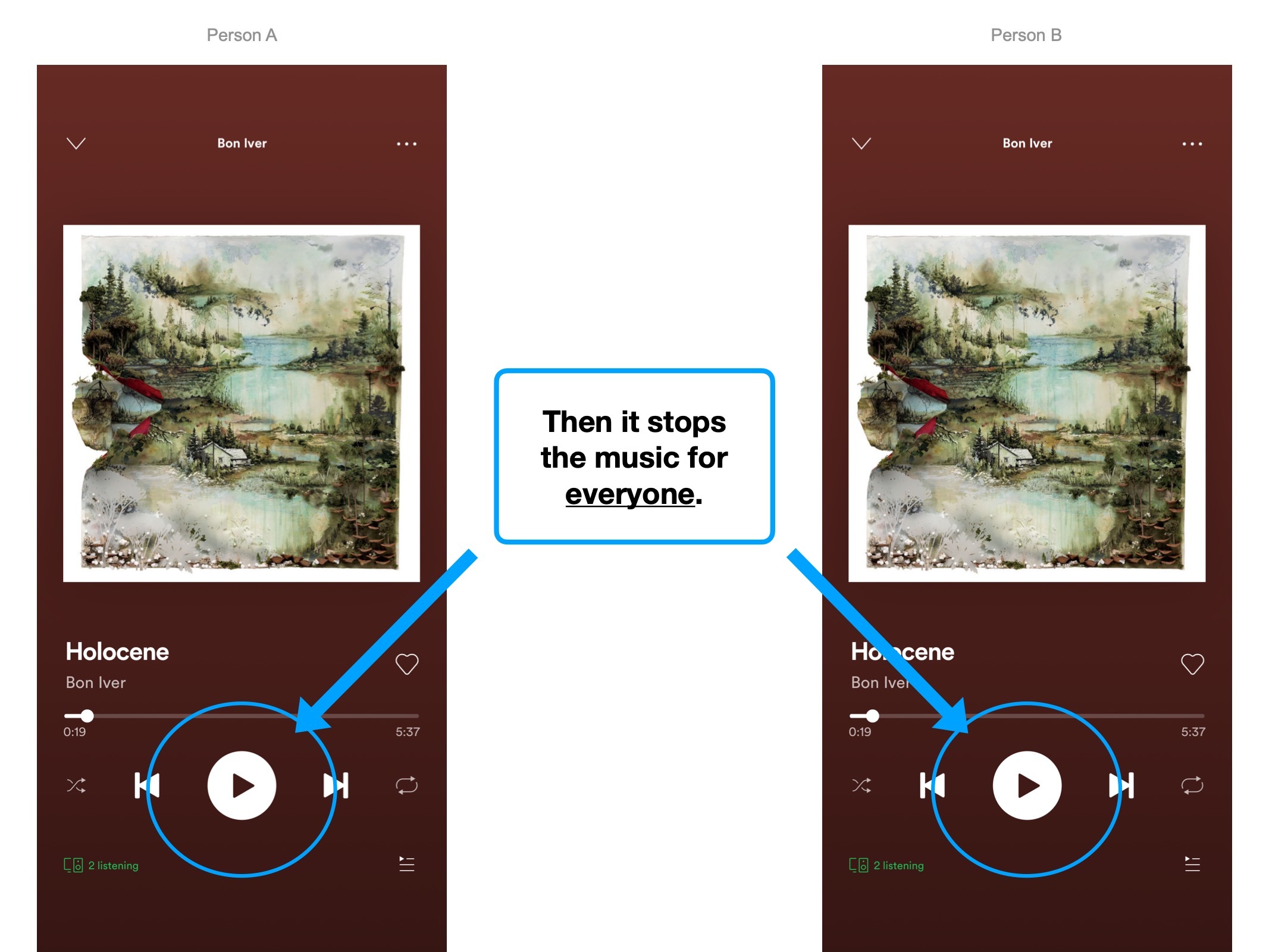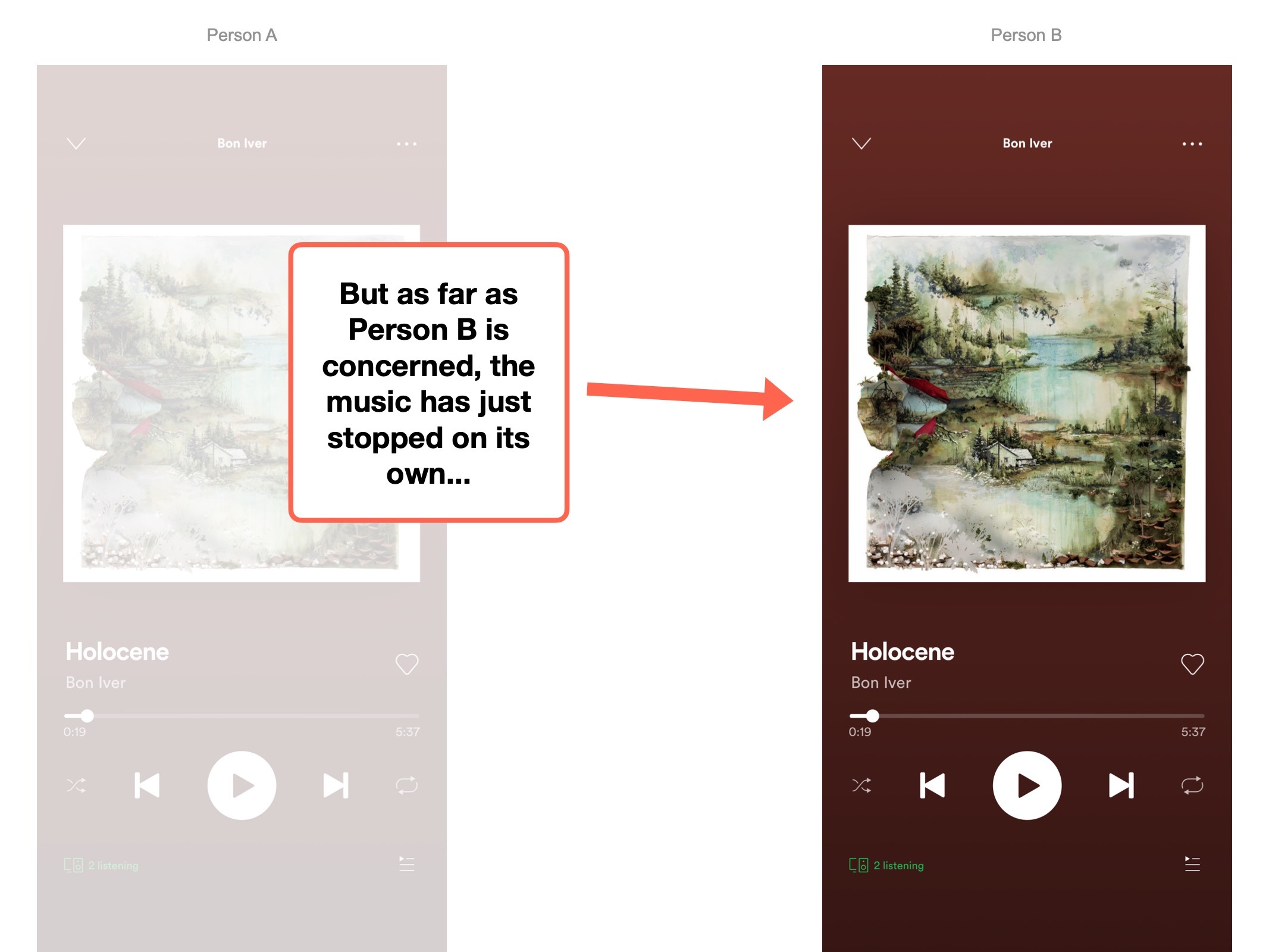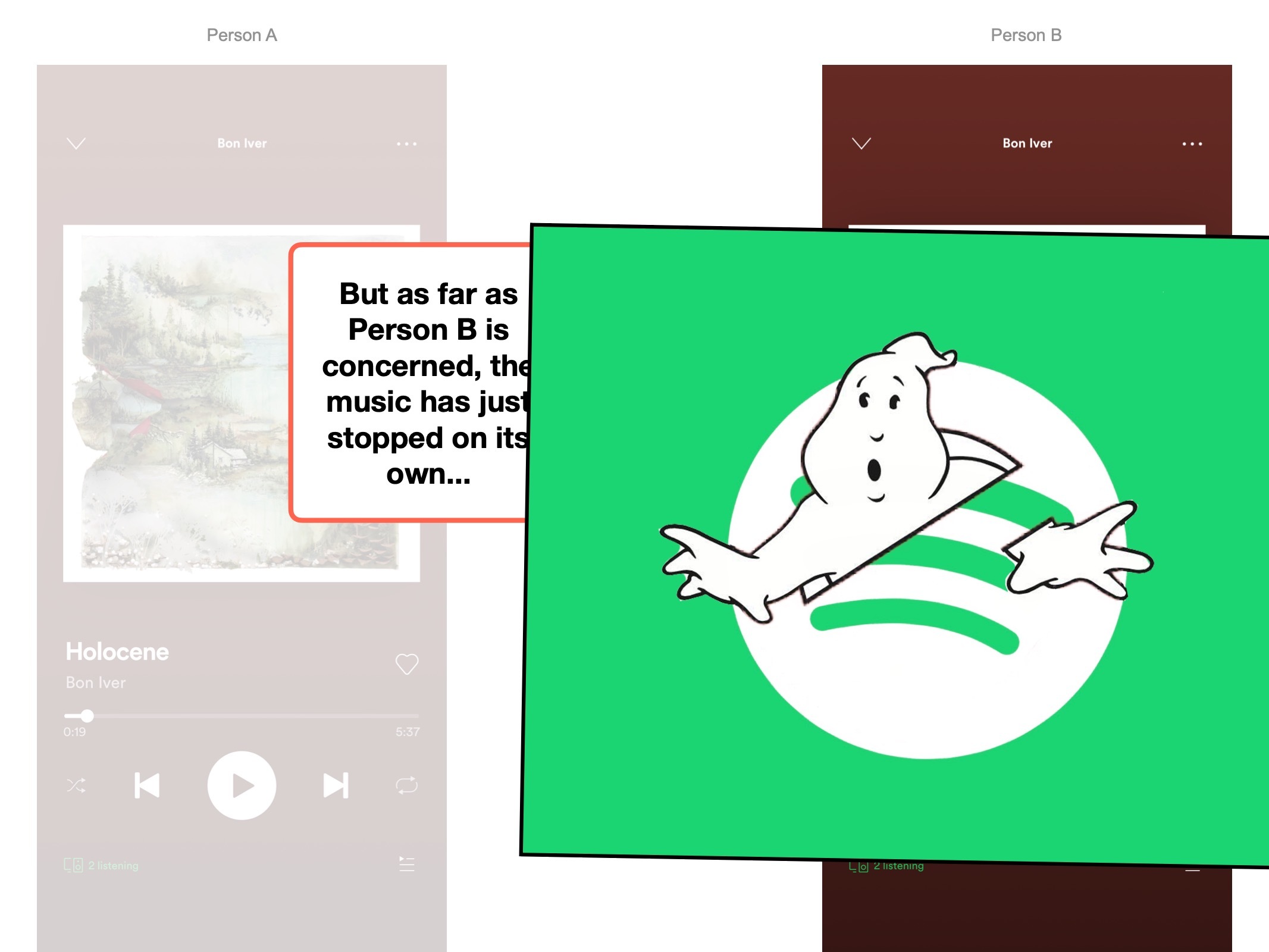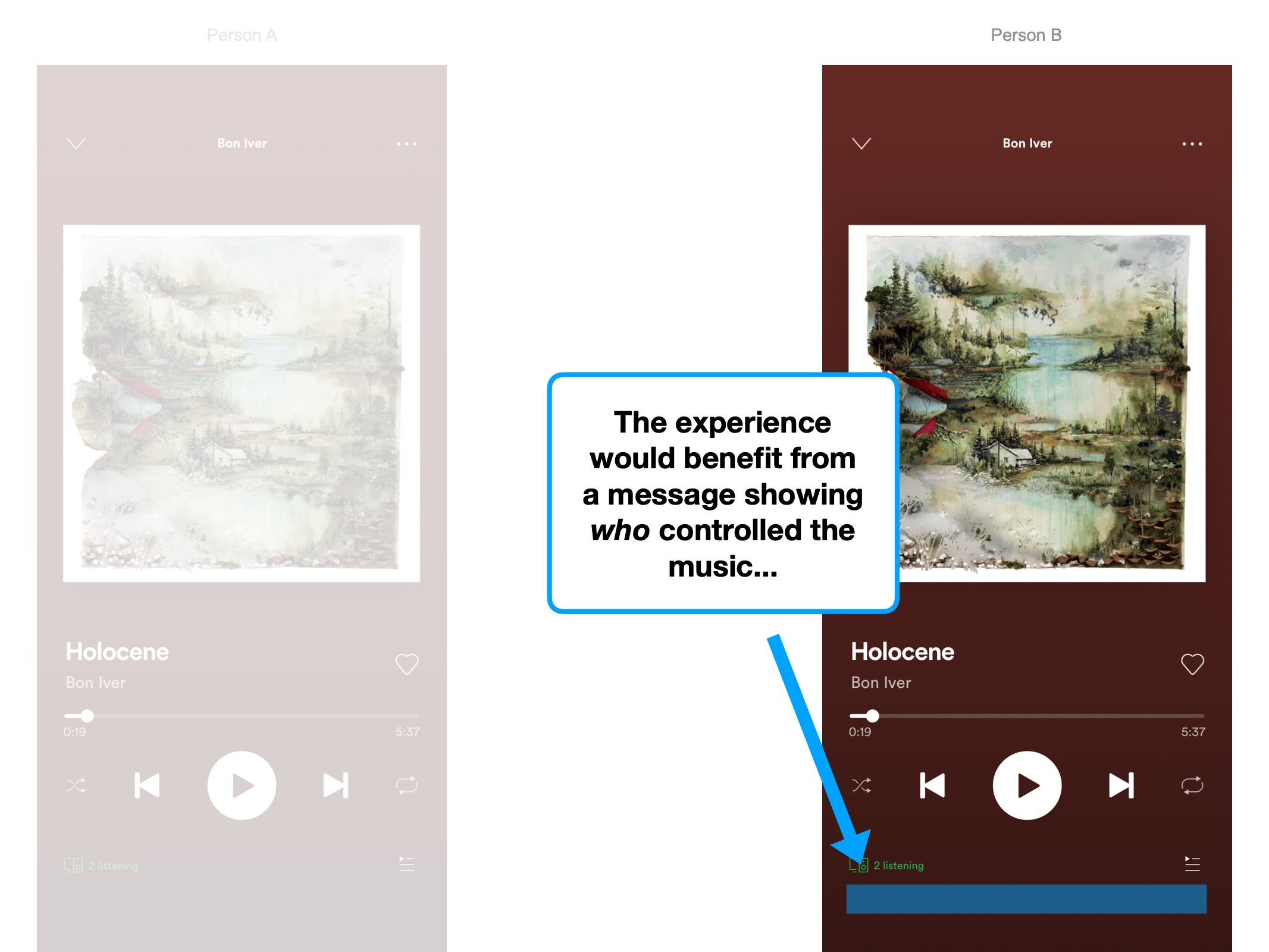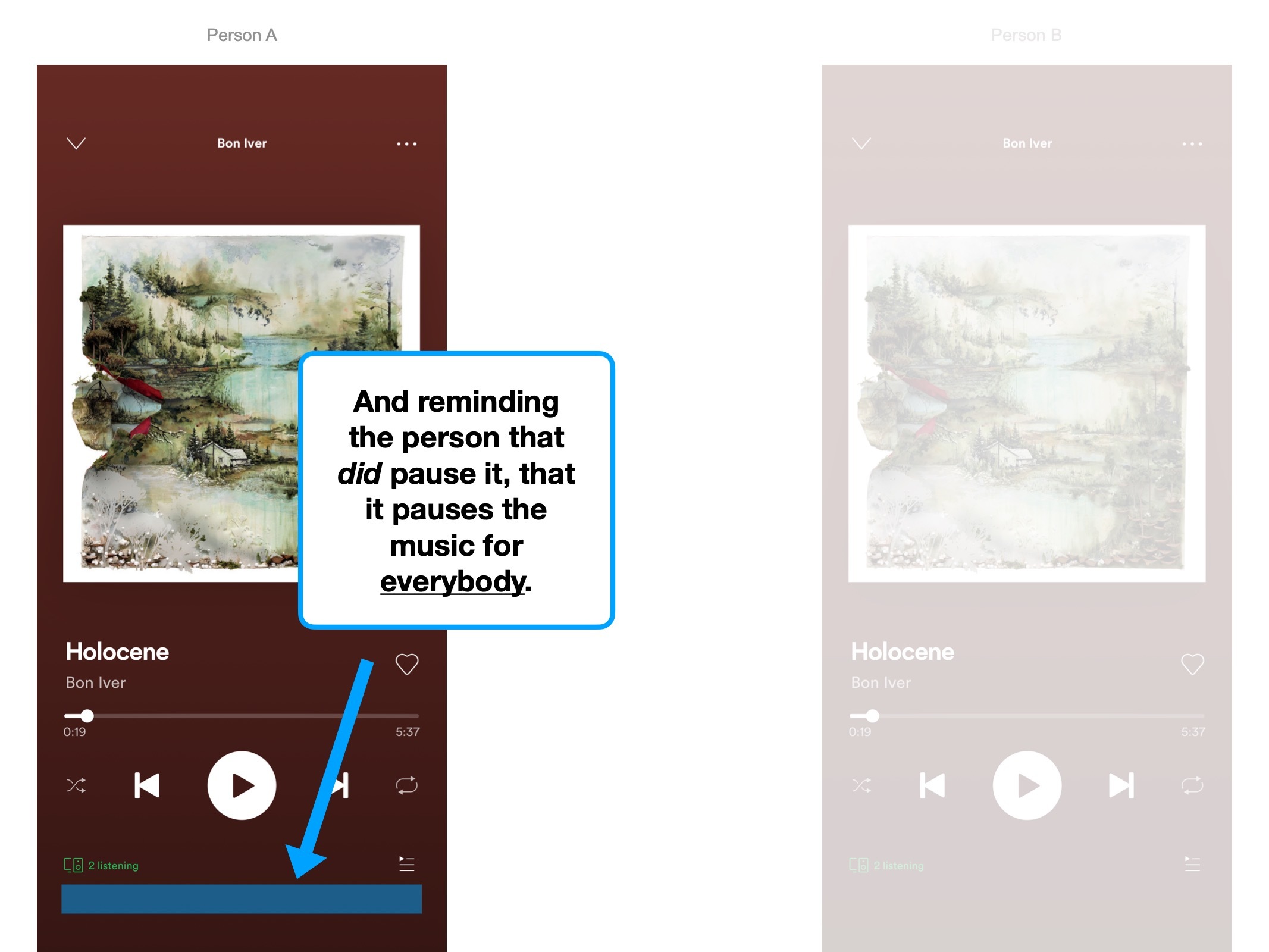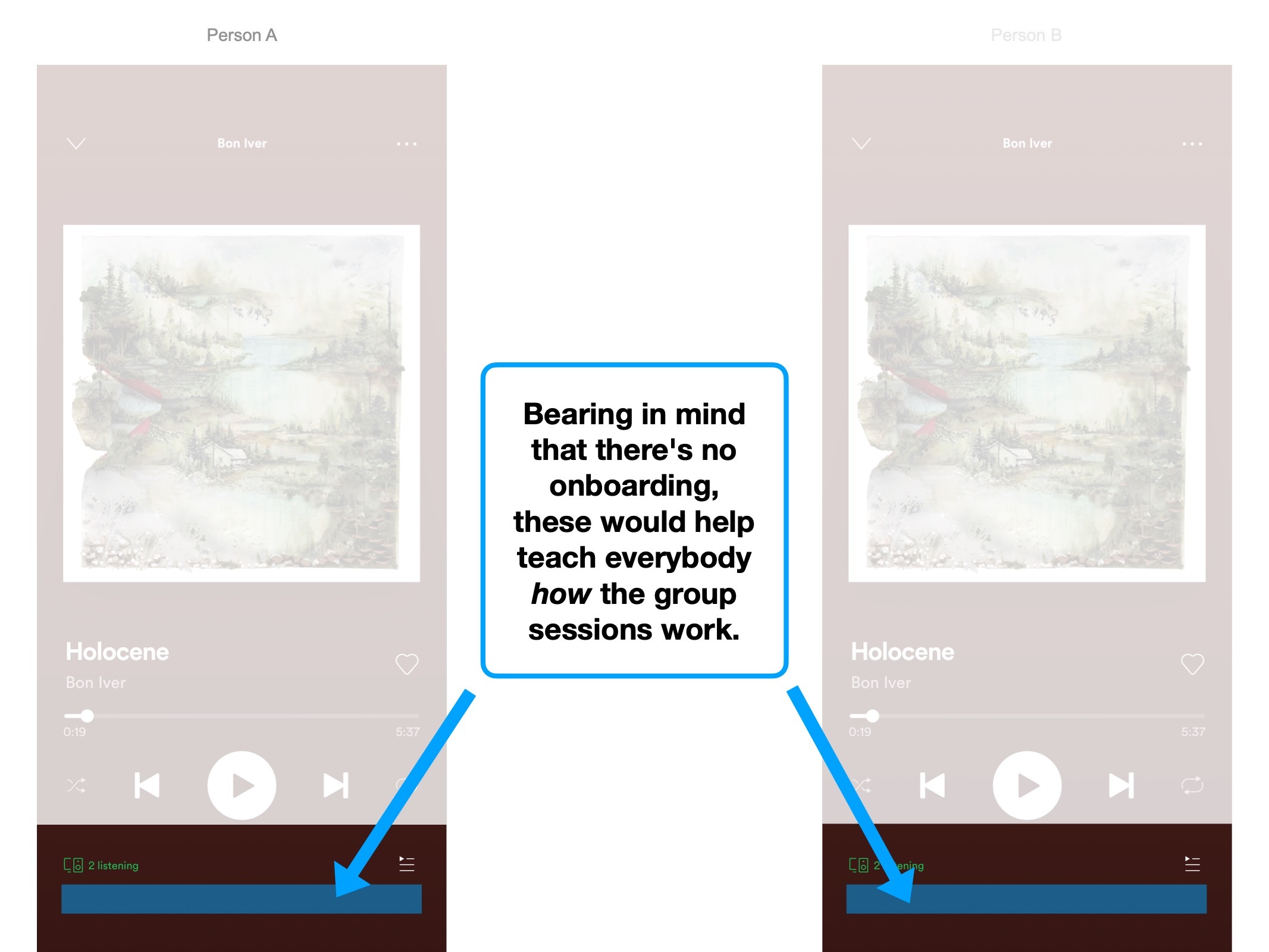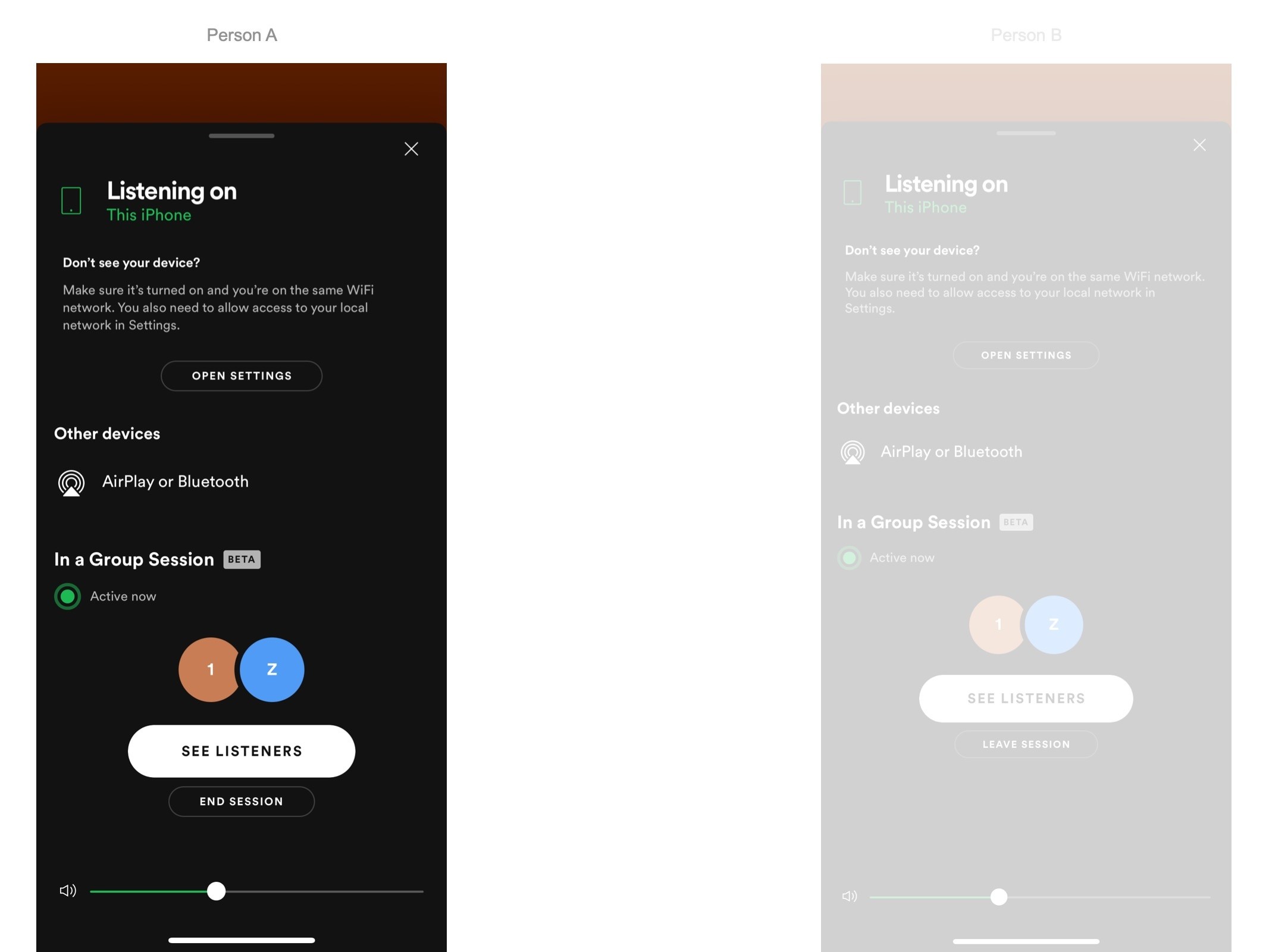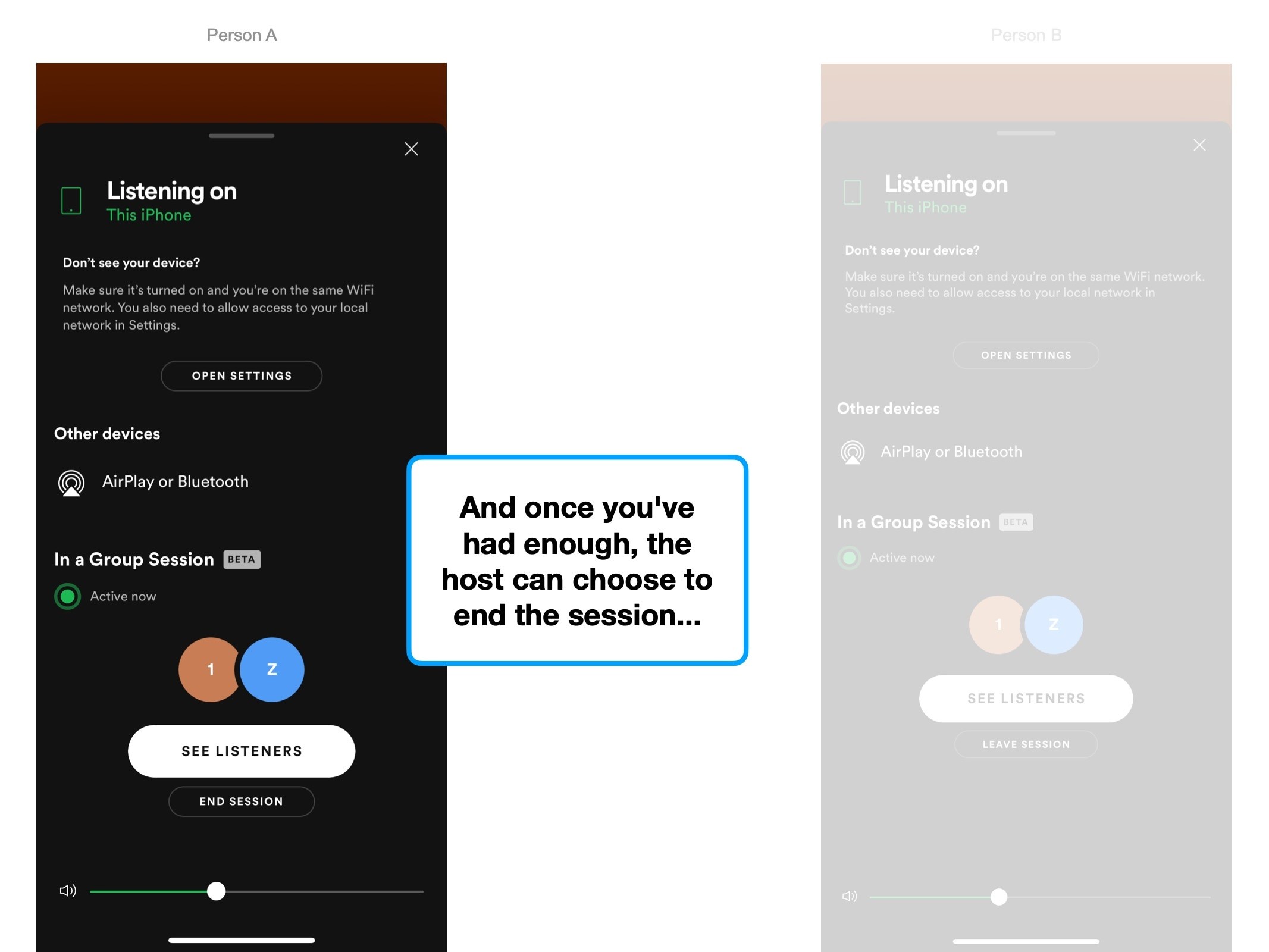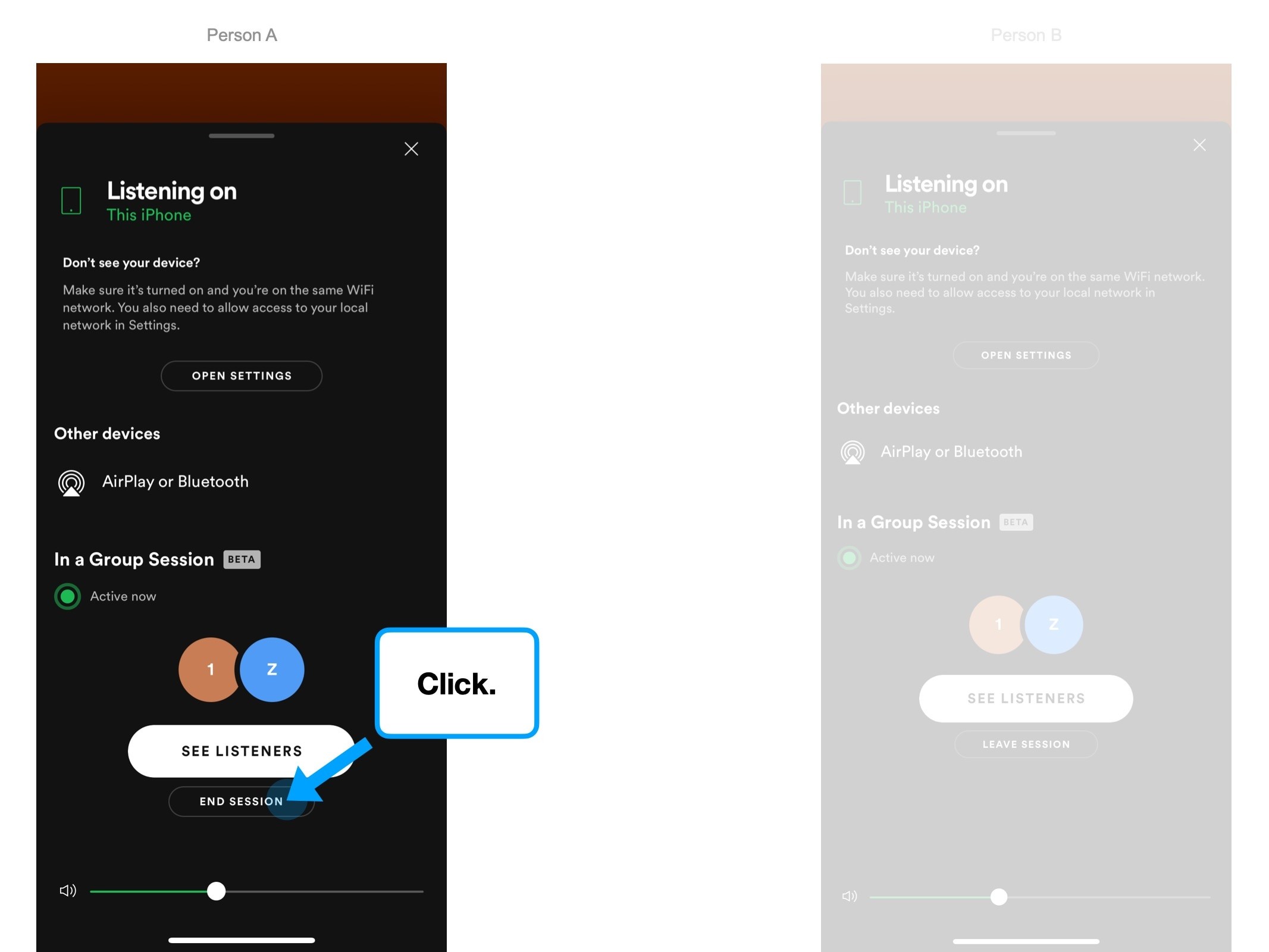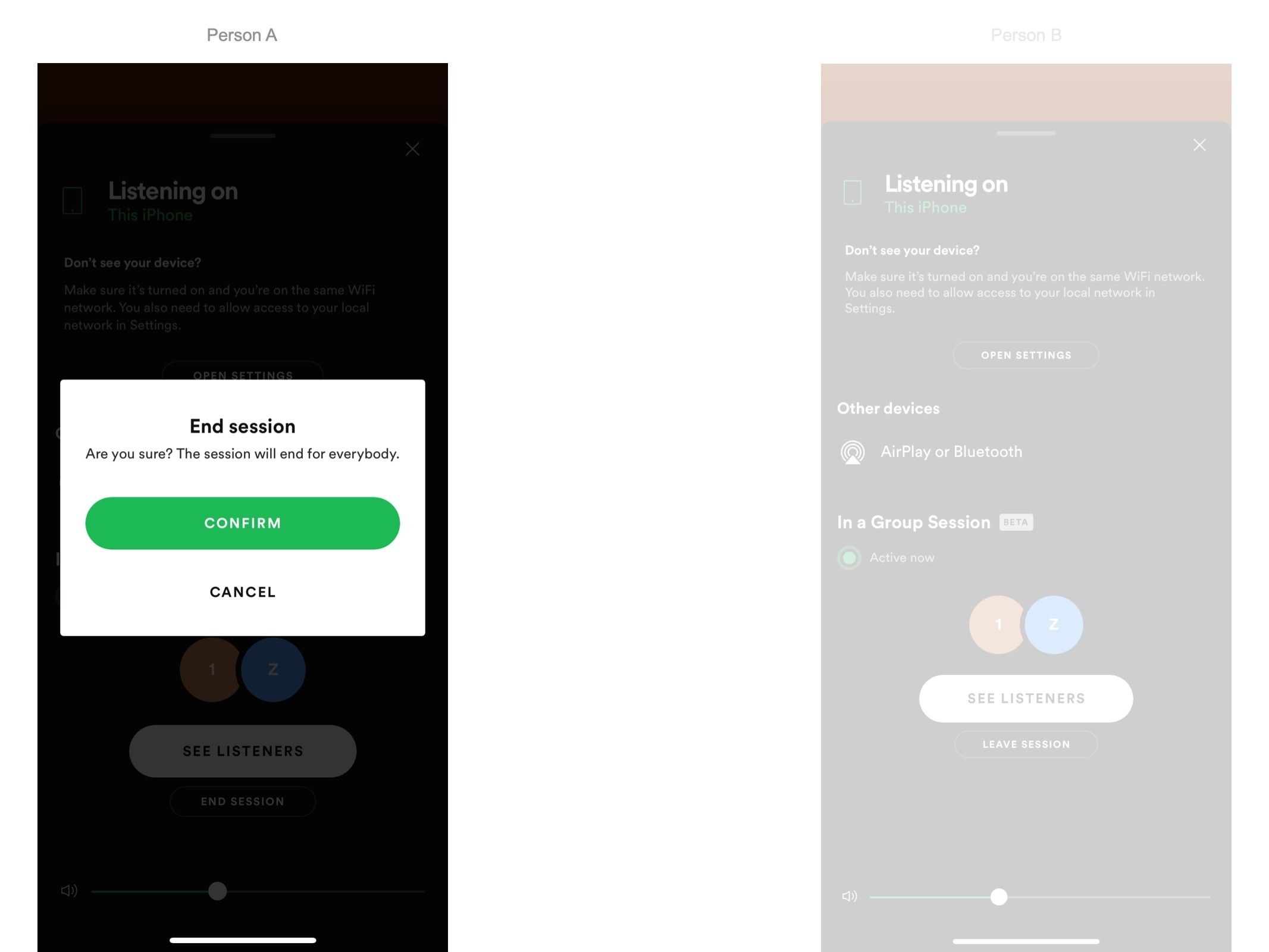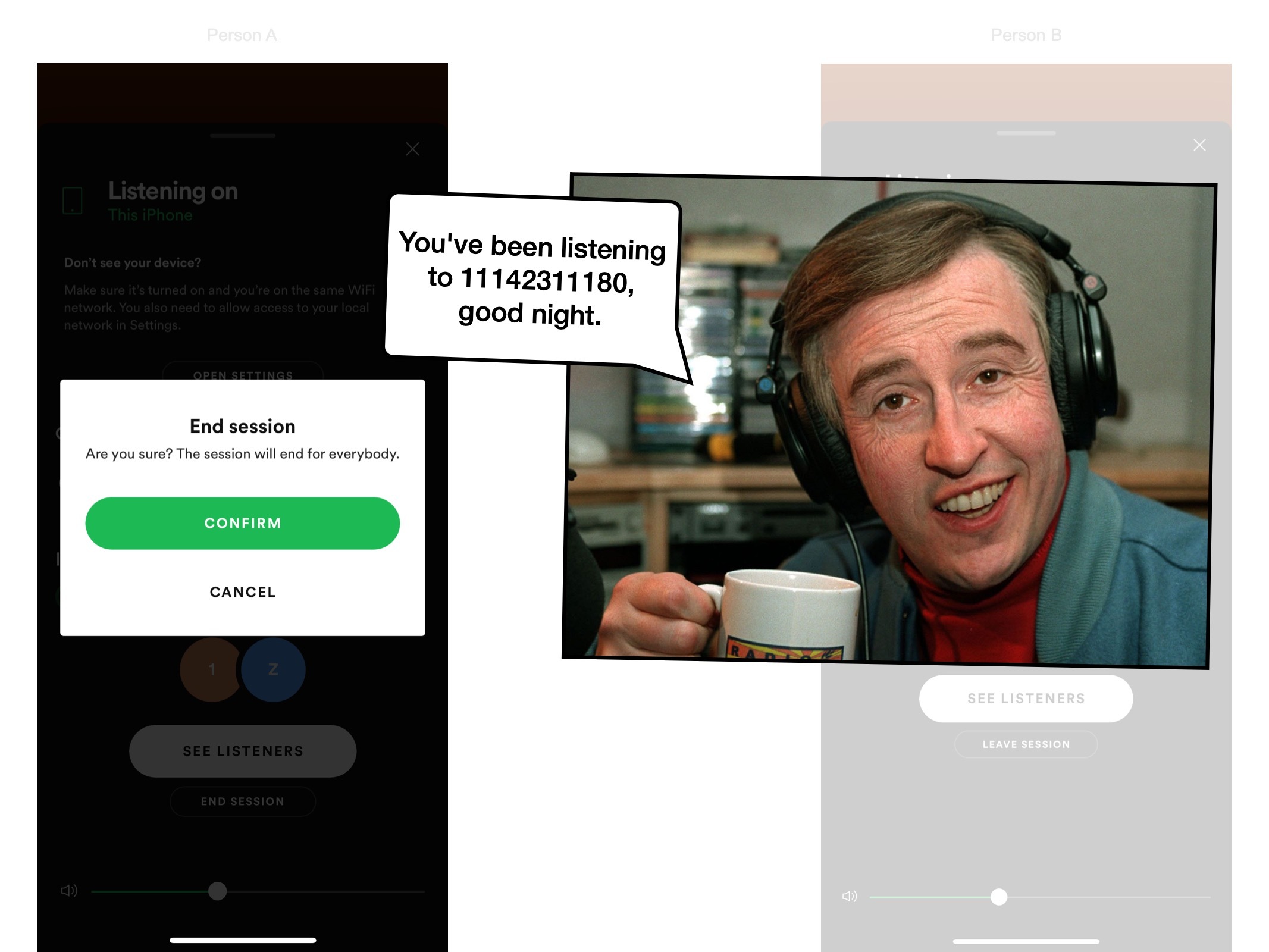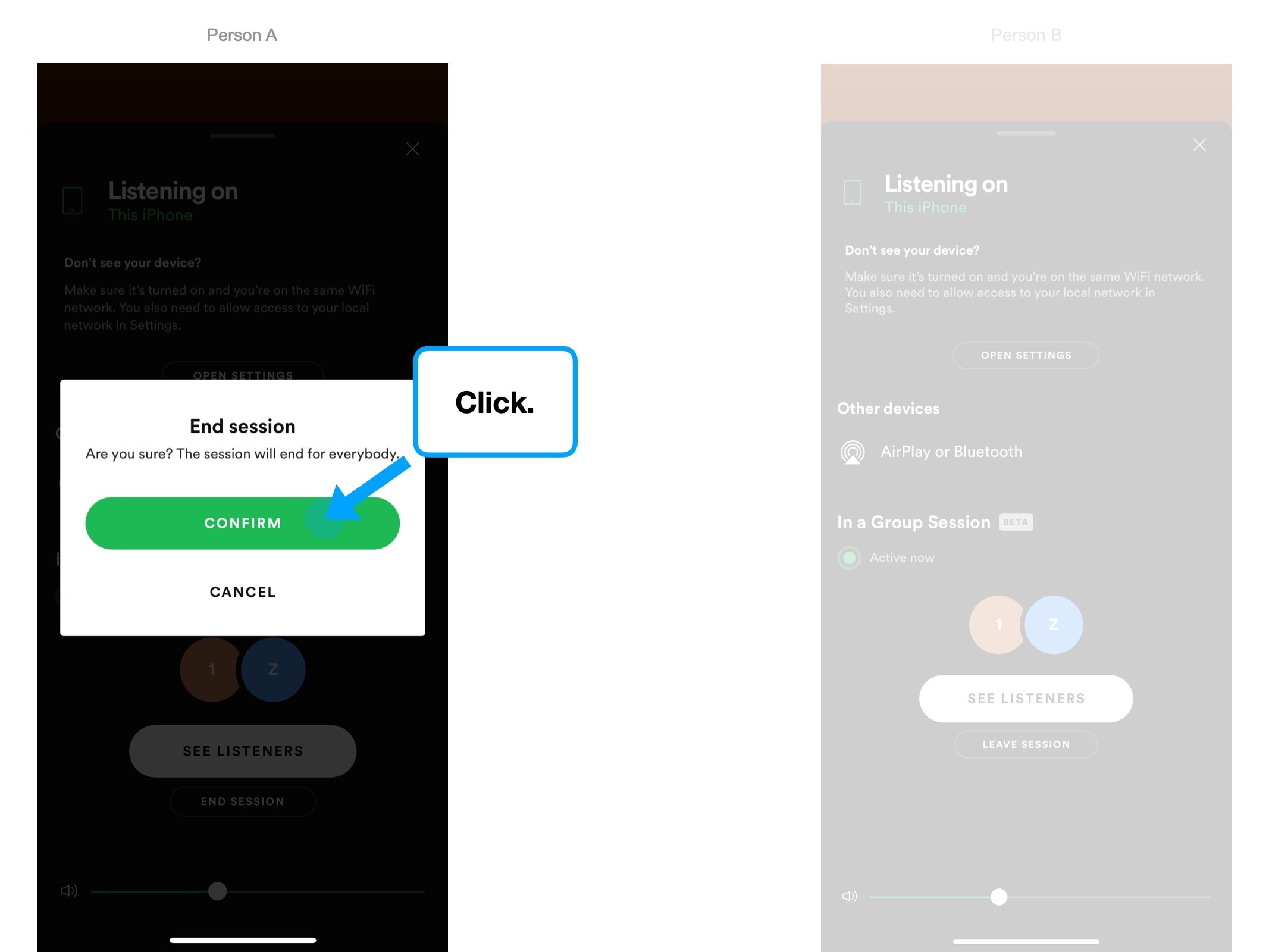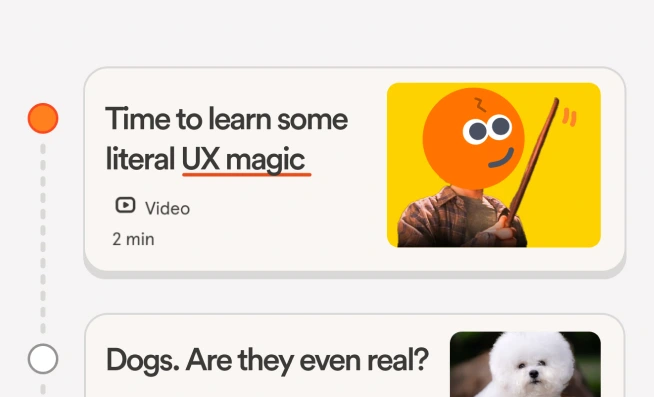A rare Spotify miss: Group Sessions
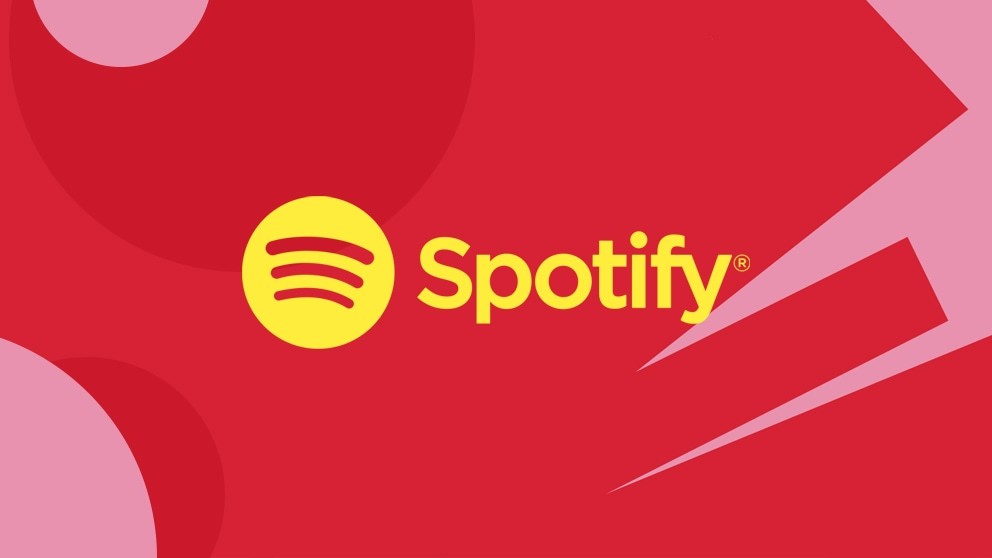
The music industry has been transformed since Spotify was founded in 2008. Music streaming has become so successful that many people wouldn’t even consider owning a physical format of music.
For some—aside from live events—the entire experience of music is online.
So when Spotify started beta testing a new feature called ‘Group Sessions’, which lets friends listen to music together remotely, I expected their UX to be world-class.
But is it? Well, let’s take a look.
4 UX takeaways
1. Usernames vs display names
Although they’re often confused, there are two types of ‘name’ for your users:
Username: typically unique, and references a specific user.
Display name: friendlier and can be anything, such as ‘James’.
And there’s no better place to demonstrate the importance of this distinction than Twitter.

Display names serve an important function: they allow for personalised experiences within large databases, without the incumbency of everything being unique.
For example, the version on the right is better because it’s immediately recognisable as a real person.
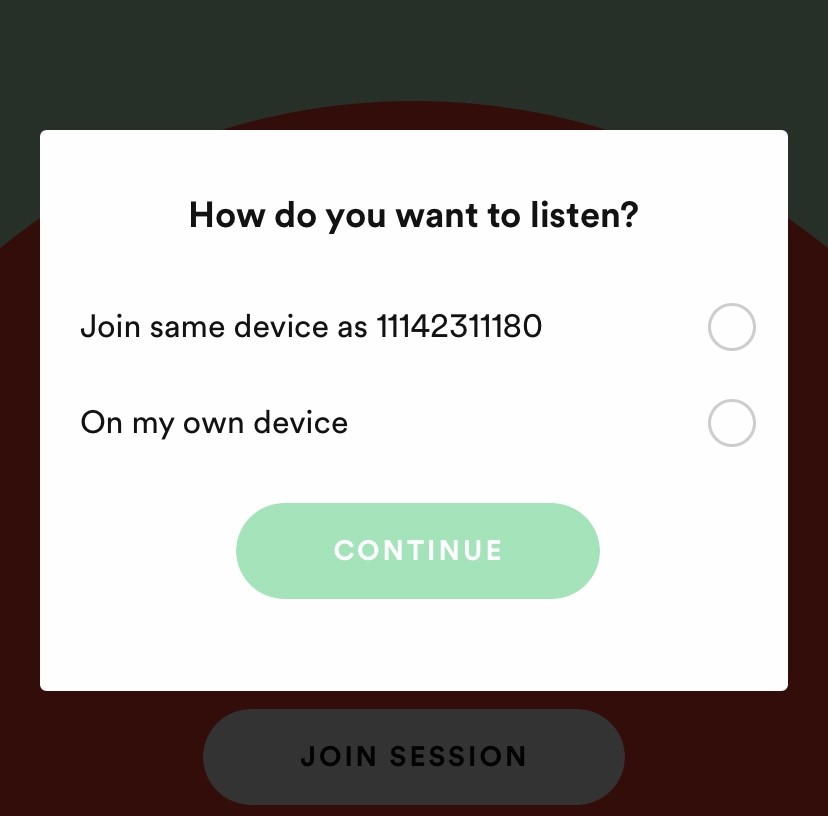
Yet, if you connect to Spotify through Facebook, then you’re arbitrarily assigned a display name—which is my case was a random 11 digit number.
Spotify would improve their UX by prompting the user to change their display name to something more genuine before creating a Group Session.
1: It’s a task that only needs to be done once, ever.
2: Avoids any confusion over who ‘11142311180‘ is.
3: Creates a more ‘real’ and personalised Group Sessions experience.
2. Be one move ahead
Imagine if every time you clicked on a link, it opened in a new tab, but didn’t then set that tab as active. i.e., you had to then click into that tab.
It’d be infuriating to use, and is a brilliant example of a subtle UX trick that turns a 2-step process into a single action.
☝️
Action 1: Open a new tab
✌️
Action 2: Set new tab as active
This works because browsers have correctly assumed that if someone opens a new tab, they probably also want to be on that new tab.
Or rather: they’re confident that they know what your next action would be (going on that tab), and so they just do that for you.
And Spotify nail this technique when copying a ‘Session’ link to share with your friends.
They’ve combined the actions of copying a link, and clicking to go back into the group lobby.
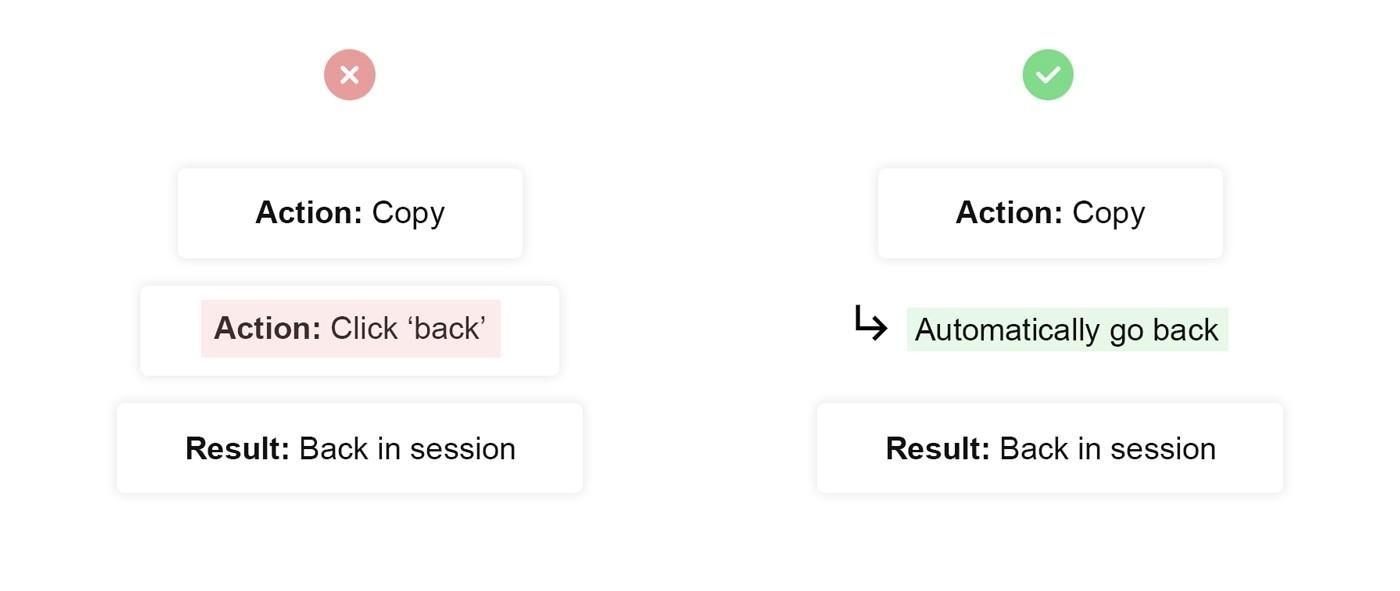
The result is a pretty seamless and uninterrupted experience, which works because they understand that once their users complete Action A, they’re incredibly likely to want to do Action B.
Tip: Don’t just assume what your users will want to do. Instead, look at the data. If less than 80% of your users complete both actions in perfect succession, you should probably leave them as two separate steps.
3. A decision without context
As soon as you’ve clicked on someone else’s link, you’re faced with a decision: how do you want to connect to this session?
📱
1. All control the music on one device
i.e., multiple devices picking music for one speaker at a party.
🌍
2. Listen on your own devices
i.e., control the music for everyone listening simultaneously, like a radio station.
These are totally different group experiences. So you’d hope that the selection screen is primed with enough context about each option, that you can comfortably make a decision.
But unfortunately, it’s not—instead, it's 🐨 Fuzzy Context.
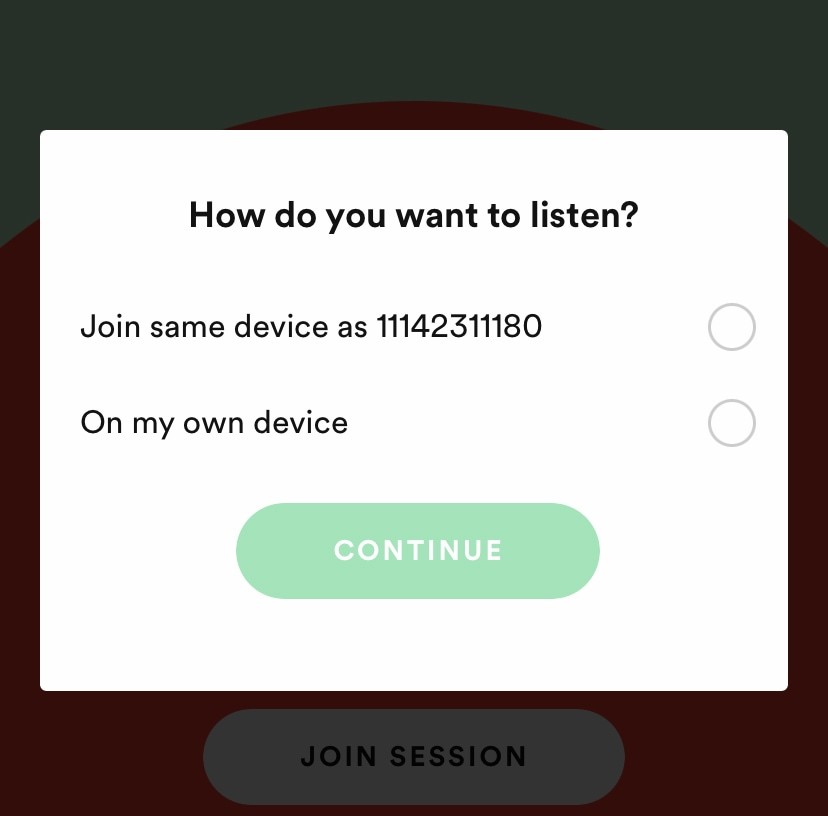
It’s practically a law of UX: if you’re asking the user to make a decision, give them enough information to actually be able to decide without the fear that they chose the wrong option.
And Spotify could do this fairly easily, with a few additional lines of text.

4. "React and explain"
There are many approaches to onboarding, but let’s look at two:

Clearly, sometimes you need to onboard users before they do something—to explain the consequences of an action.
But, if you’ve got a product with lots of functionality, it’s often not appropriate to attempt to onboard every possible action or feature.
Another technique is reactive onboarding: explaining why something just happened.
And—unless they add more proactive onboarding—this is the bare minimum of what Spotify should be doing while people are using the Group Sessions feature.
To be specific, any participant can pause, skip and play songs, for everyone in the group. And yet, it neither explains how this works in advance, nor does it explain what’s just happened.
So by adding a simple notification (i.e., 🧯 Reactive Onboarding) when another member of the group takes one of these actions, it’d do a few things:

1: It teaches the user that anybody can take control.
2: It clarifies why the music has stopped / skipped.
You’ve finished this study
Become a BFM+ member to track your progress, create a library of content and share learnings within your team.

Other studies picked for you

How Product Psychology Could Stop Uber Drivers From Stealing
How upstream thinking could reduce stolen orders, avoid tip-baiting and increase driver happiness.
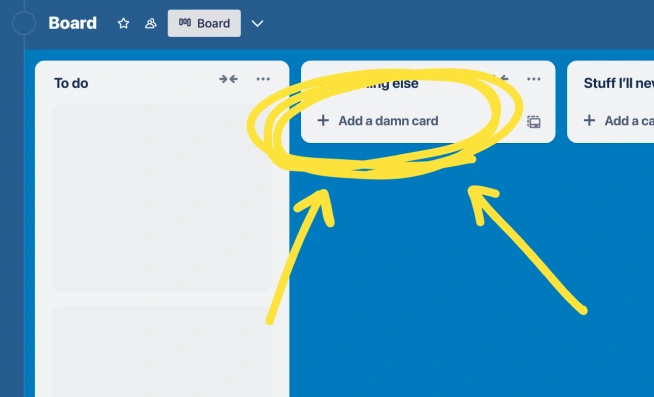
How to Reduce Churn by Doing Your "One Thing"
When it comes to onboarding, it's often more effective to do just one thing (really damn well).
A Masterclass in User Activation (96% of them)Preview this content
Discover the art of setting a goal and then using that to immediately create the perception of success.
